The Peruvian Andes
The Peruvian Andes
The Peruvian Andes is breathtaking region, both in altitude and natural beauty. Its mountainous landscape is covered in Incan ruins, snow covered peaks, colorful valleys and terraced farmland with herds of alpaca and llama.
Cusco & The Incan Empire
Within the mountains is the city of Cusco, a sprawling metropolis home to ruins of Incan empire and pre-colonial civilizations. It’s the branching off point for Machu Picchu and numerous sights in The Sacred Valley. Having previously visited Machu Picchu, we used our second trip into the Peruvian Andes to see sights we missed in Cusco and the Sacred Valley.
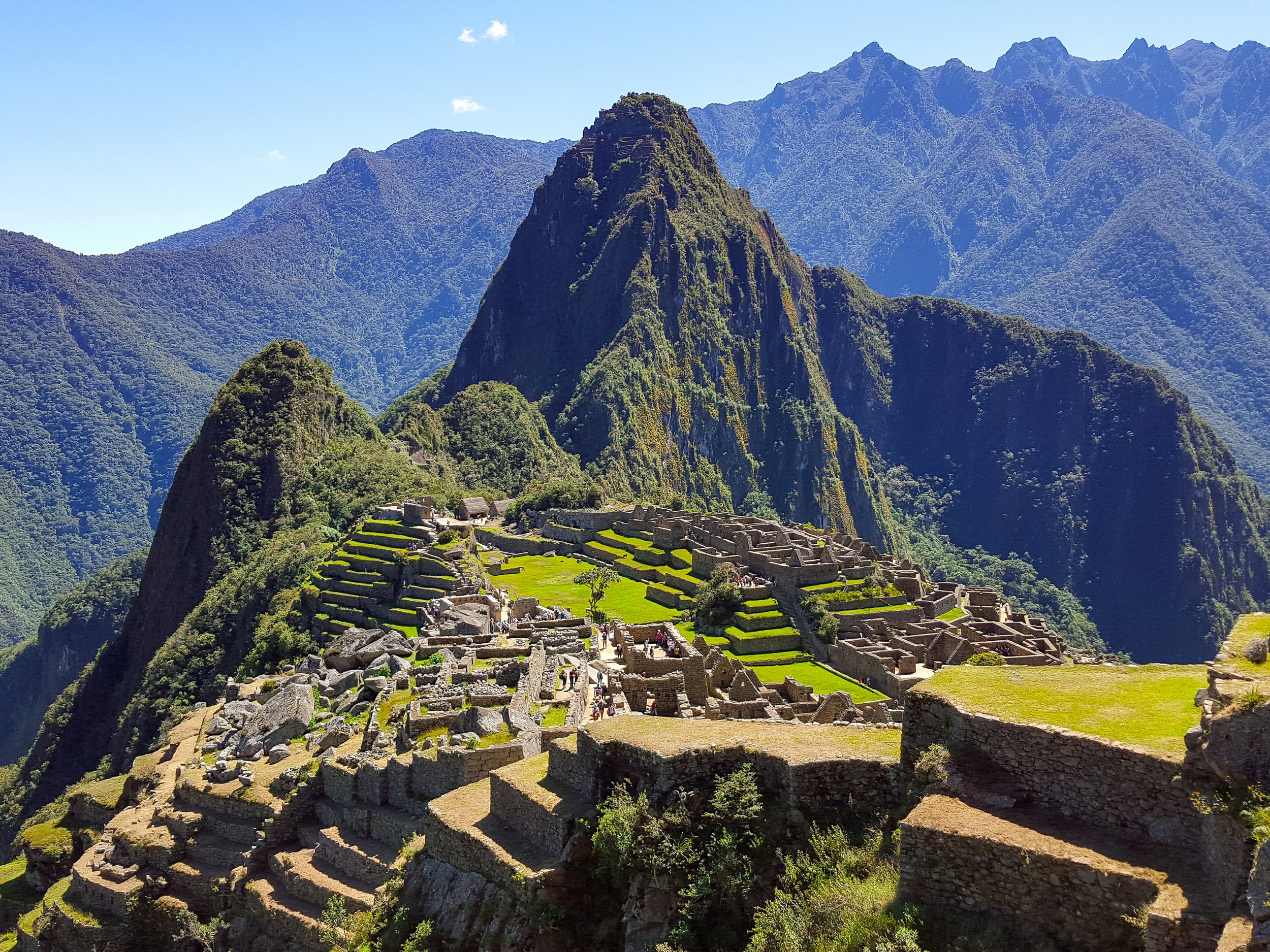
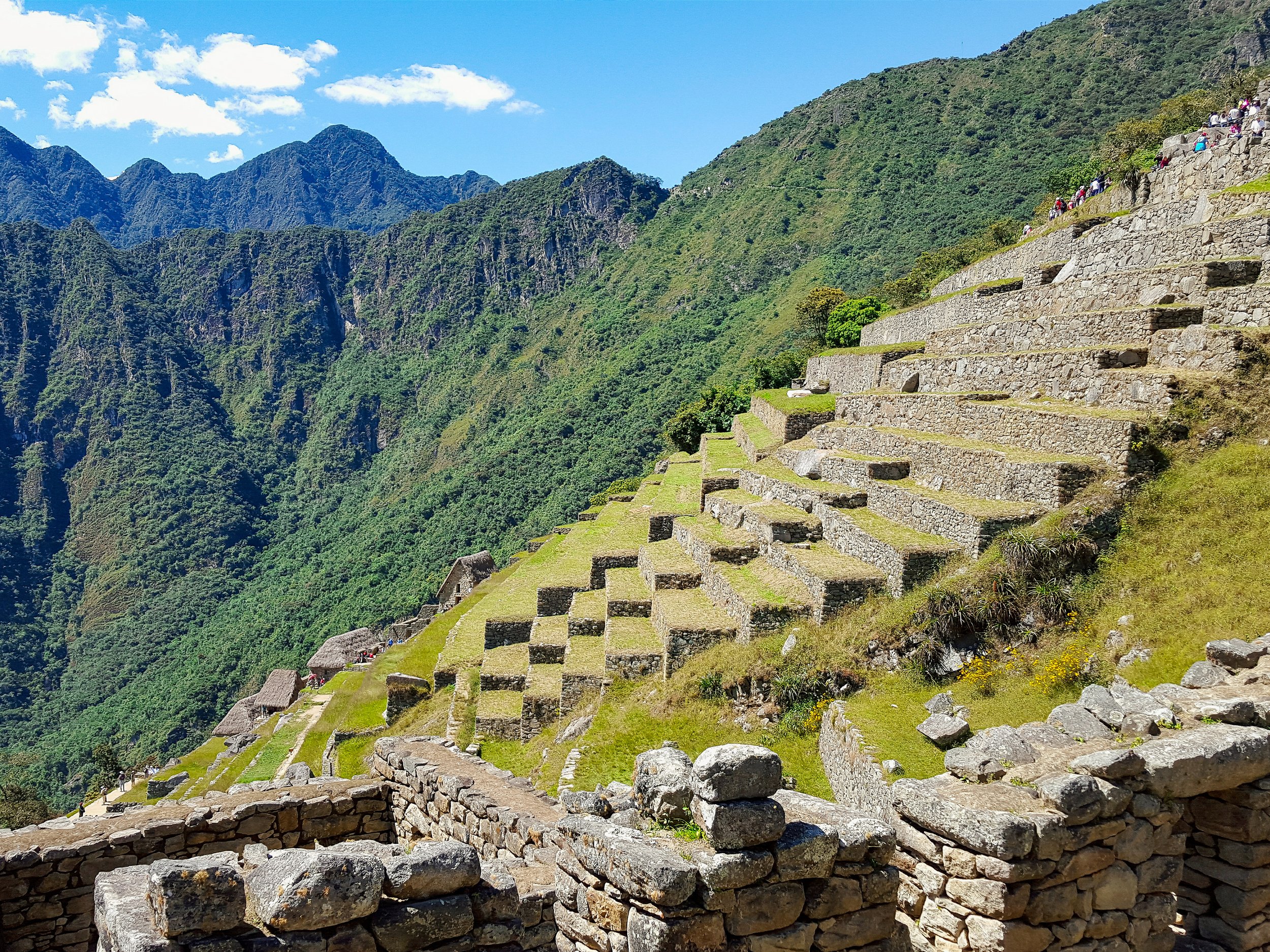
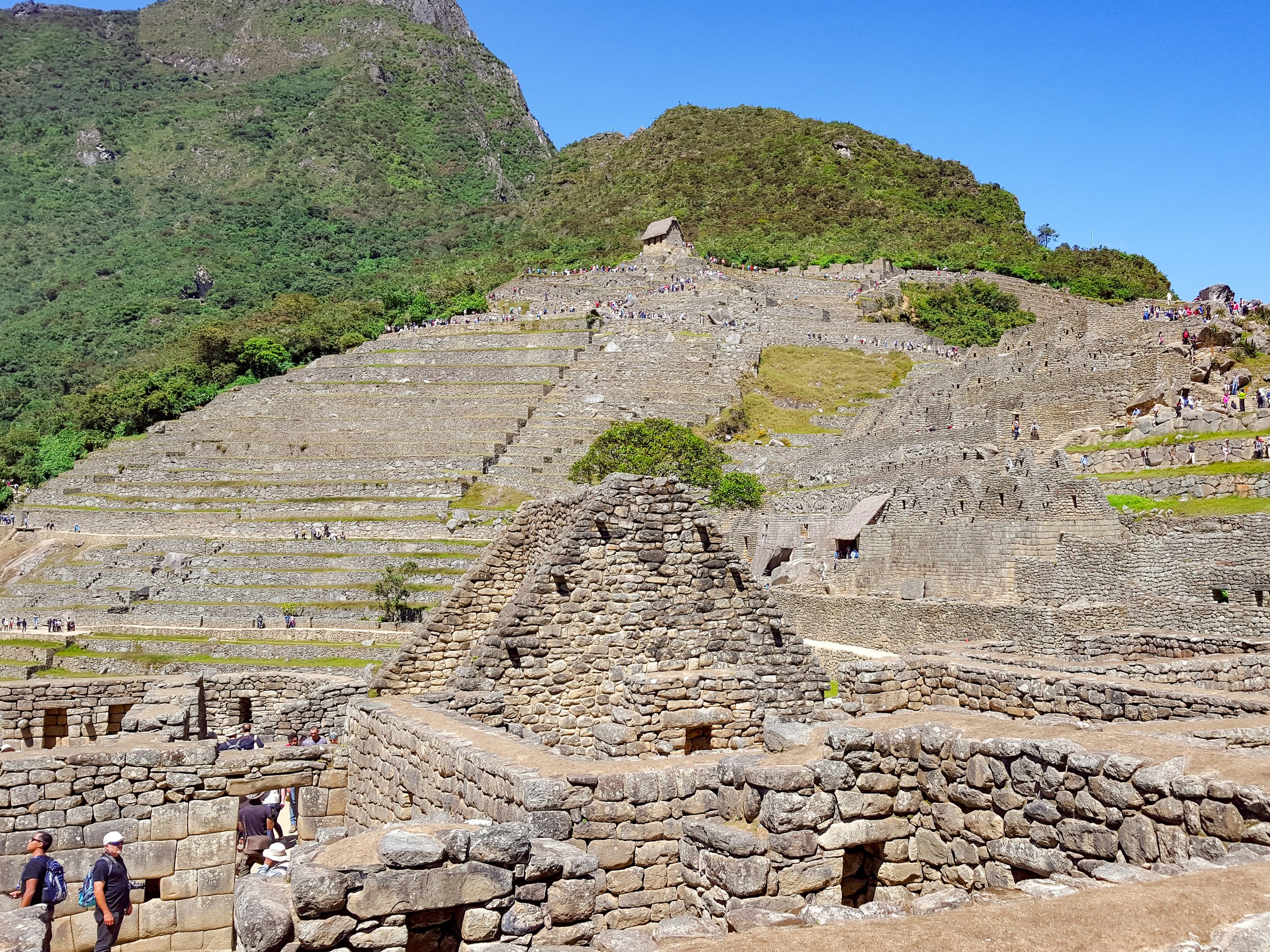
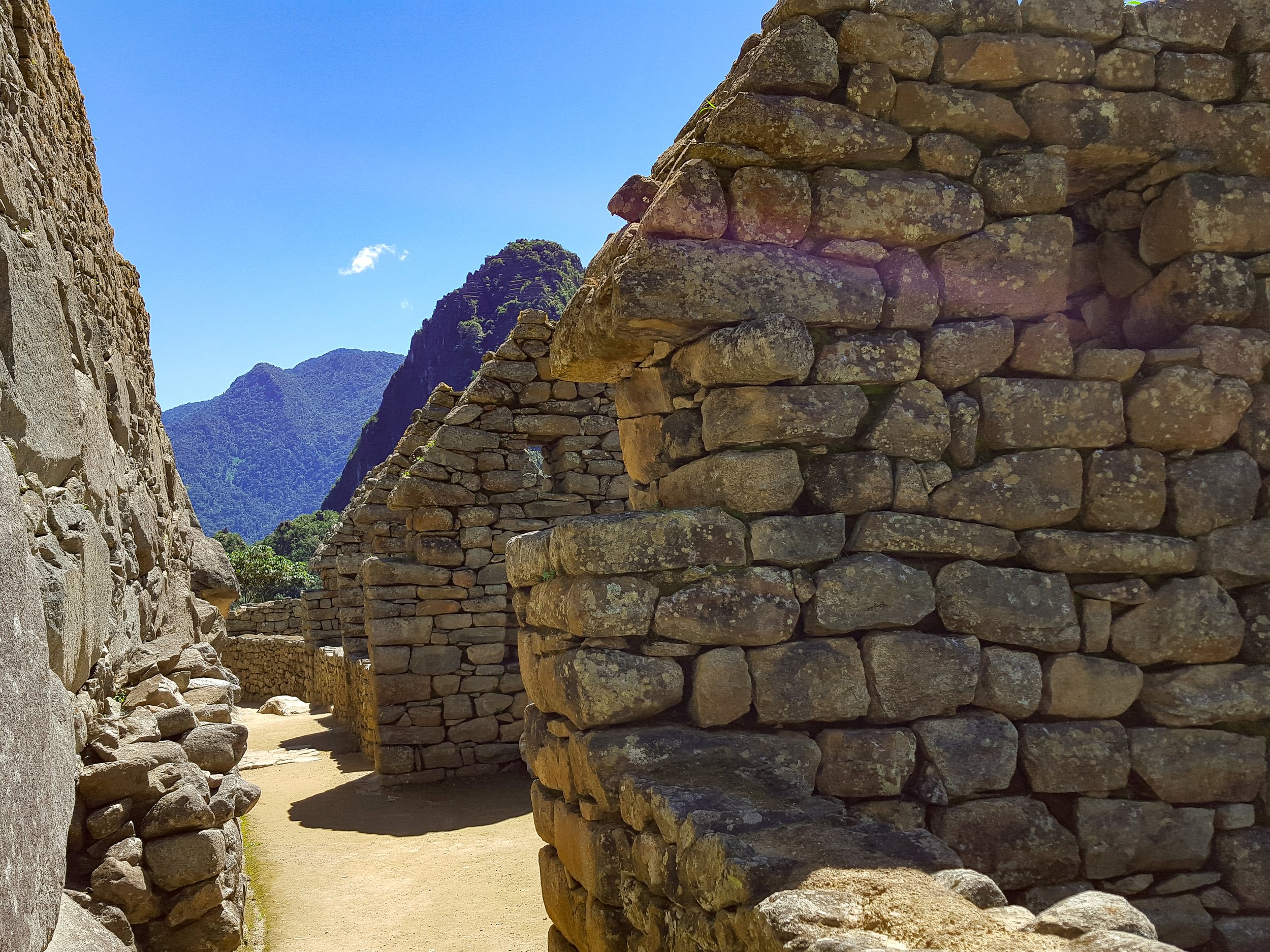
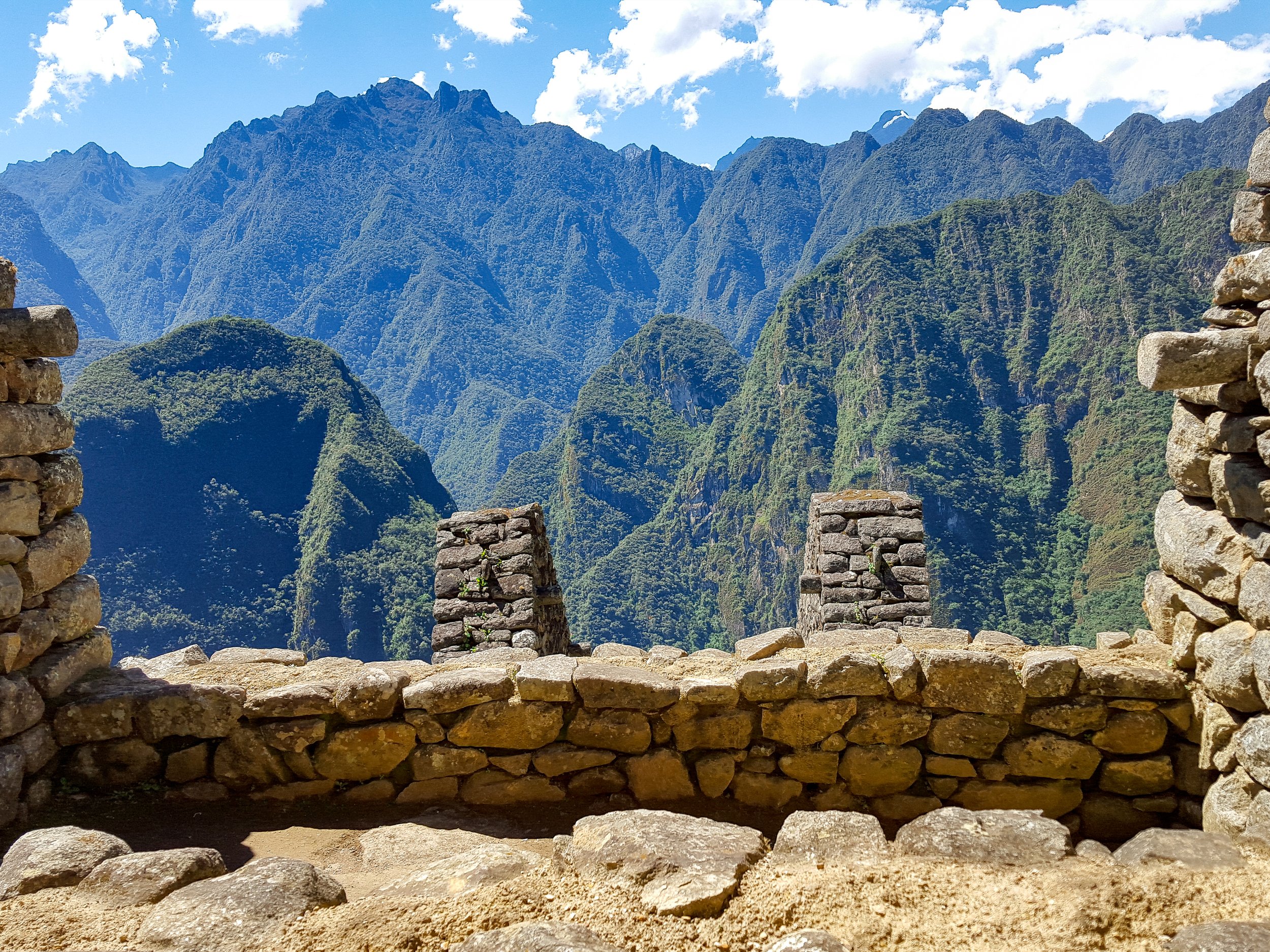
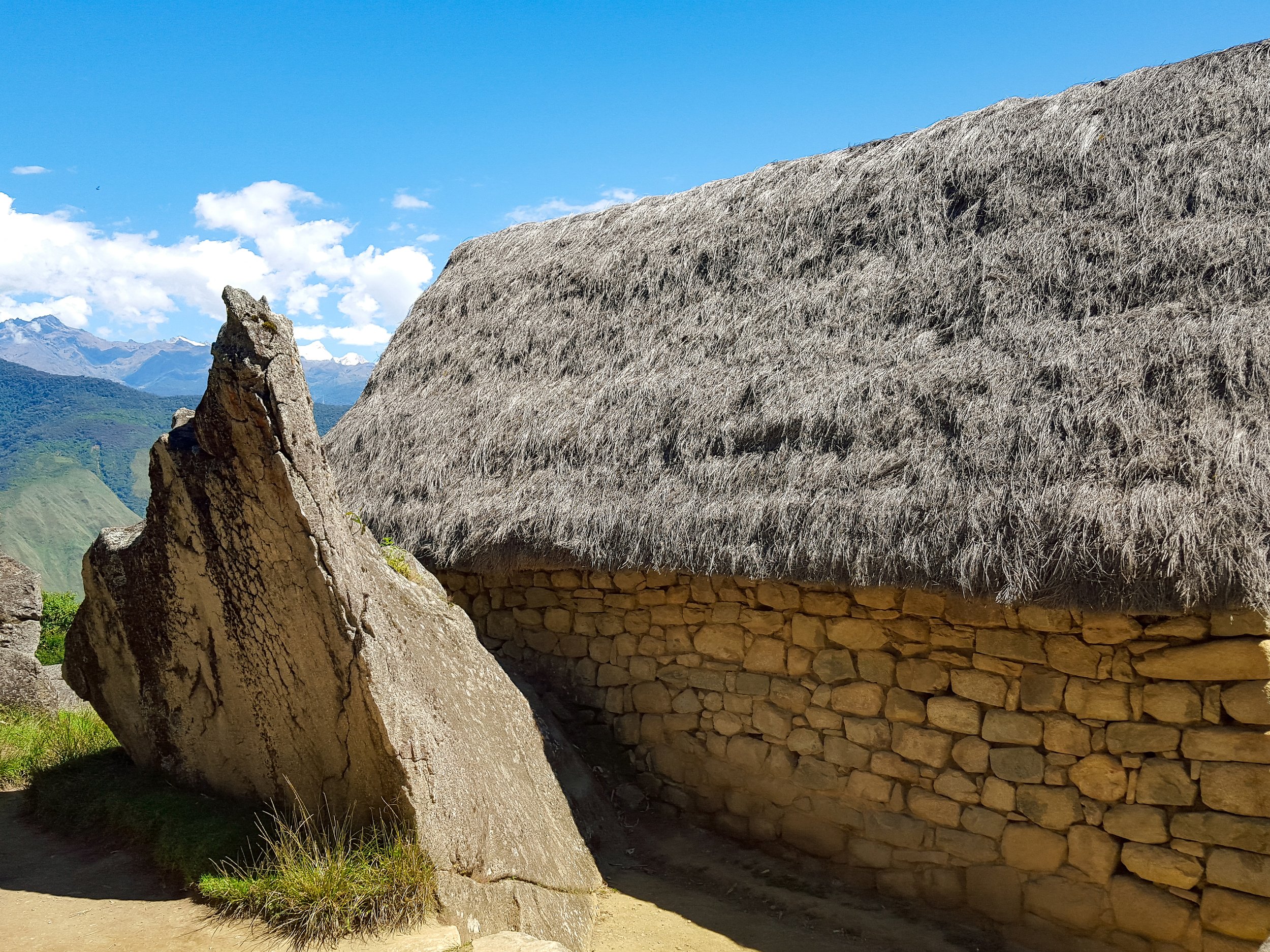
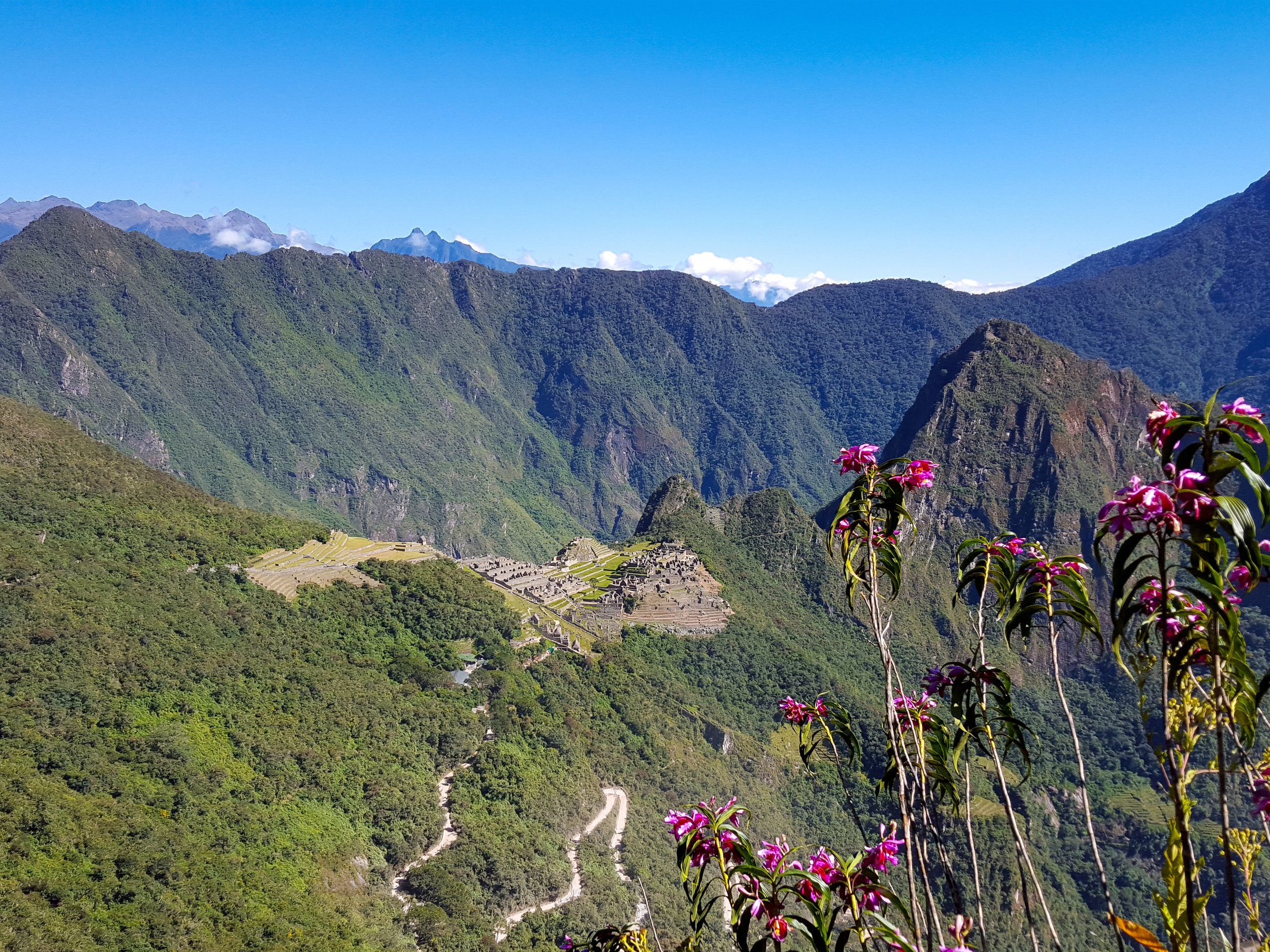
Machu Picchu
Hidden for centuries, Machu Picchu is known as The Lost City of the Incas. The sprawling ruins of the ancient acropolis rest atop a mountain set against the dramatic Andean landscape. The citadel is comprised of residential neighborhoods, layers of agricultural terraces, stone storage structures, ceremonial temples and a central plaza with free roaming llamas. We spent a half day meandering through the ruins of the city, observing it from scenic overlooks and hiking partly along the Inca Trail.
Good To Know:
Access: When we visited in 2016, only 2,500 people were allowed to visit Machu Picchu per day. At the time, we were free to access most areas of the ancient city. As of 2024, the limit has been increased to 4,500 people and “circuits” have been established, regulating the specific areas visitors can access.
Tickets: Book tickets months ahead of time. Given the new “circuits”, it’s best to visit over a two day period booking multiple tickets to see more of the ancient city.
Inca Rail: One of the train companies offering roundtrip rides between Cusco and Machu Picchu through the Sacred Valley. The train has a vintage feel with green painted historic carriages and large viewing windows.
Aguas Calientes
The town at the base of Machu Picchu with hotels, restaurants, bars, an artisan market and thermal hot springs.
Mercado Artesanal. A sprawling artisan market with aisles of vendors selling Peruvian textiles, woven goods and souvenirs underneath a corrugated sheet metal roof. We haggled for baby alpaca blanket and hand painted coasters.
Baños Termales. The thermal hot springs the town of Aguas Calientes is named after. We came here late in the afternoon to relax is the warm water pools before catching our train back to Cusco.
Imperio de los Incas. A road along the Urubamba River with restaurants, bars and hotels overlooking the rapids and riverbank.
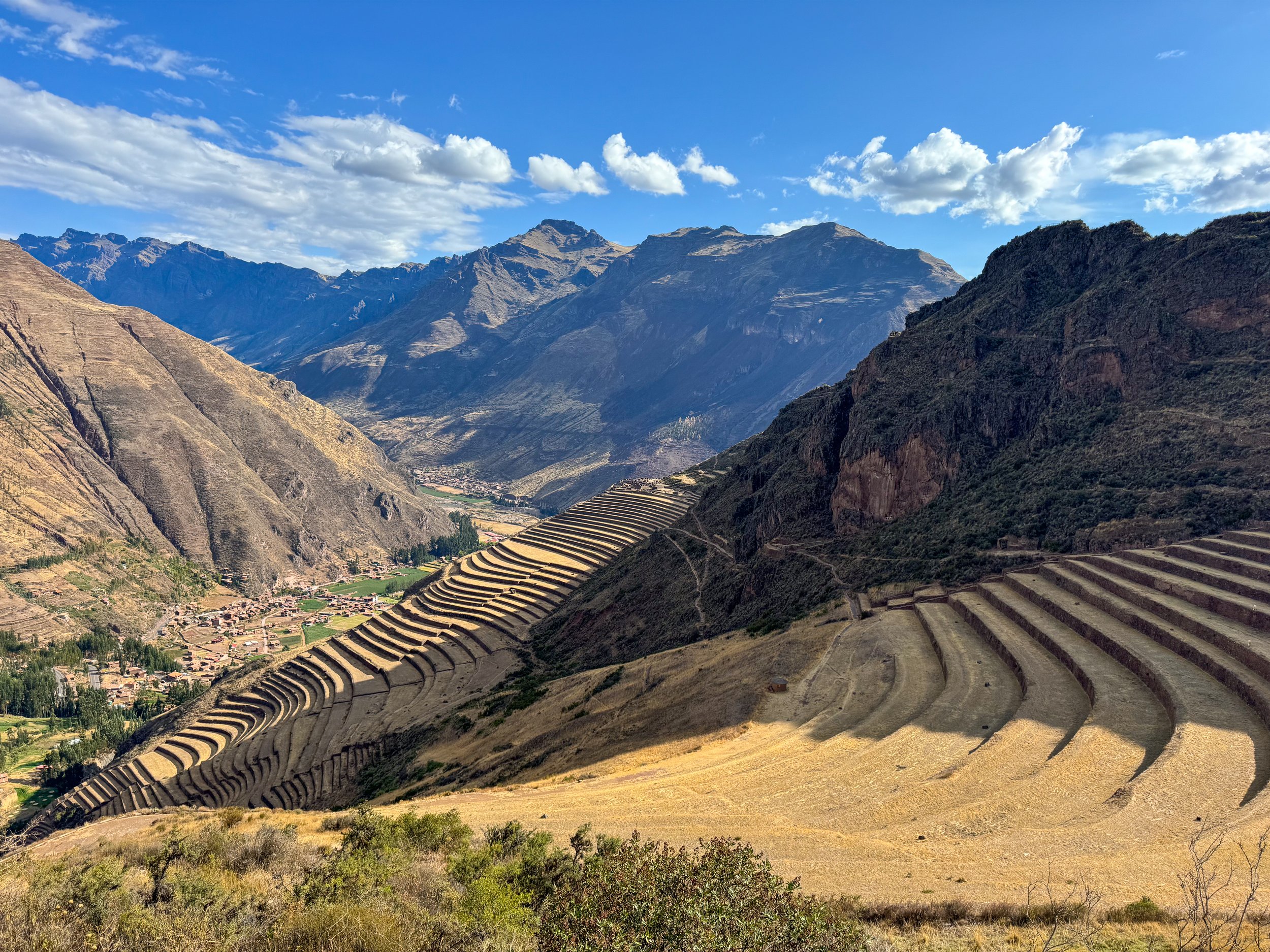
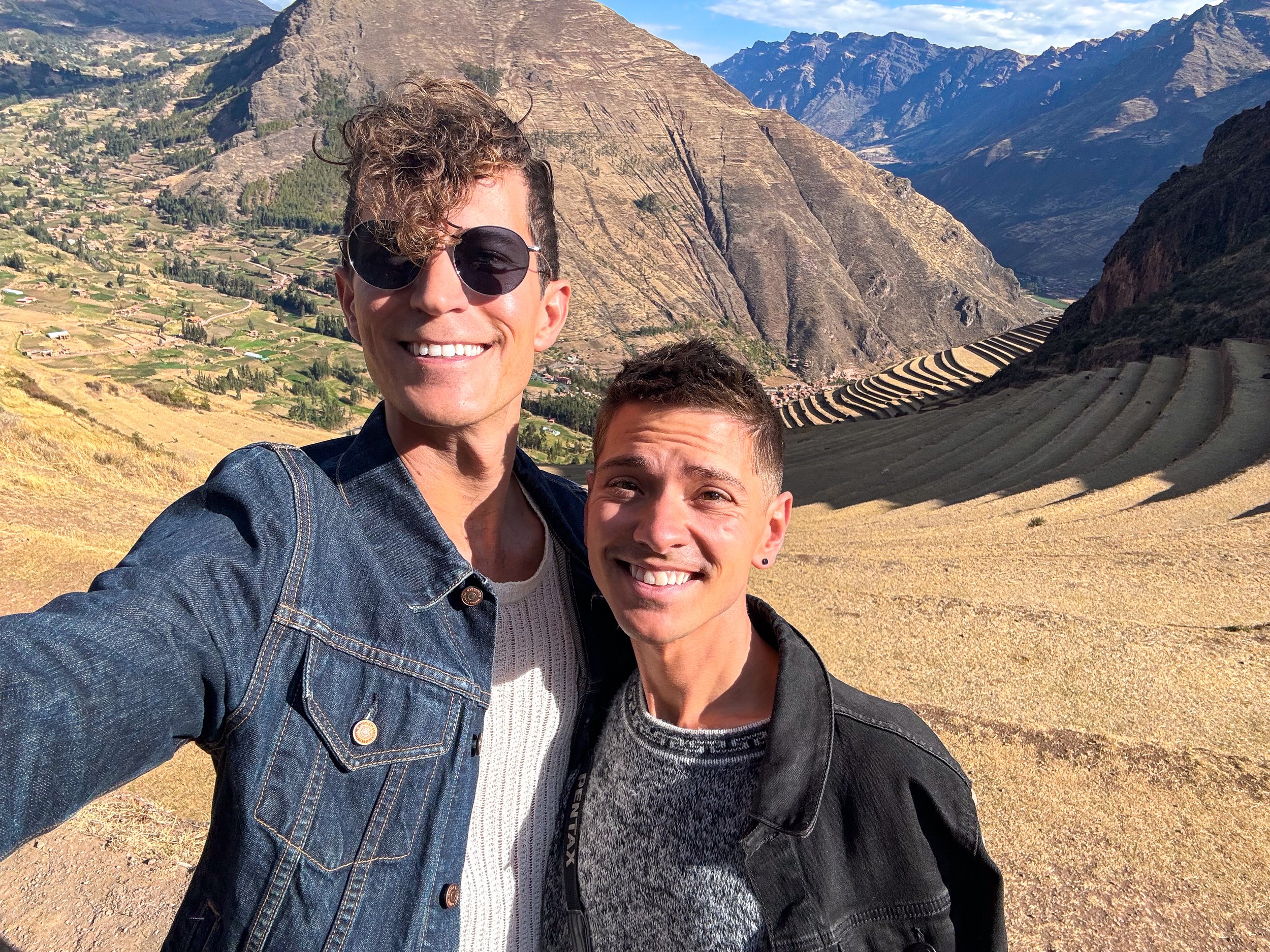
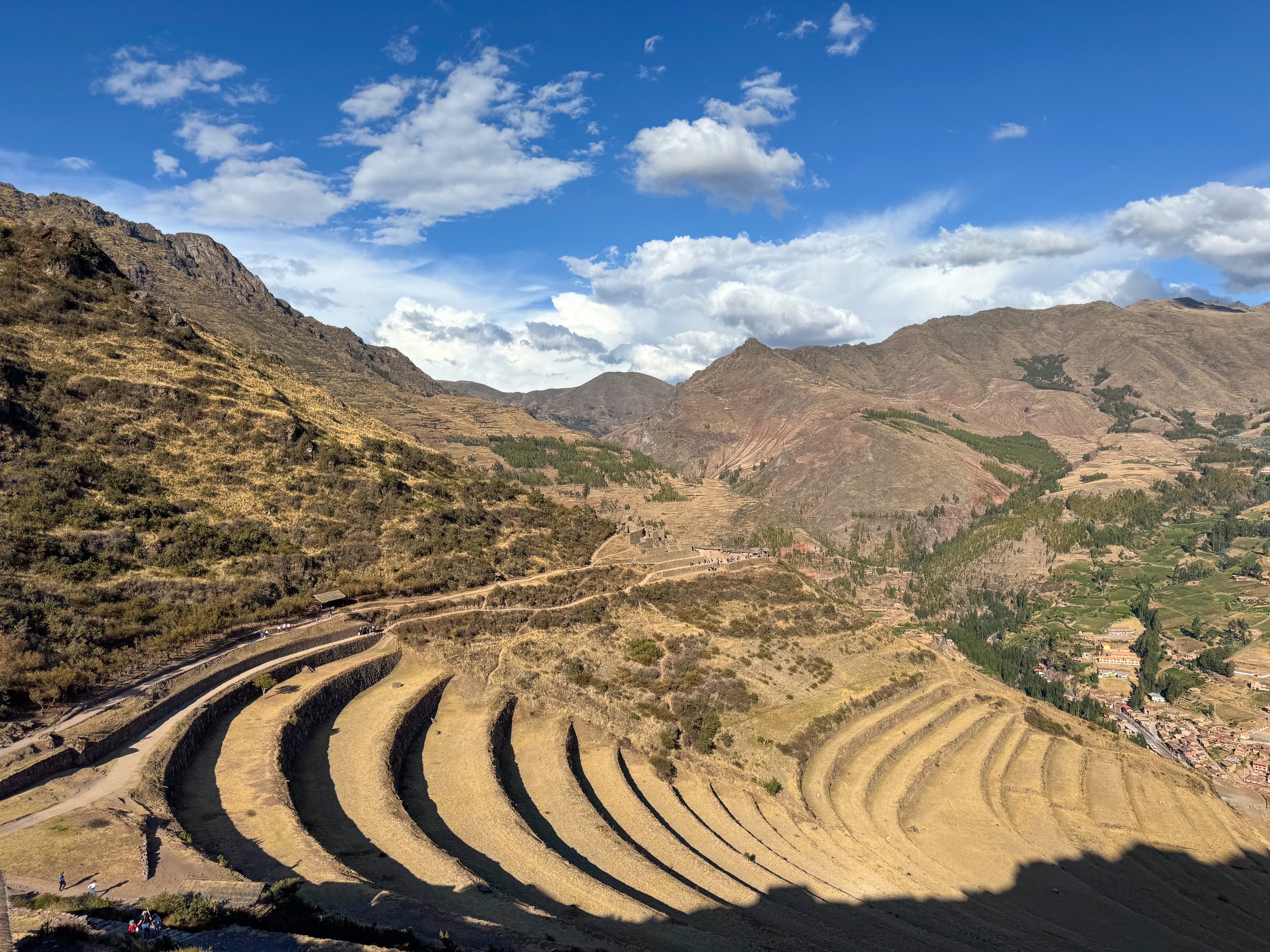
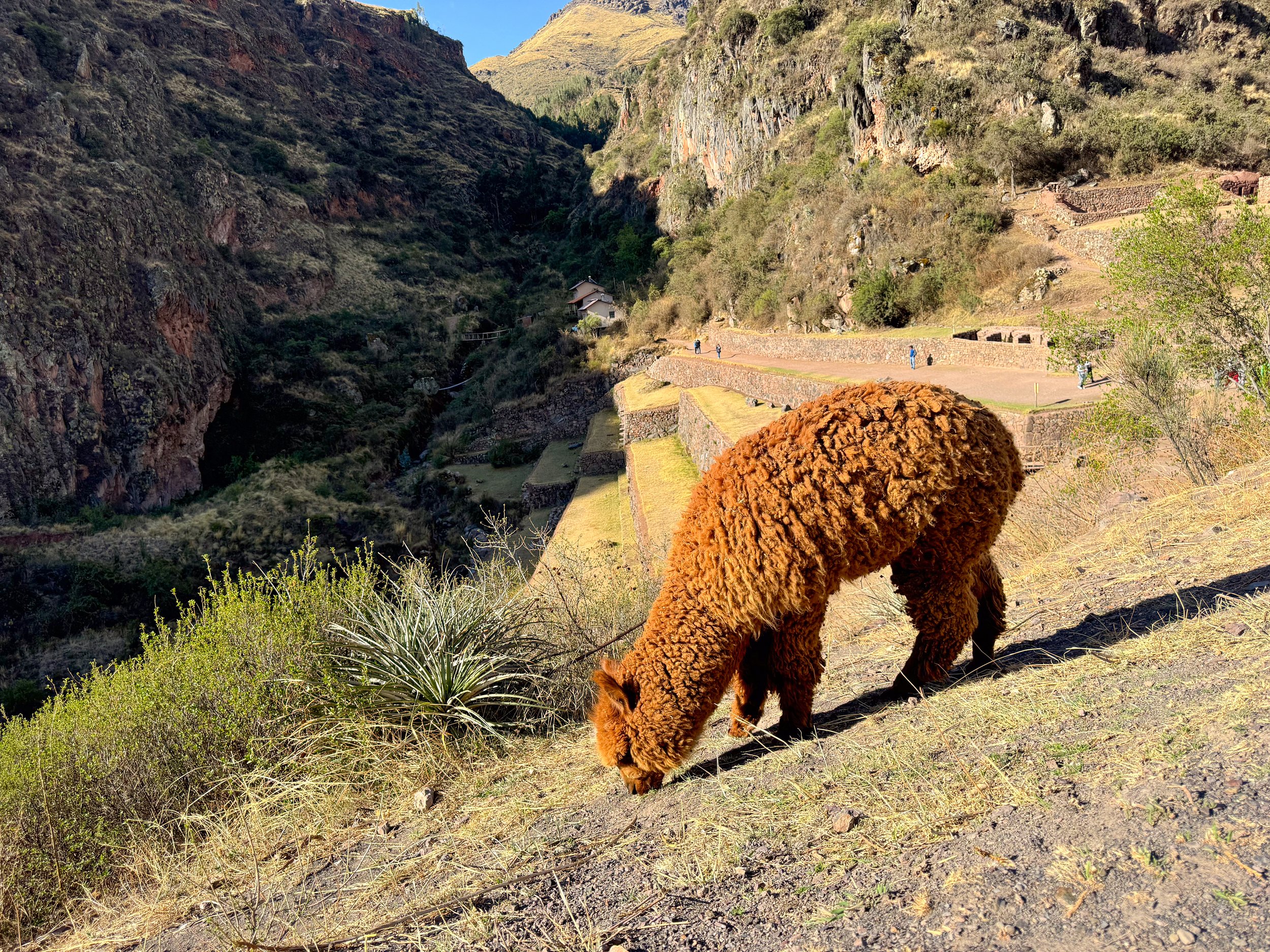
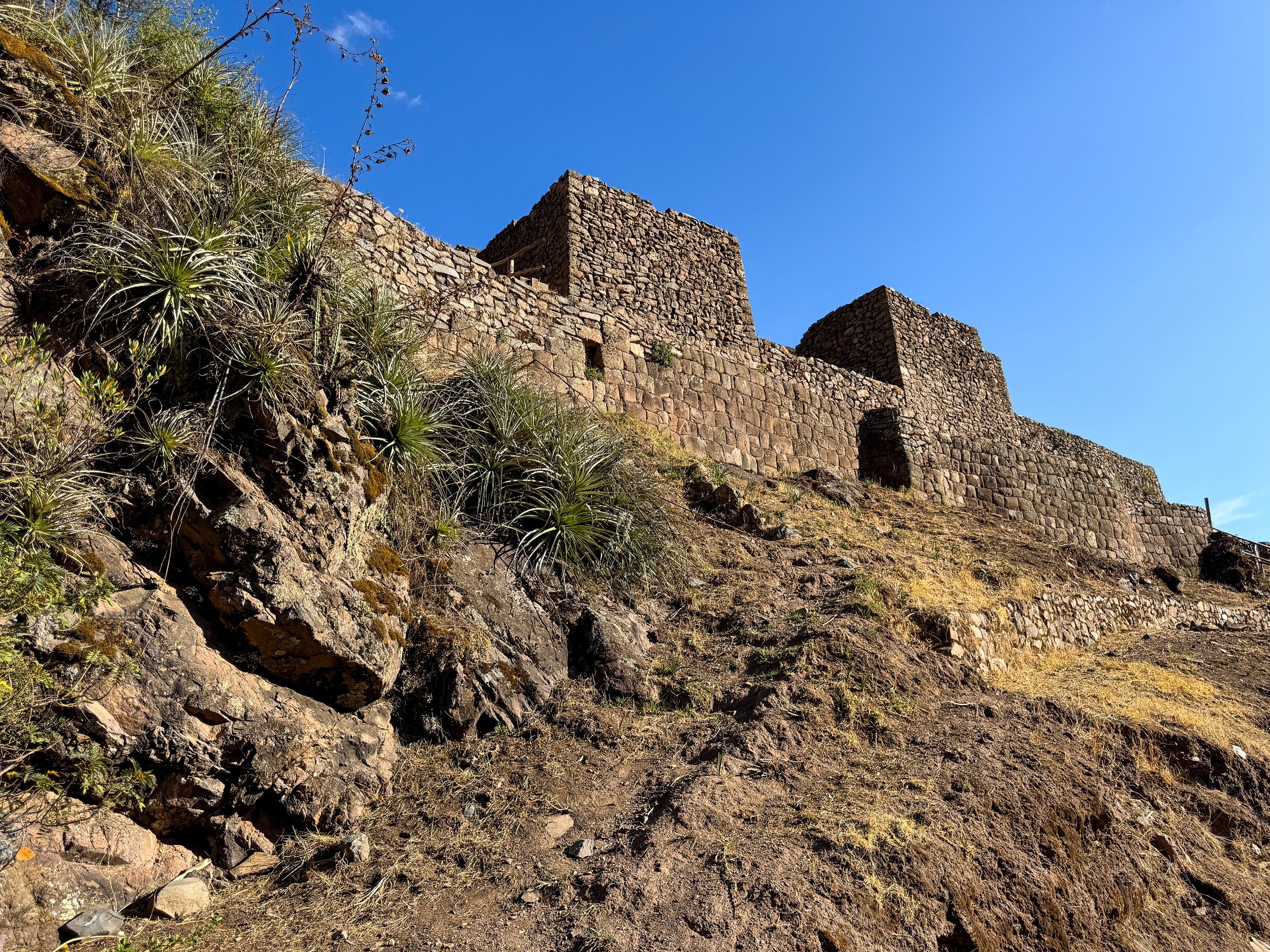
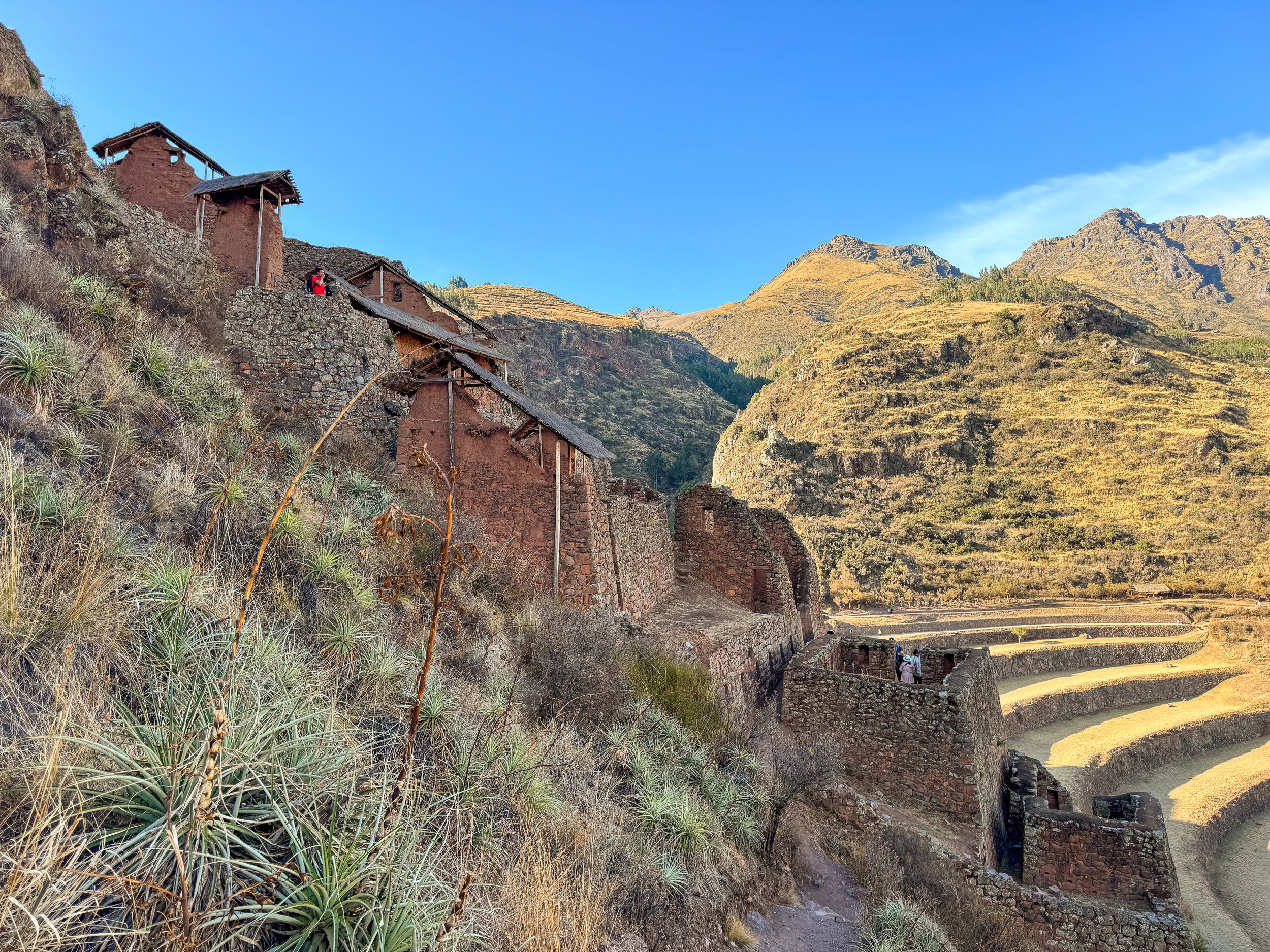
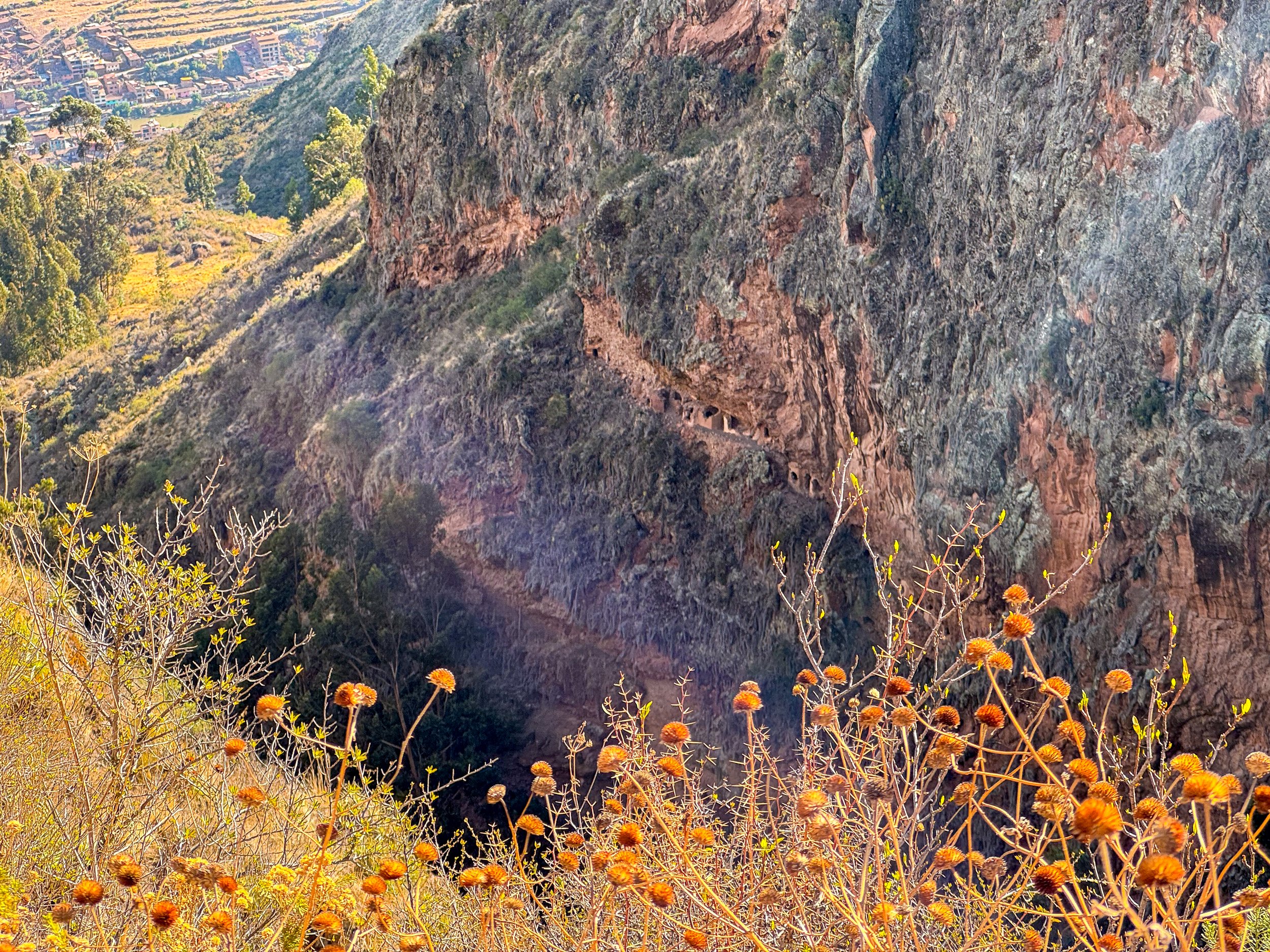
Sacred Valley
The Sacred Valley follows the Urubamba River from Cusco to Machu Picchu past some of the Incan Empire’s most important sights including: Pisac, Salineras de Maras, Moray Terraces and Ollantaytambo. We took a full day private tour from Cusco that brought us to all four sights. Book here!
Pisac Ruins
The Pisac Ruins are home to sprawling agricultural terraces covering the hillside leading to the ruins of a mountaintop city with a maze of stone buildings and staircases leading to its summit overlooking the valley. Along the terraces, llamas and alpacas roam free feeding on the grass. Behind the ancient city is a cemetery built into the vertical cliff with holes where the Incas would bury their dead.
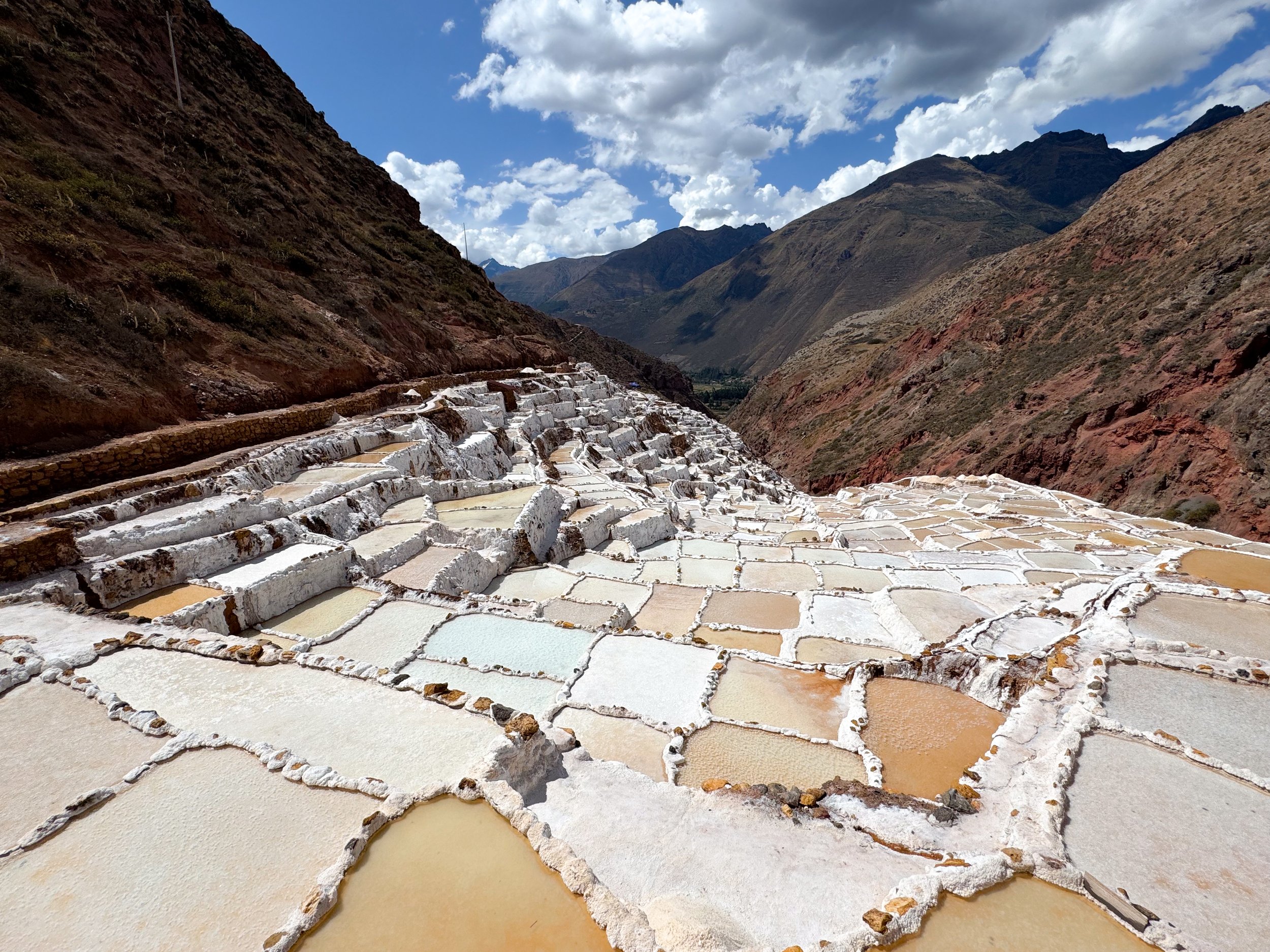
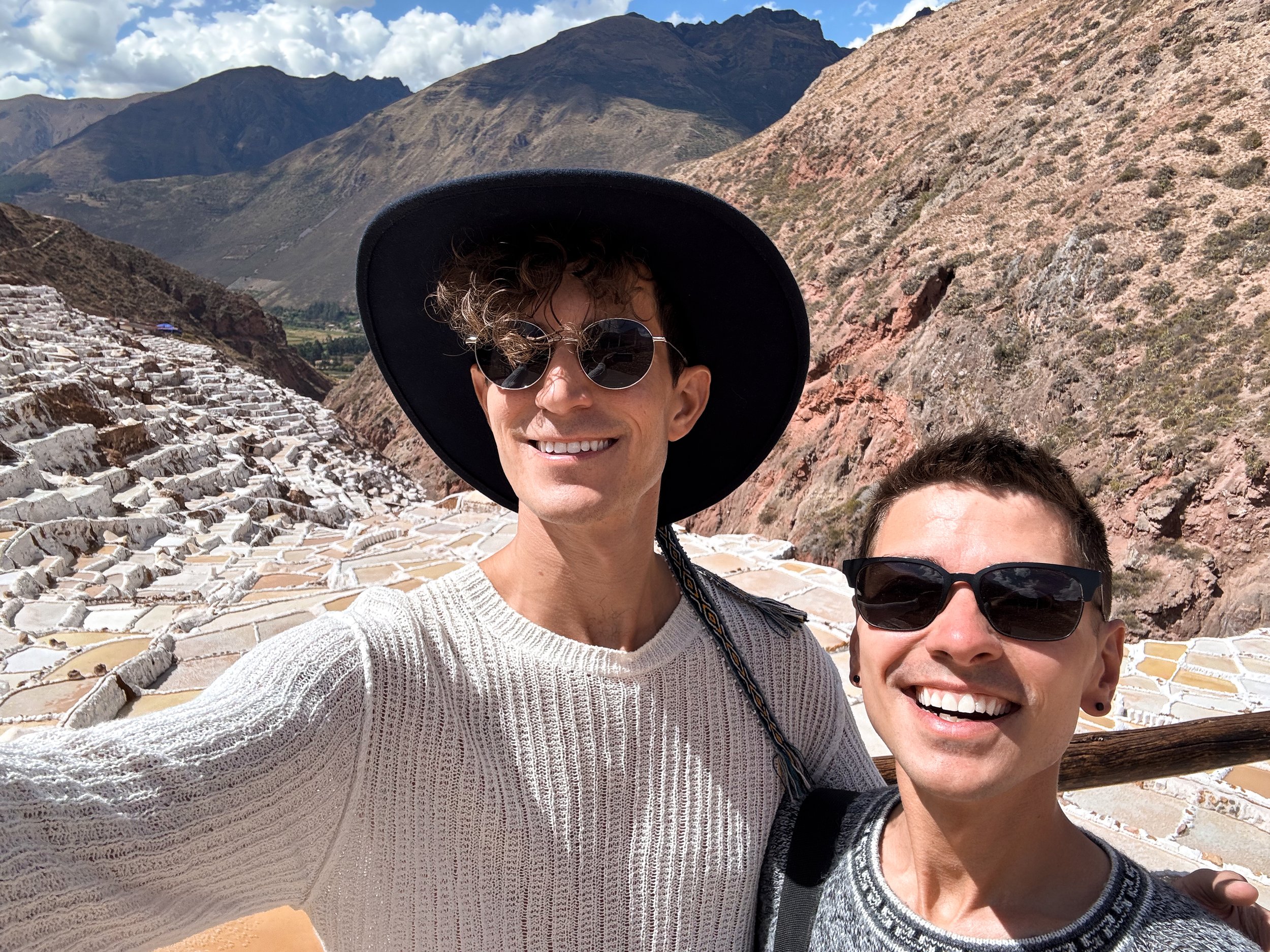
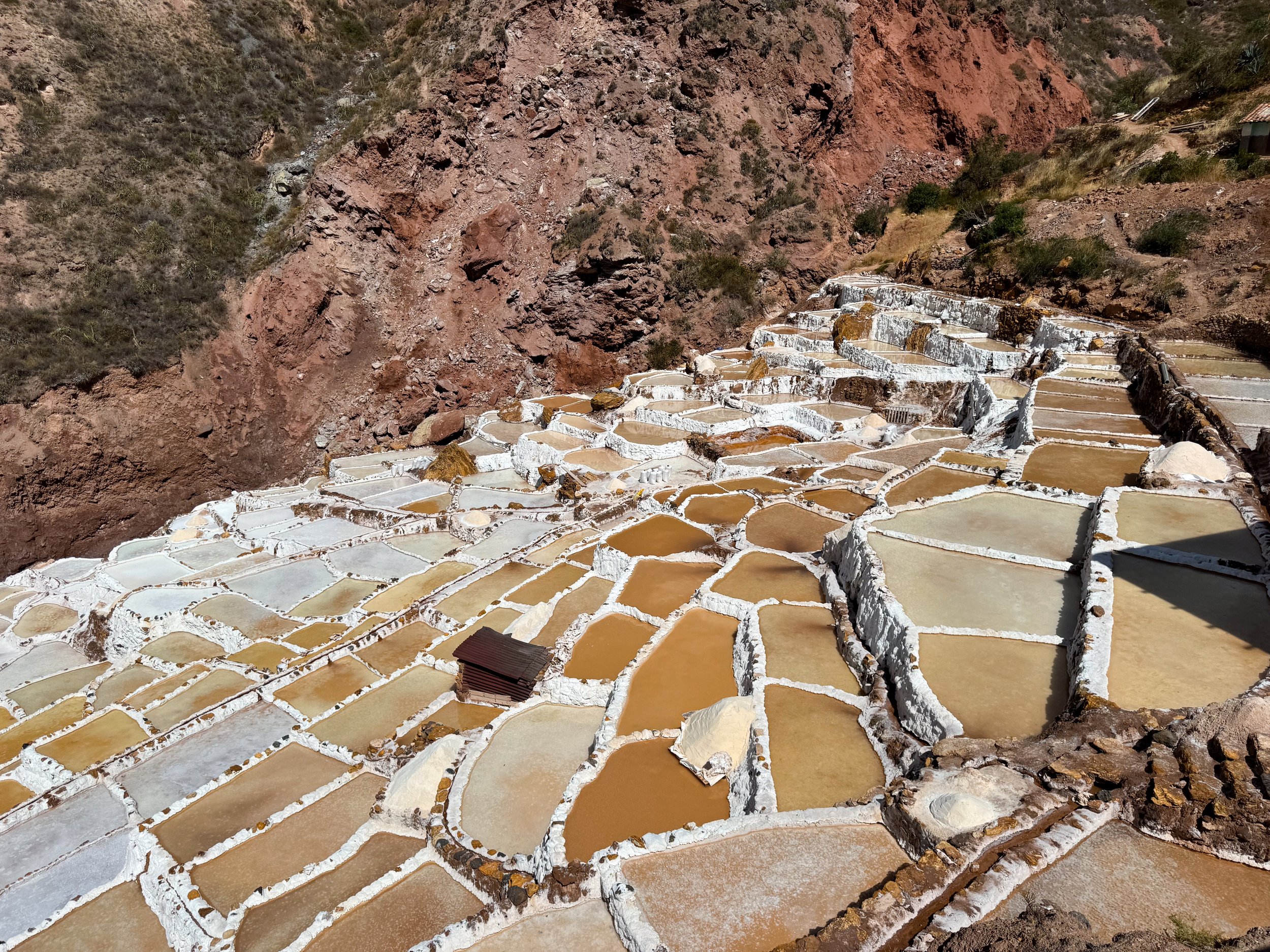
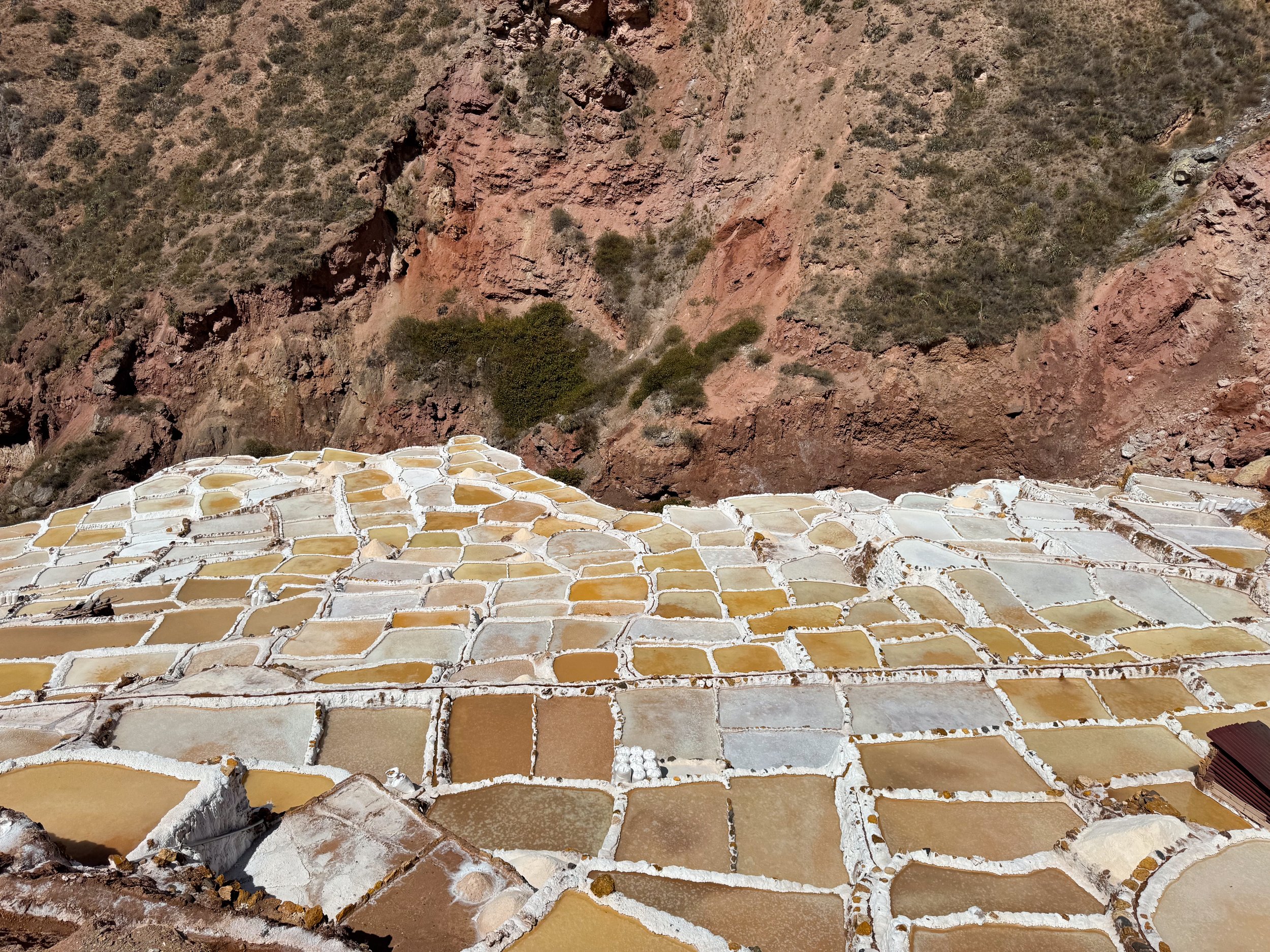
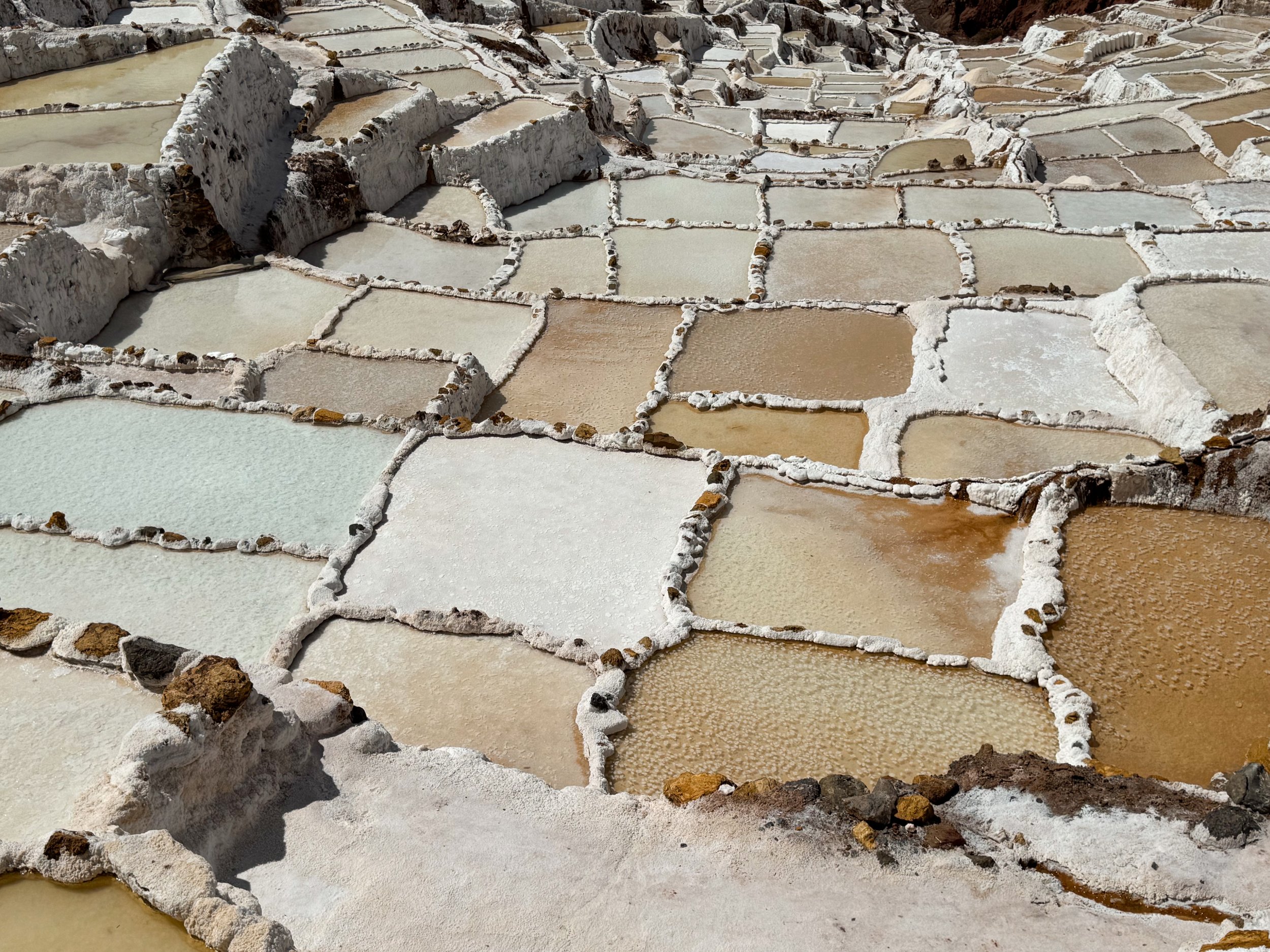

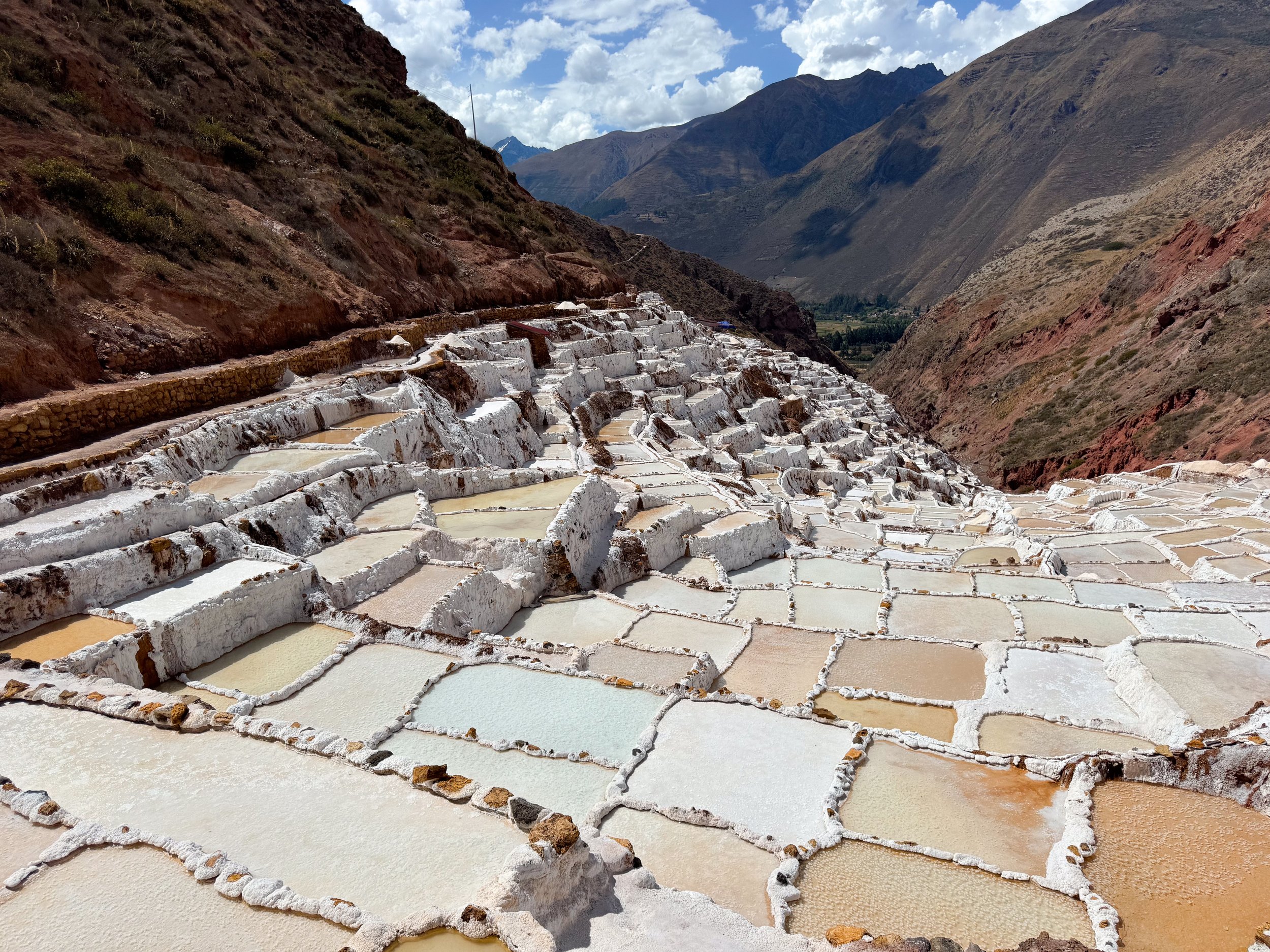
Salineras de Maras
Salineras de Maras is a series of terraced salt pools ranging in color from white to light blue, beige and brown with thin layers of salty spring fed water covering their surfaces. Many of the terraces pre date the Incans and are still in use today for harvesting salt. There are routes with overlooks above the terraces to admire their beauty & structure.
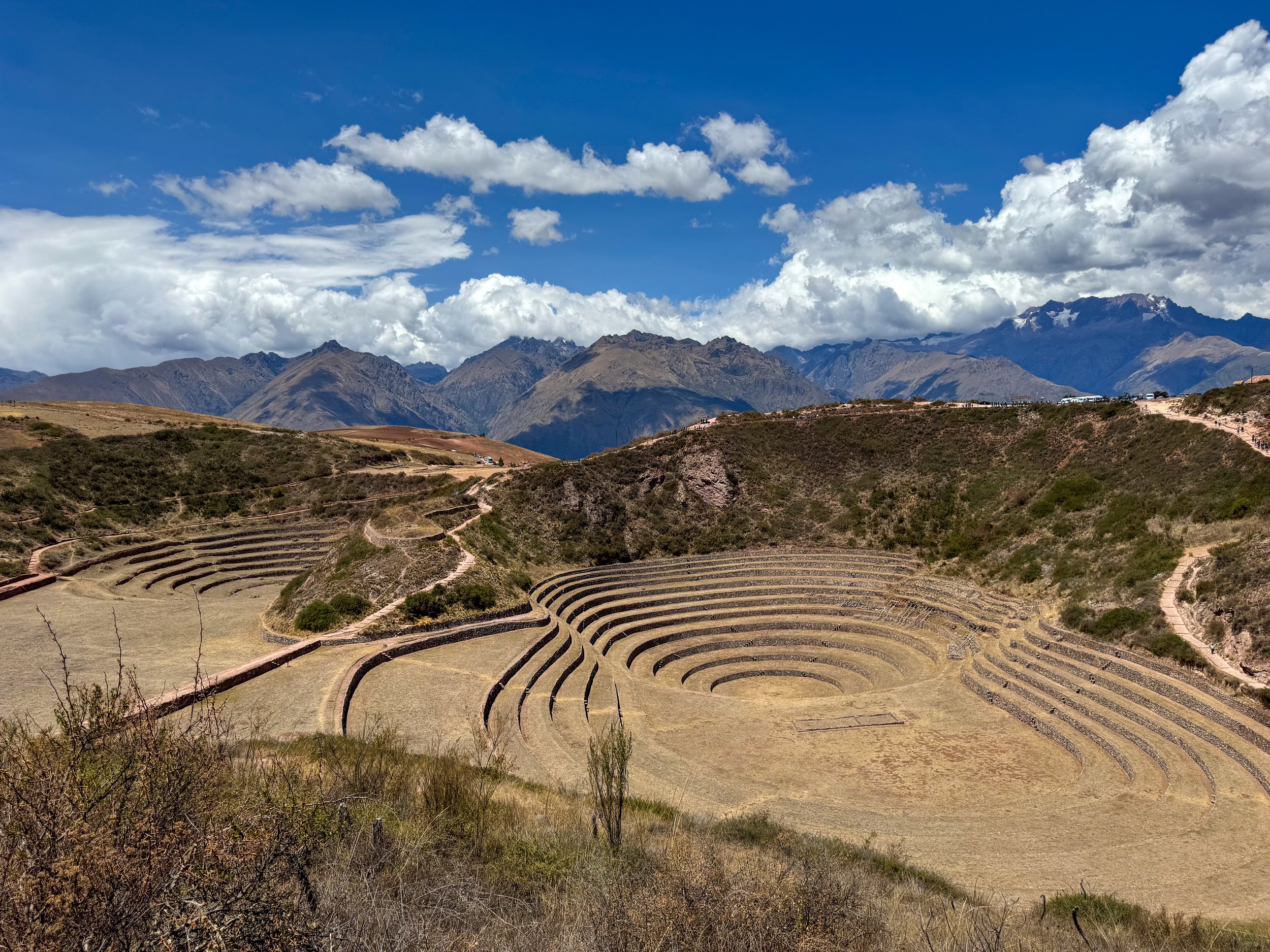
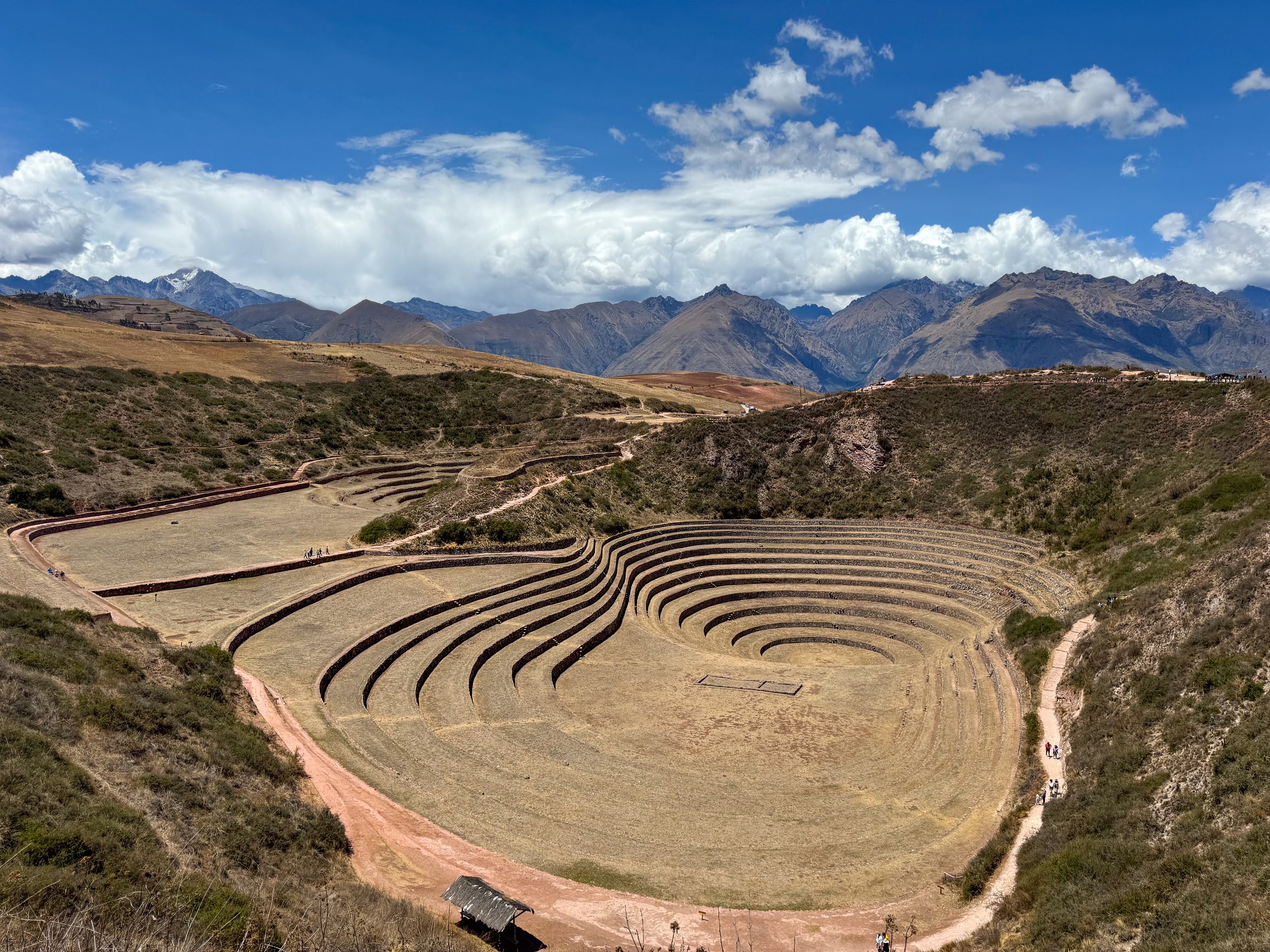
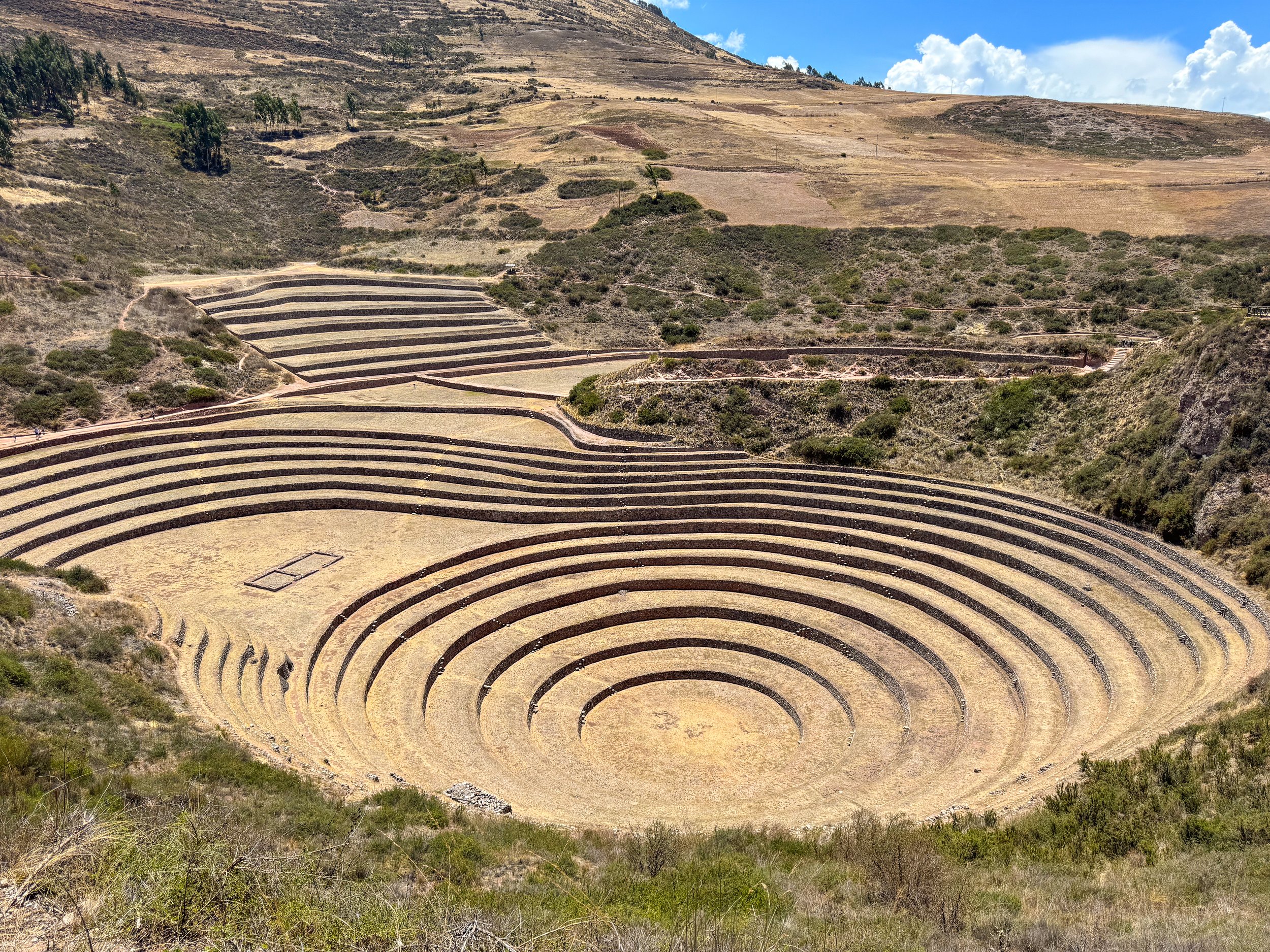
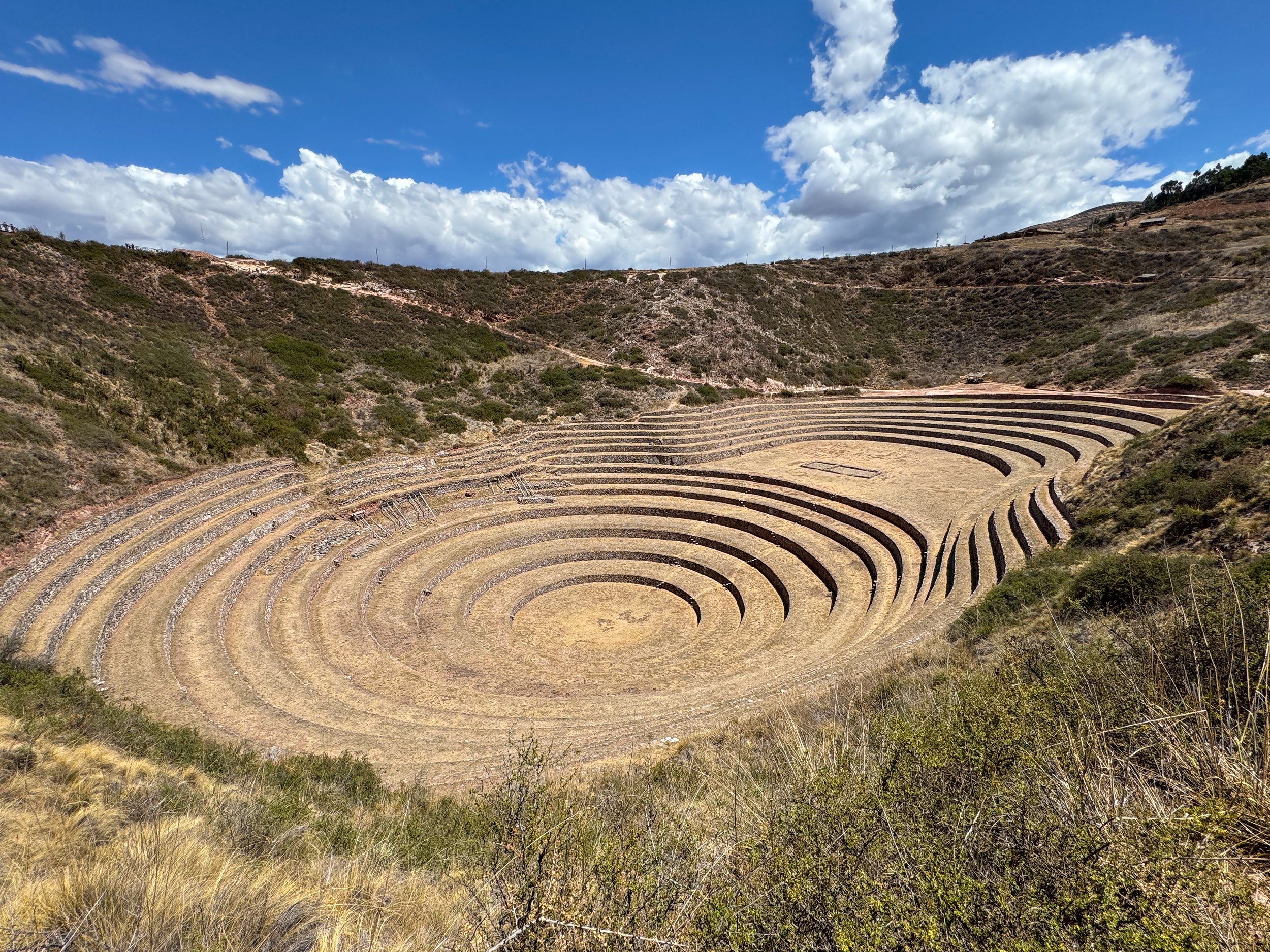
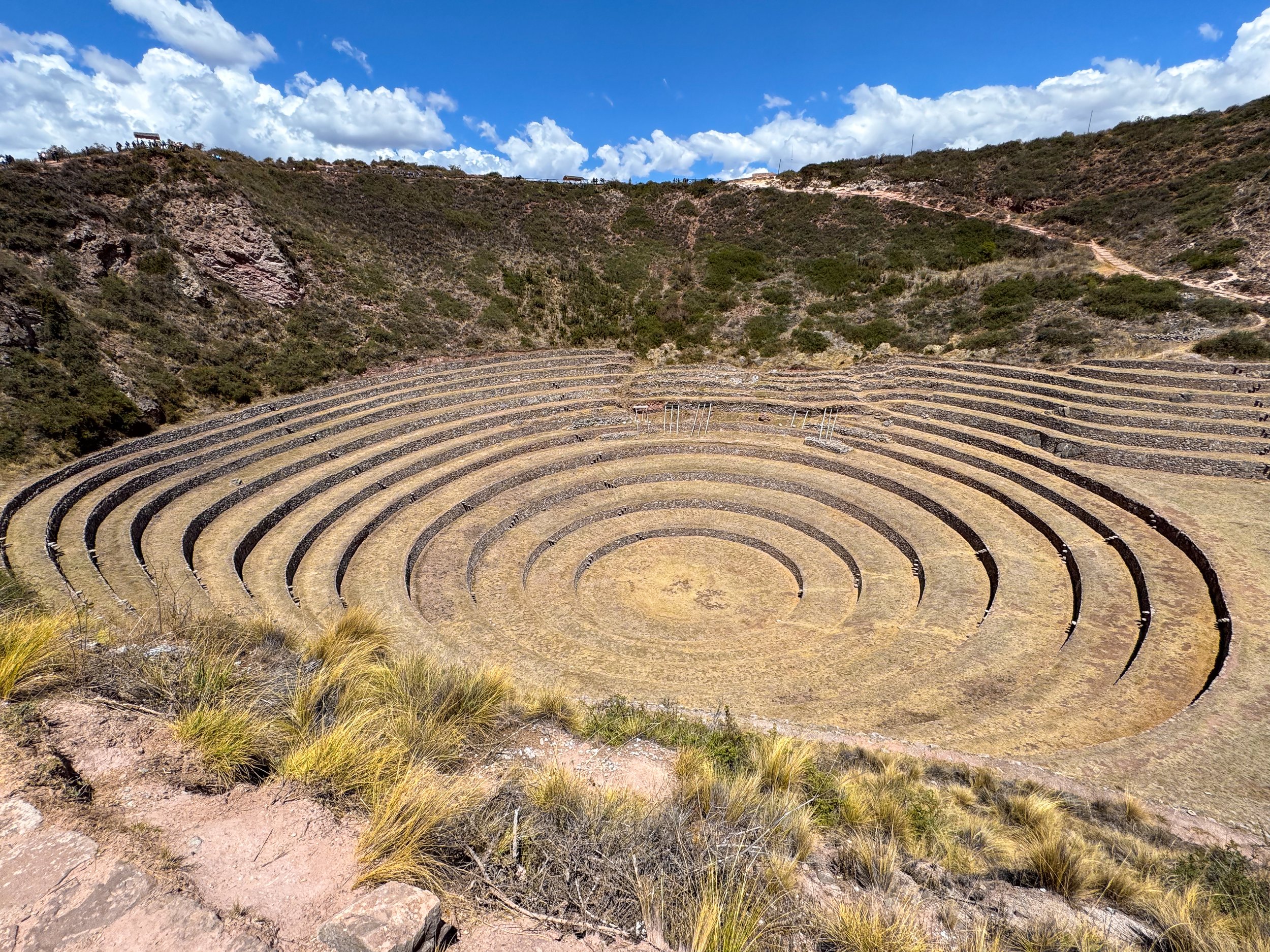
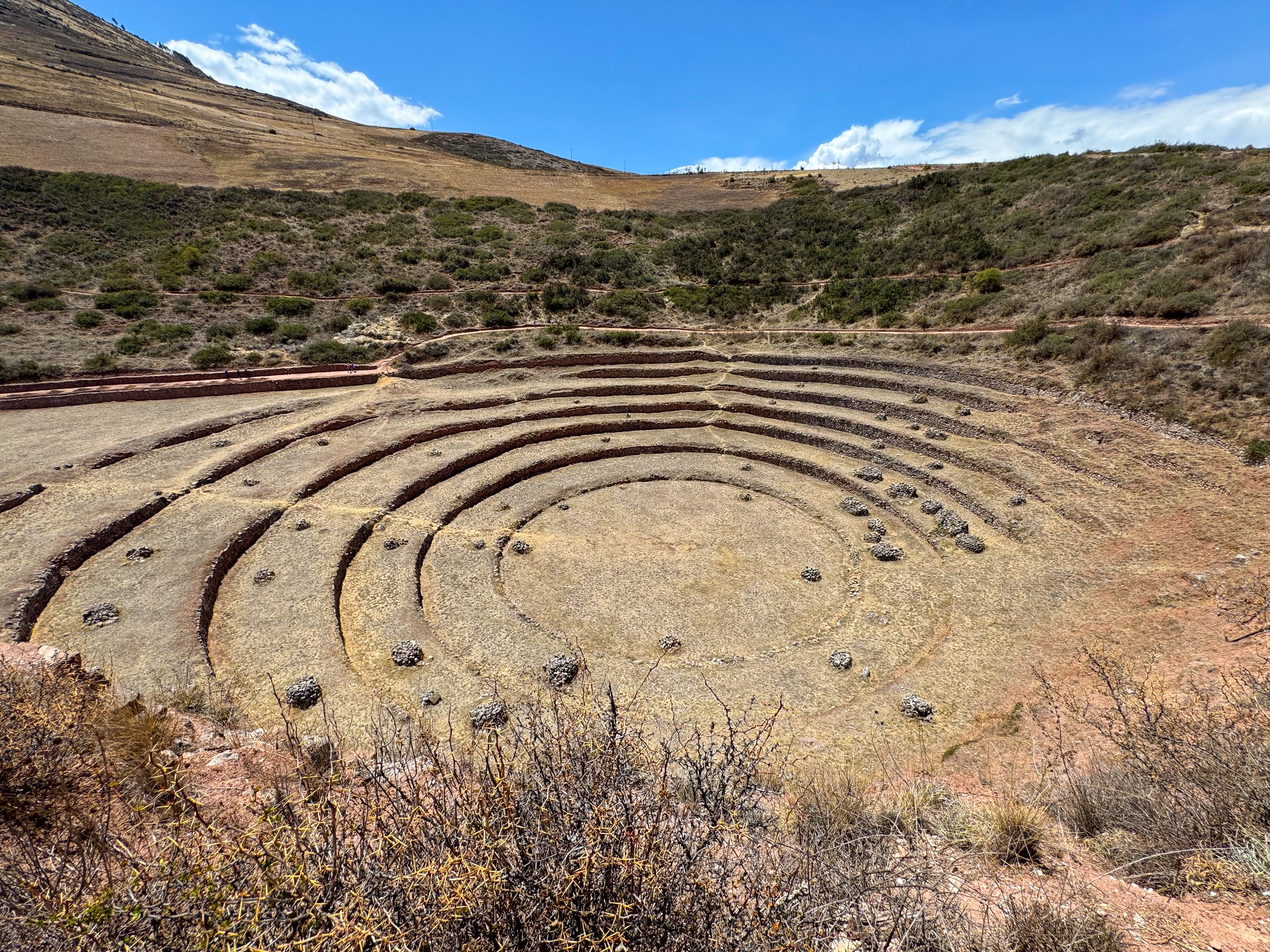
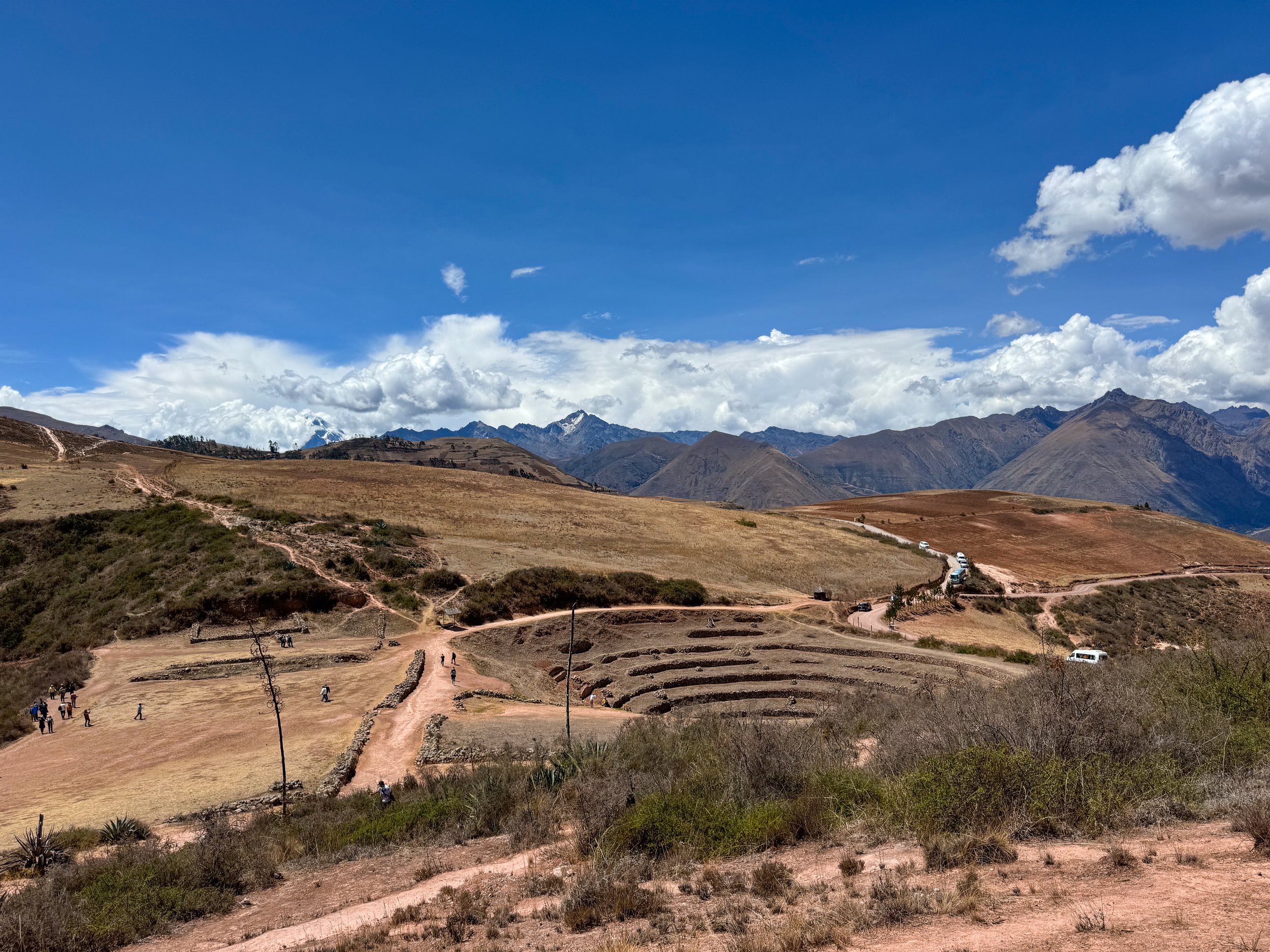
Moray Terraces
The Moray Terraces are series of circular and organic agricultural terraces built into a mountain valley by the Incans to test crop production. We walked around the terraces, following a series of trails that weave through them with views of the snow covered Andes Mountains in the background. The largest terrace is restored while the two small ones remain ruins.
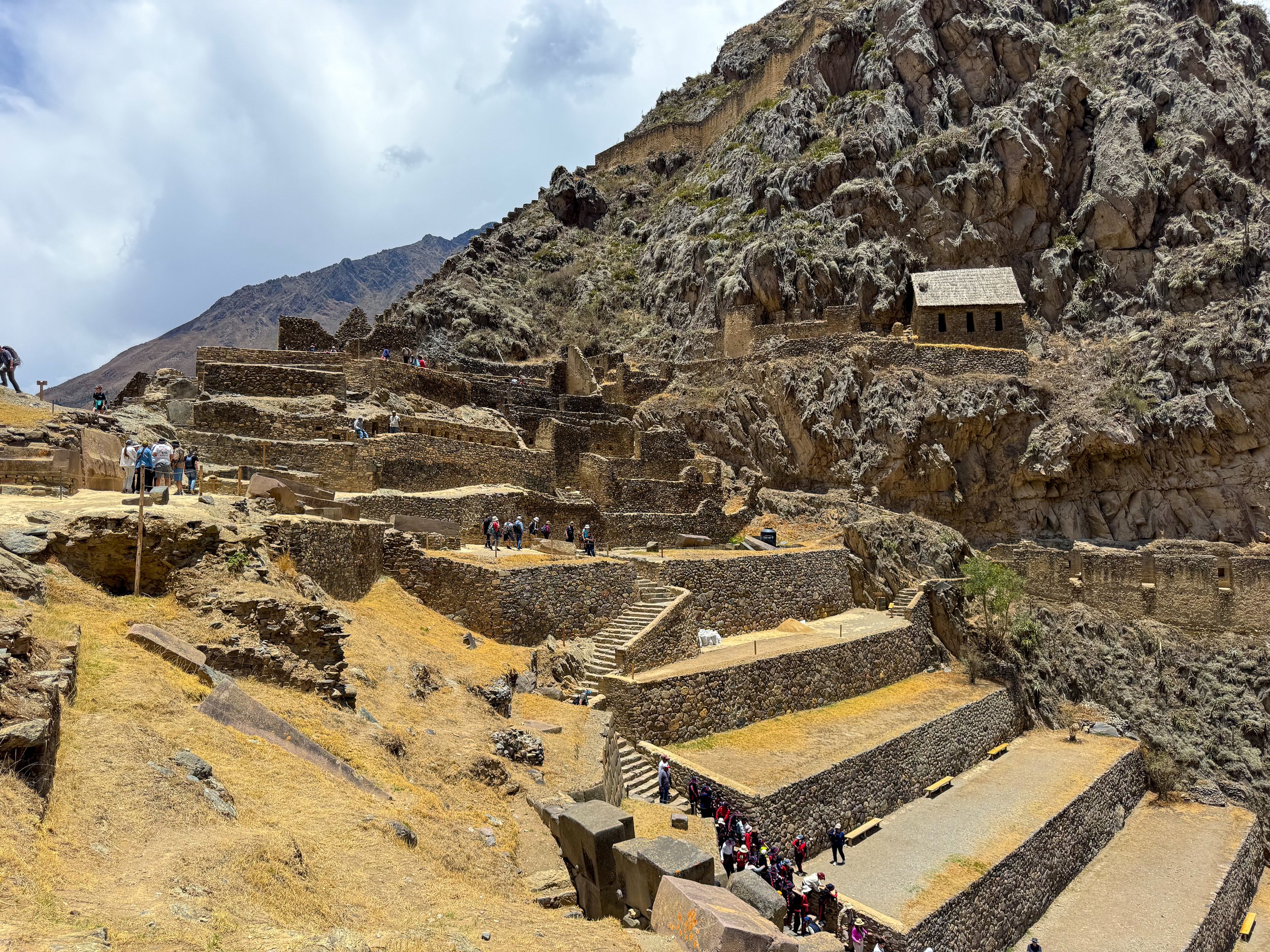
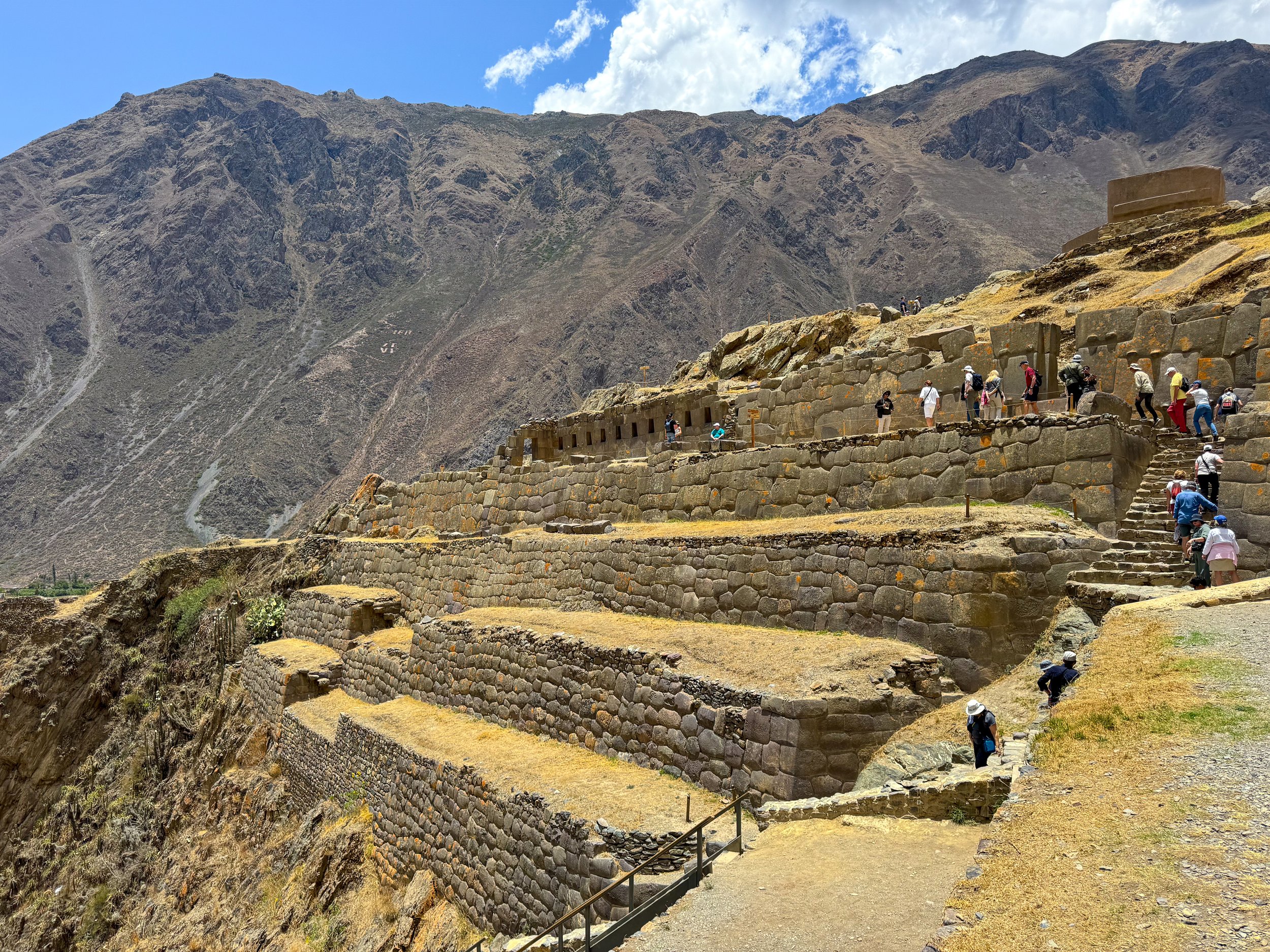
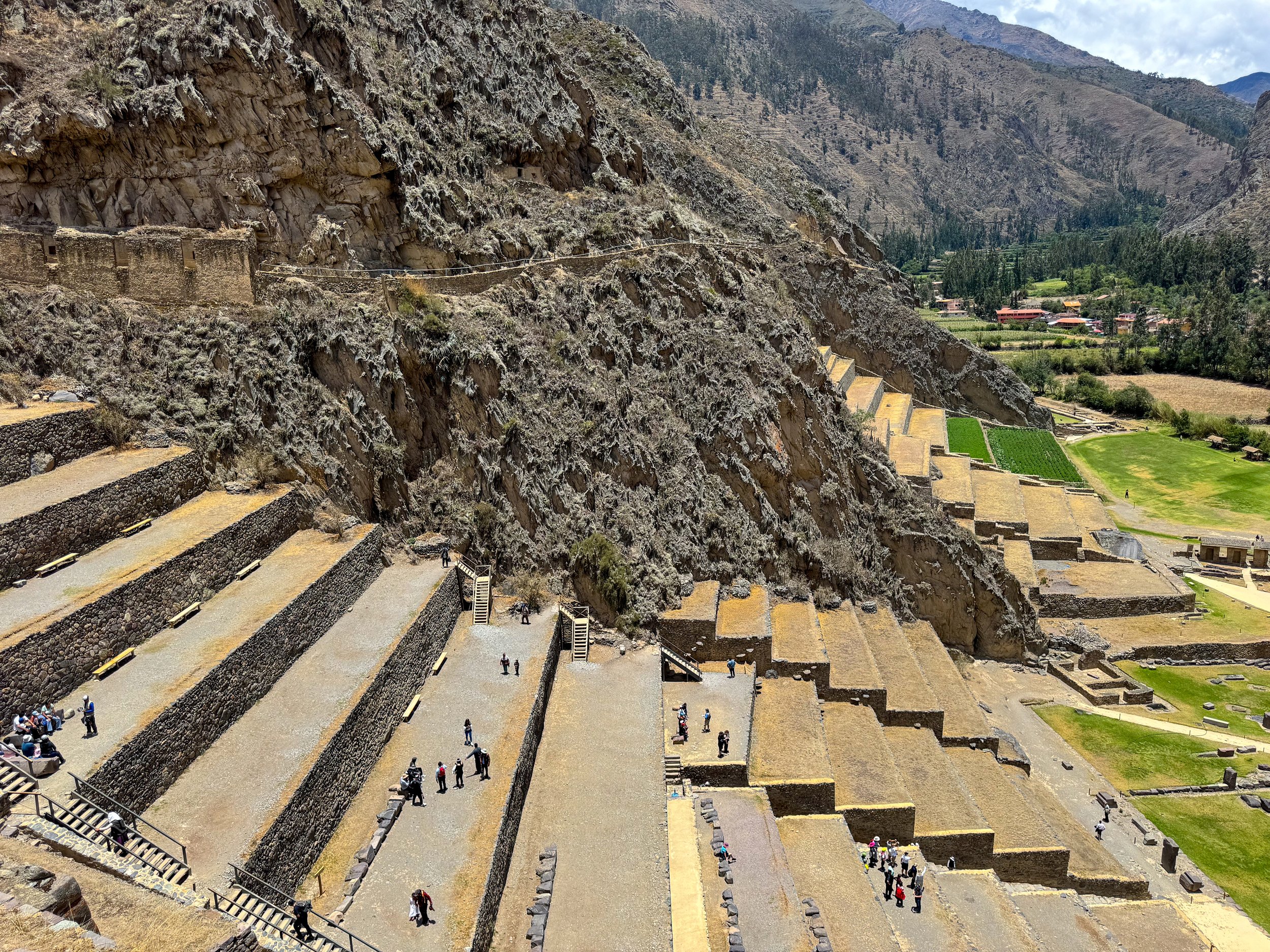
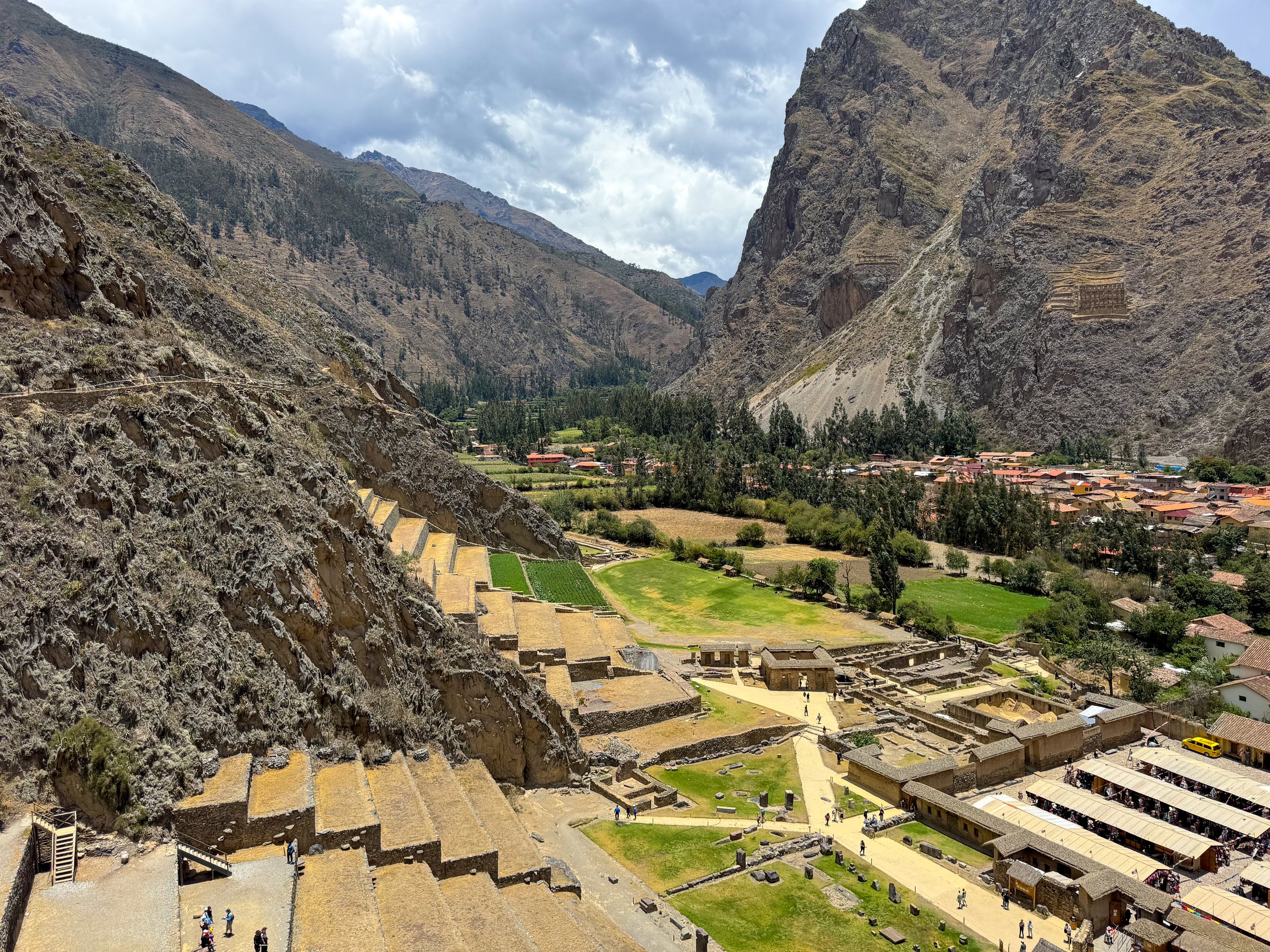
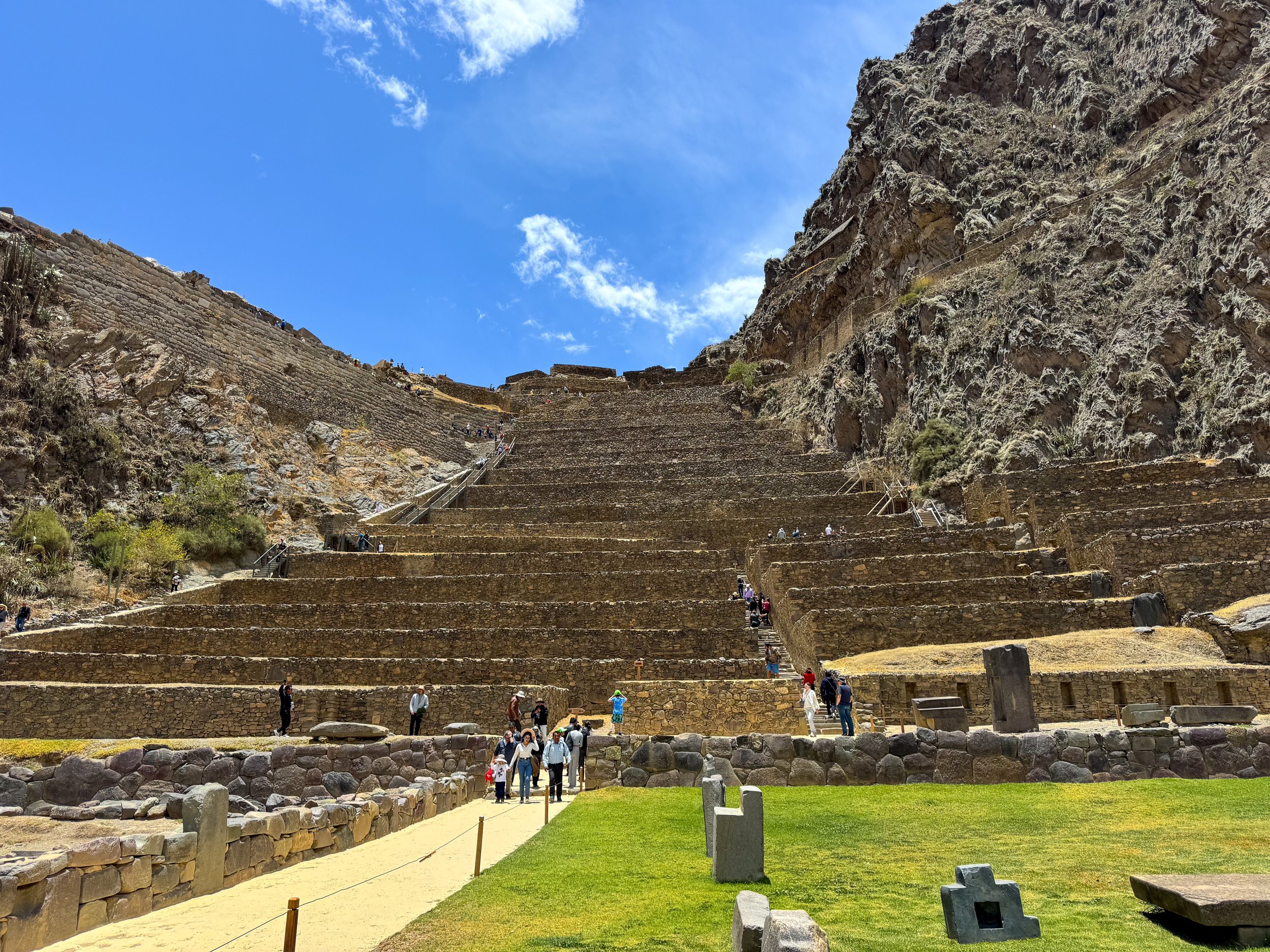

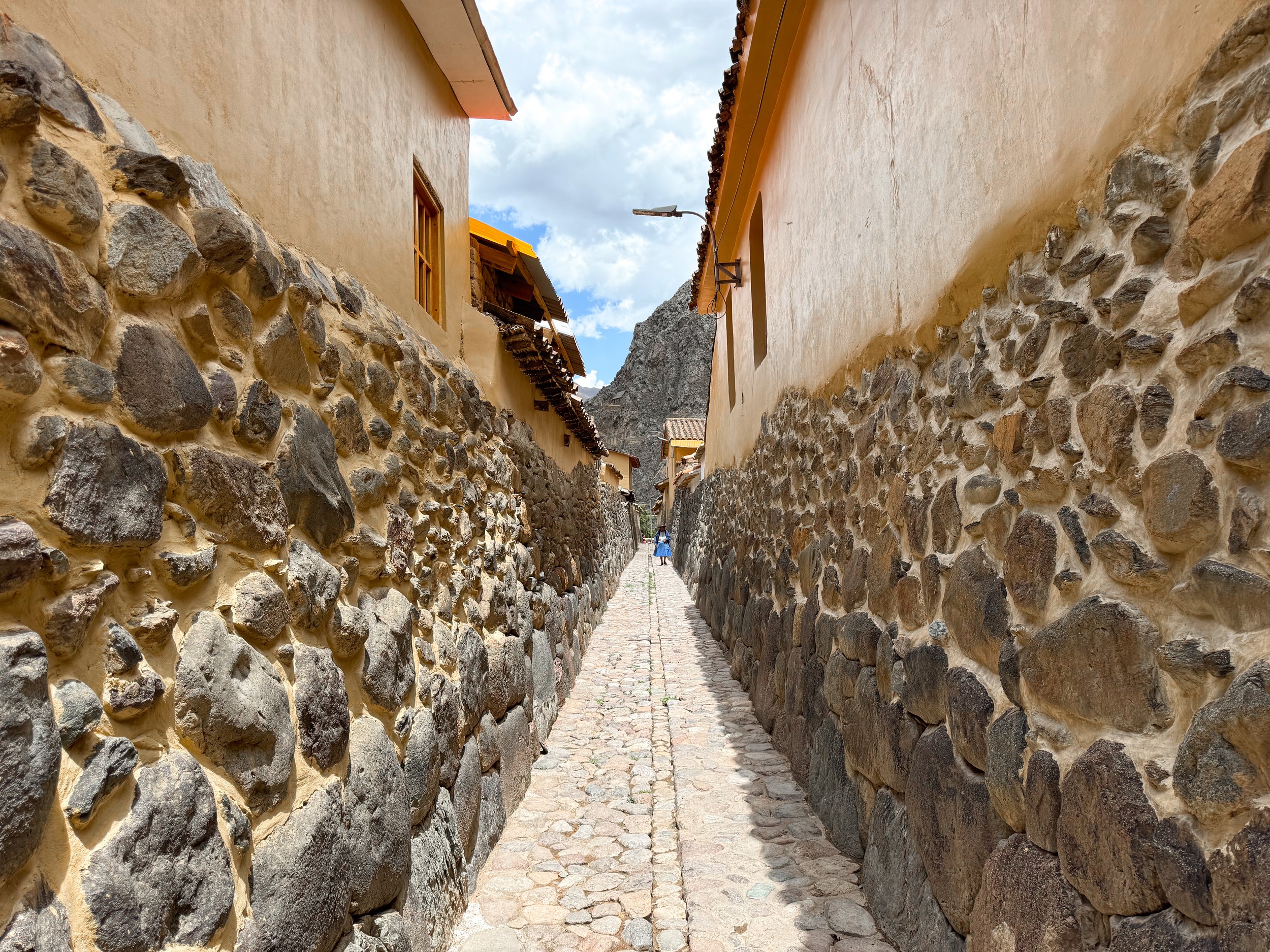
Ollantaytambo
Ollantaytambo is an Incan city built into the valley and up the mountainside with large agricultural terraces, grain storage buildings, a temple dedicated to the worship of the sun and winding hiking trails. We explored the ruins, hiking up the terraces to the Temple of the Sun and through the city. The stone roads, walls and irrigation canals from the Incan city remain and have been built upon by modern day Peruvians. The town has many hostels, restaurants, cafes and textile shops.
Ñaupa Iglesia
Ñaupa Iglesia is a hidden temple located above a terraced agricultural slope on the side of the mountain near Ollantaytambo. We hiked the terraces to a hidden temple with a niche and throne carved into the rock protruding from the entrance of a cave.
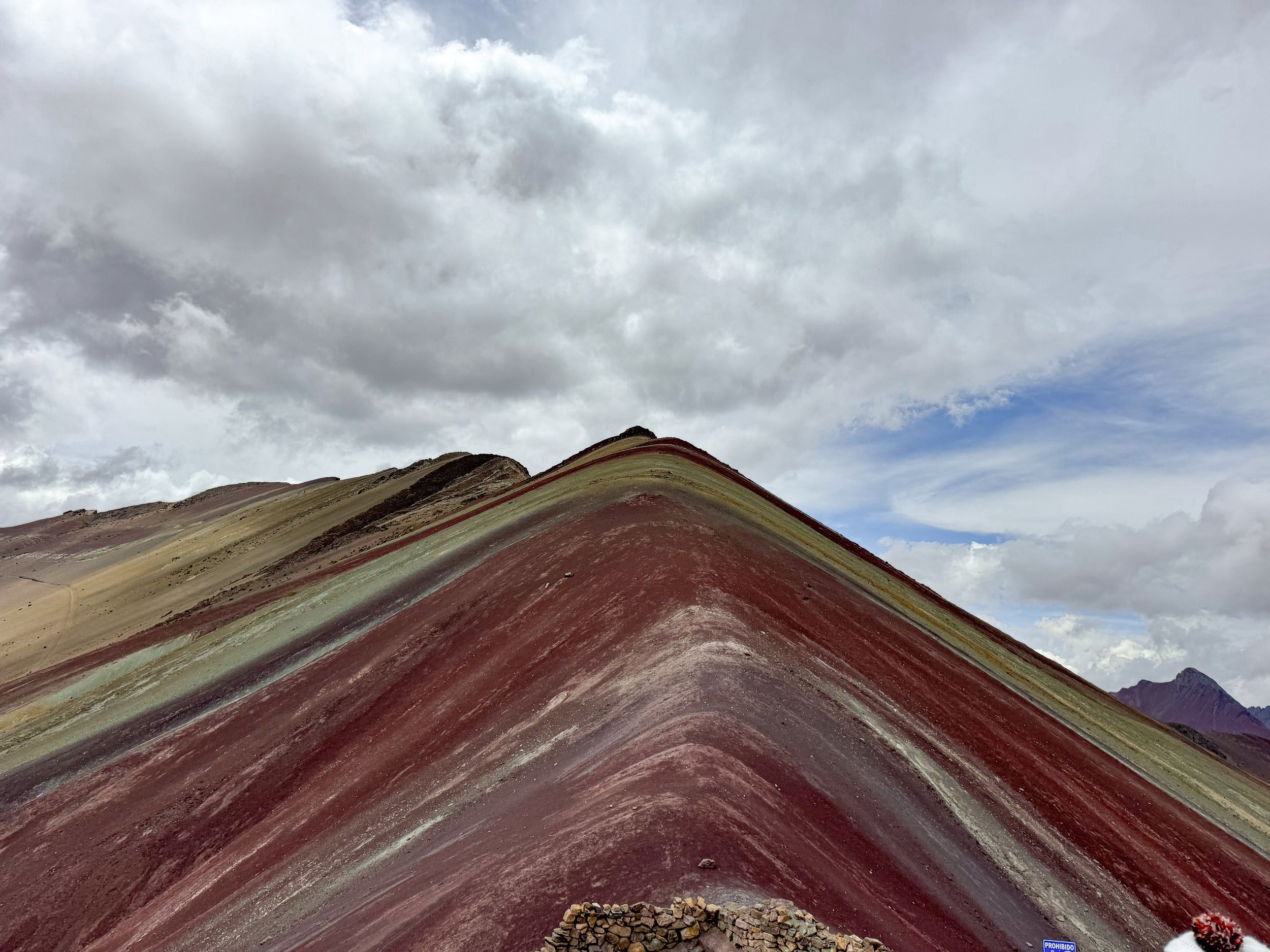
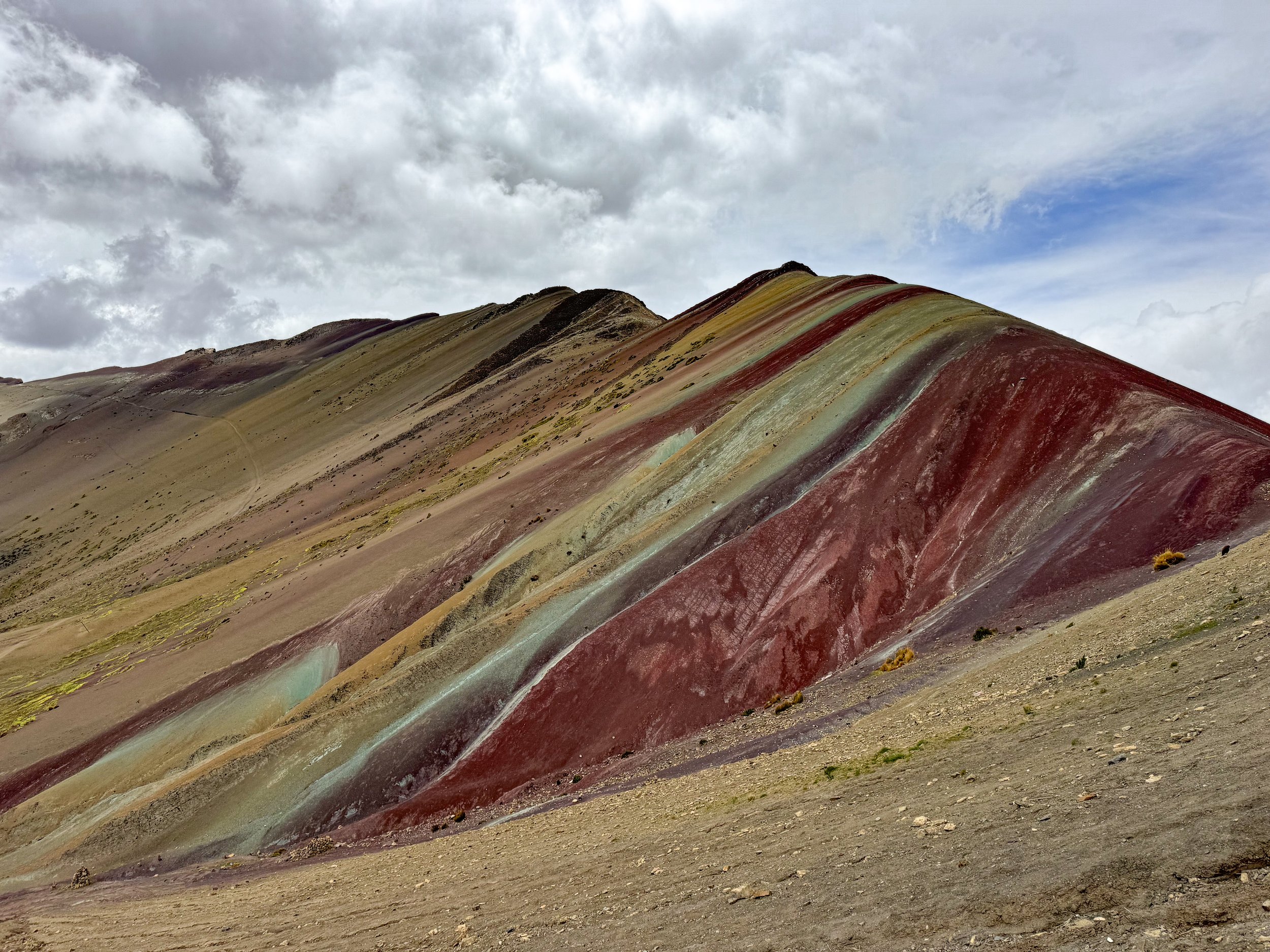
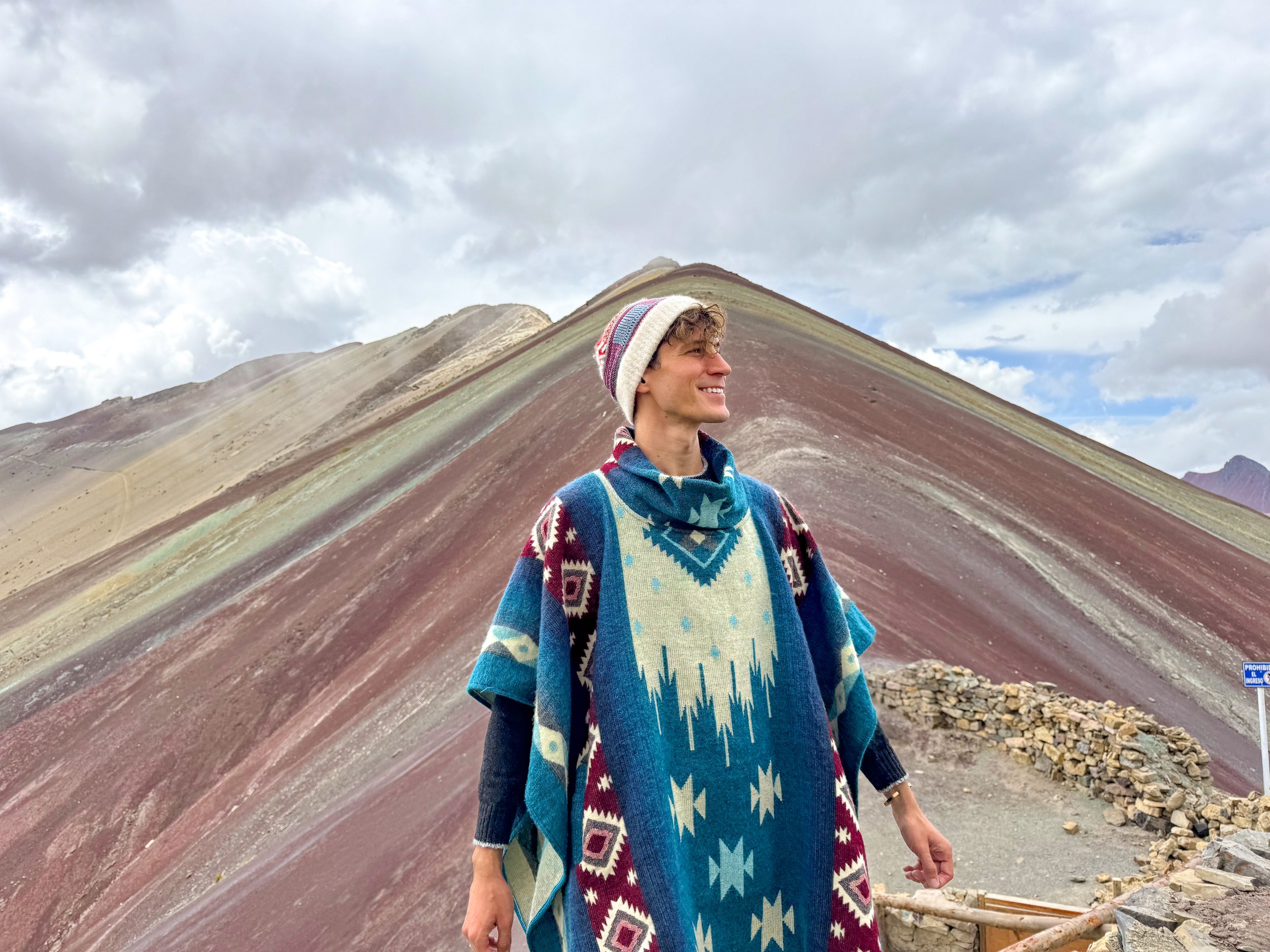
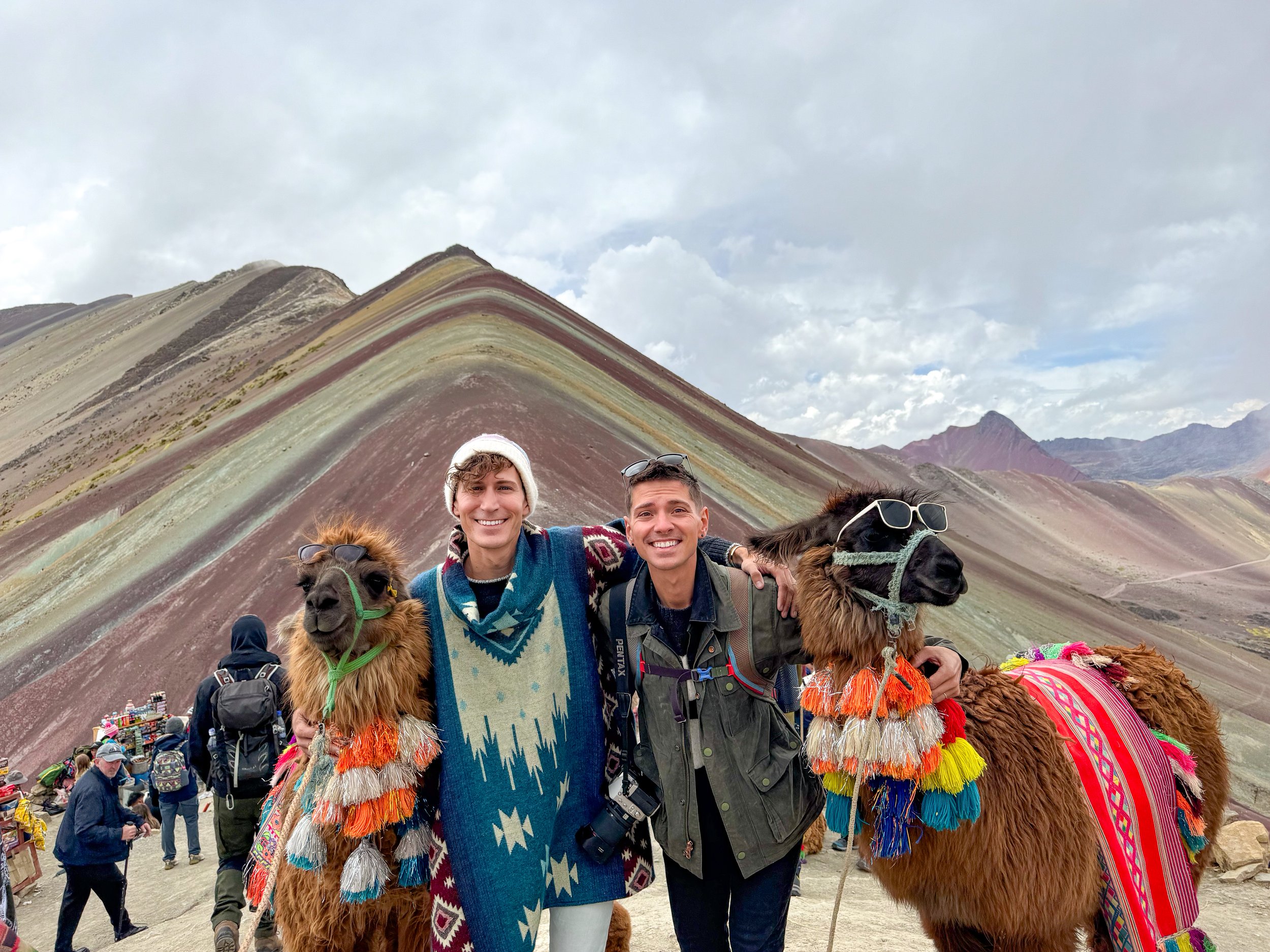
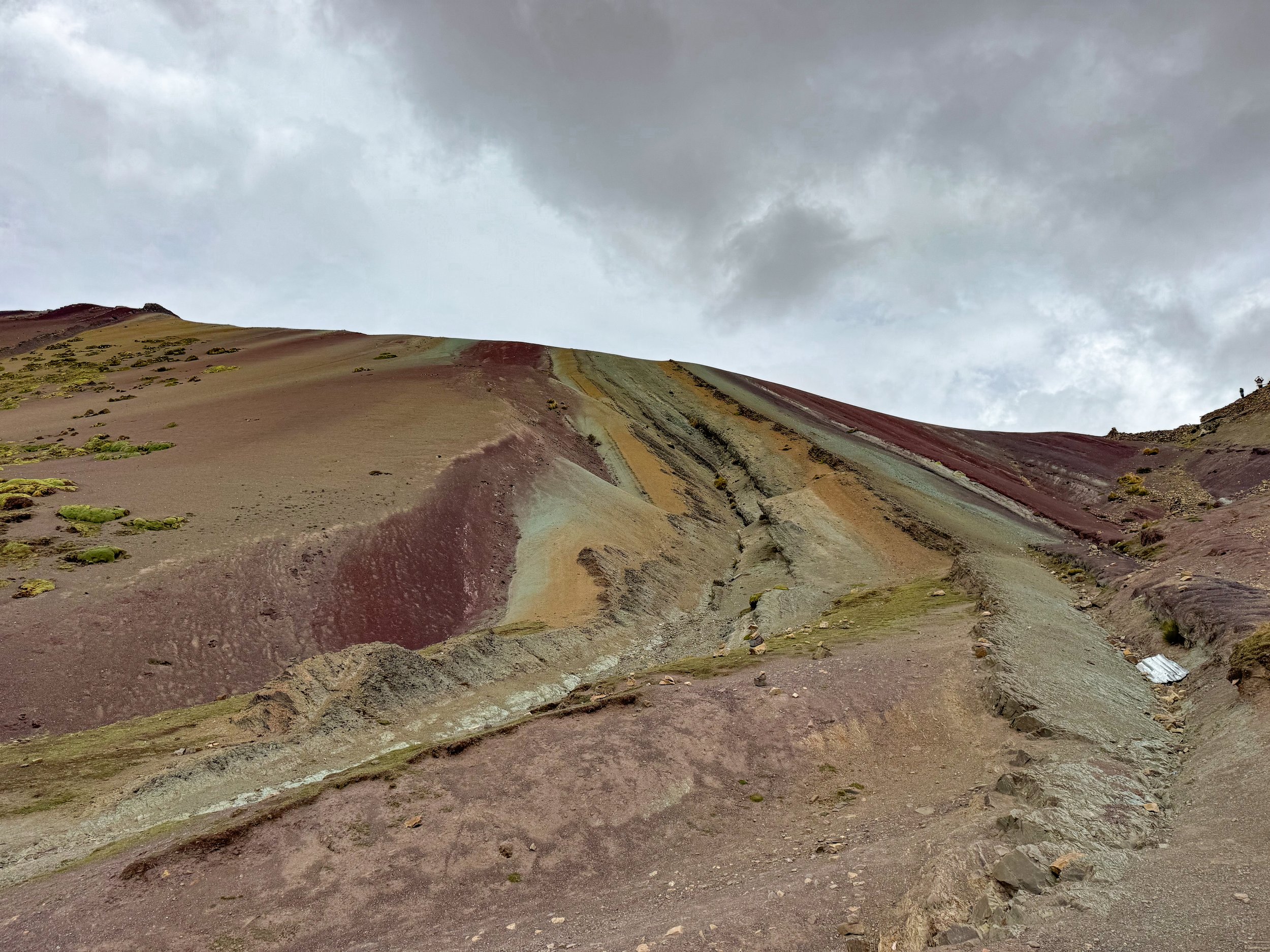
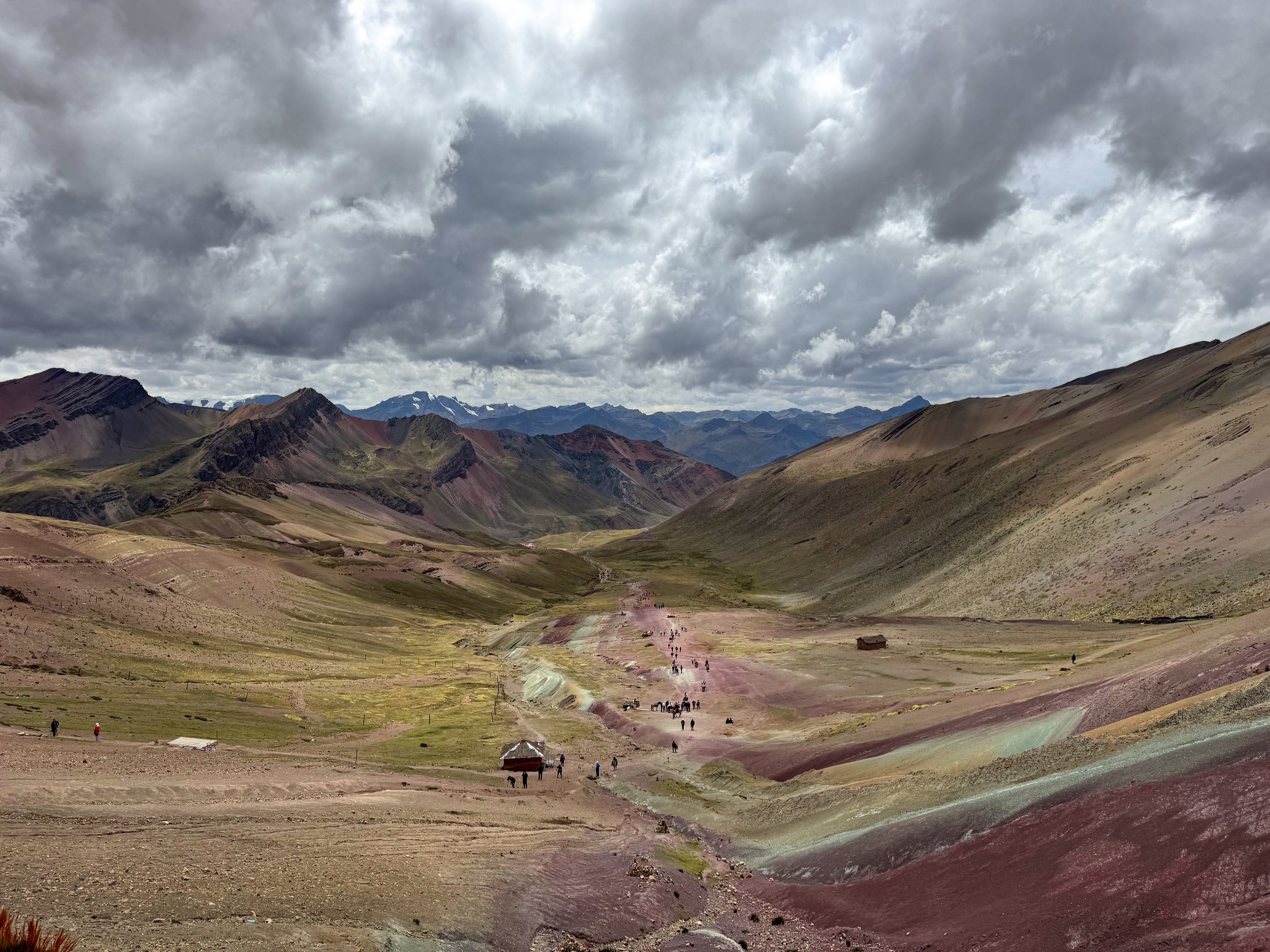
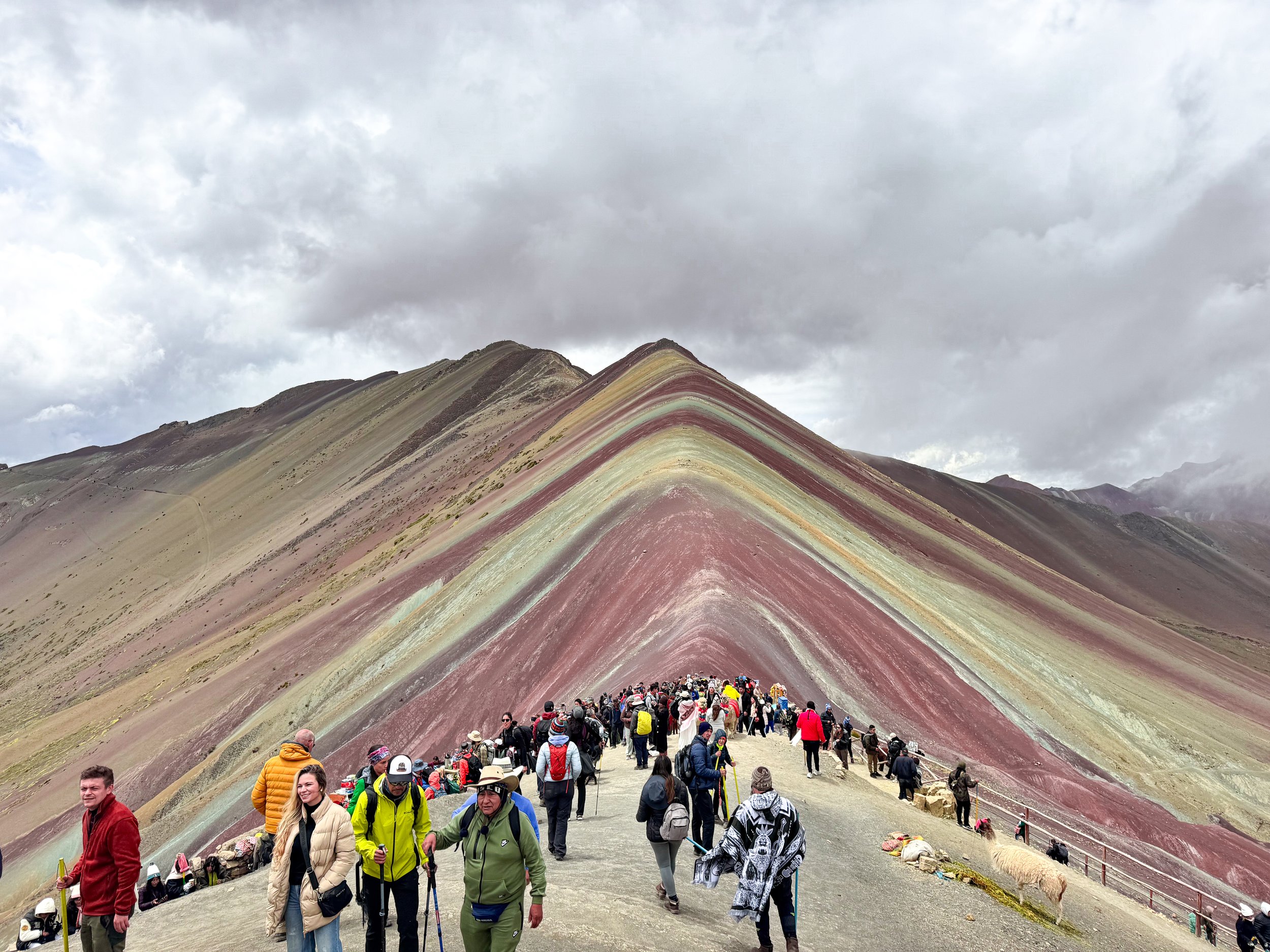
The Rainbow Mountain & Red Valley
The Rainbow Mountain & Red Valley are two recently discovered geological rock formations In the Peruvian Andes with vibrantly colored sediment.
The Rainbow Mountain
The Rainbow Mountain is a remote mountain in the Peruvian Andes with bands of oxidized minerals creating a rainbow effect in the soil. The view from the mountain’s summit is awe inspiring! At 5,036 meters (17,060 feet), the summit has views of the rainbow bands, moss covered valley and distant snow capped Andean mountains. It’s a popular destination with thousands of visitors per day coming to overlook the landscape. There are indigenous Peruvians with pairs of colorfully accessorized llamas posing for photos for a small donation.
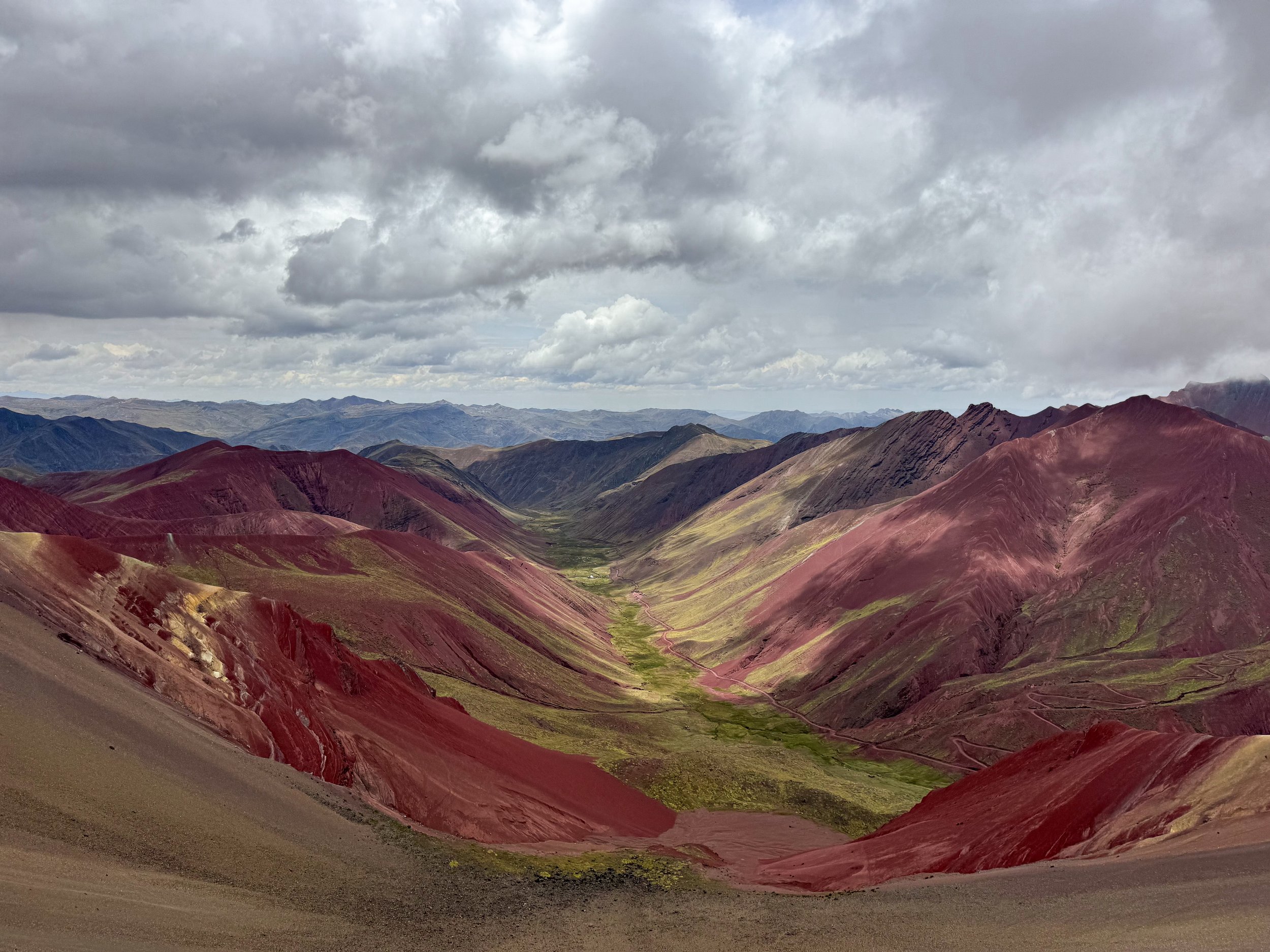
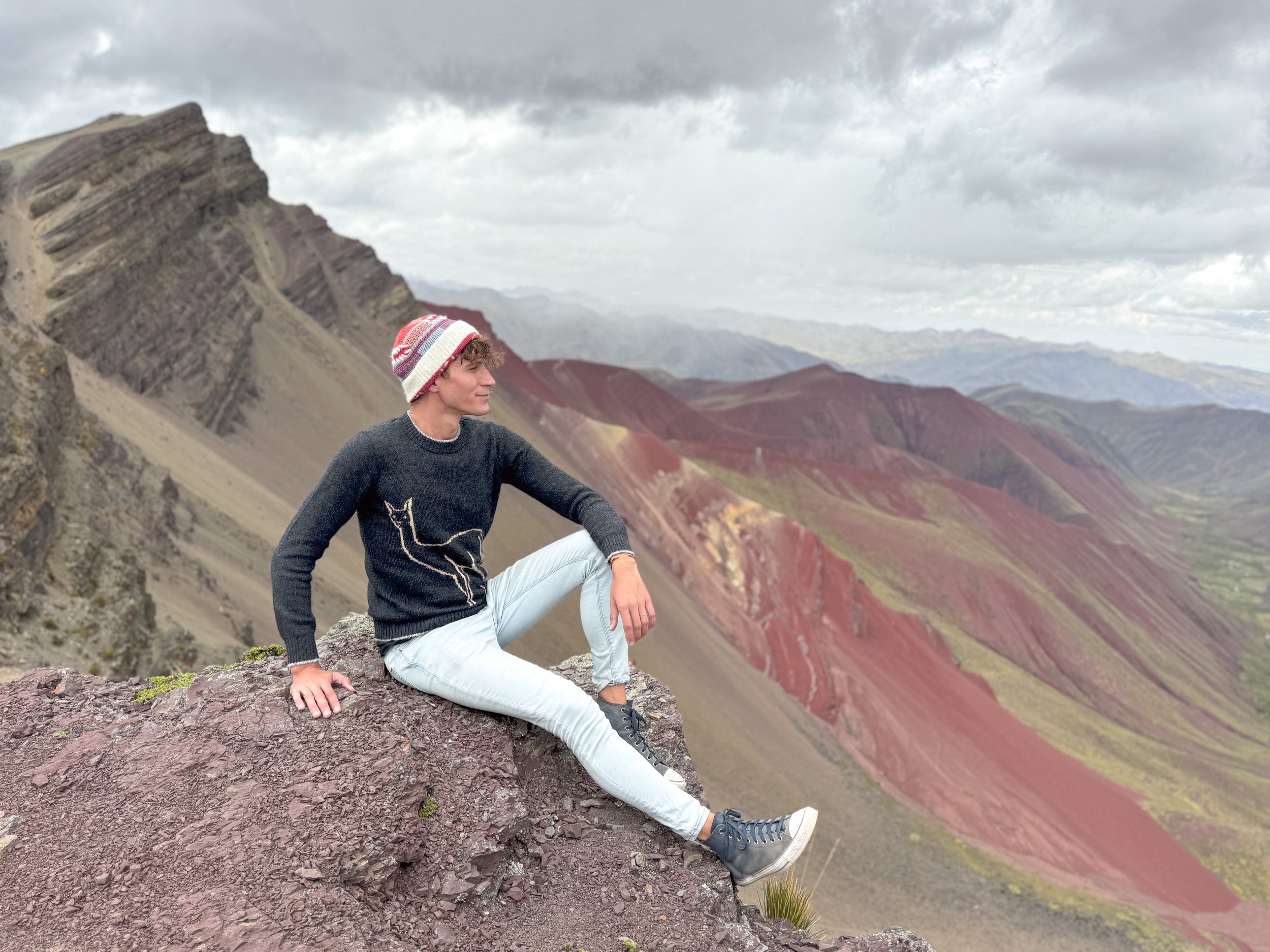
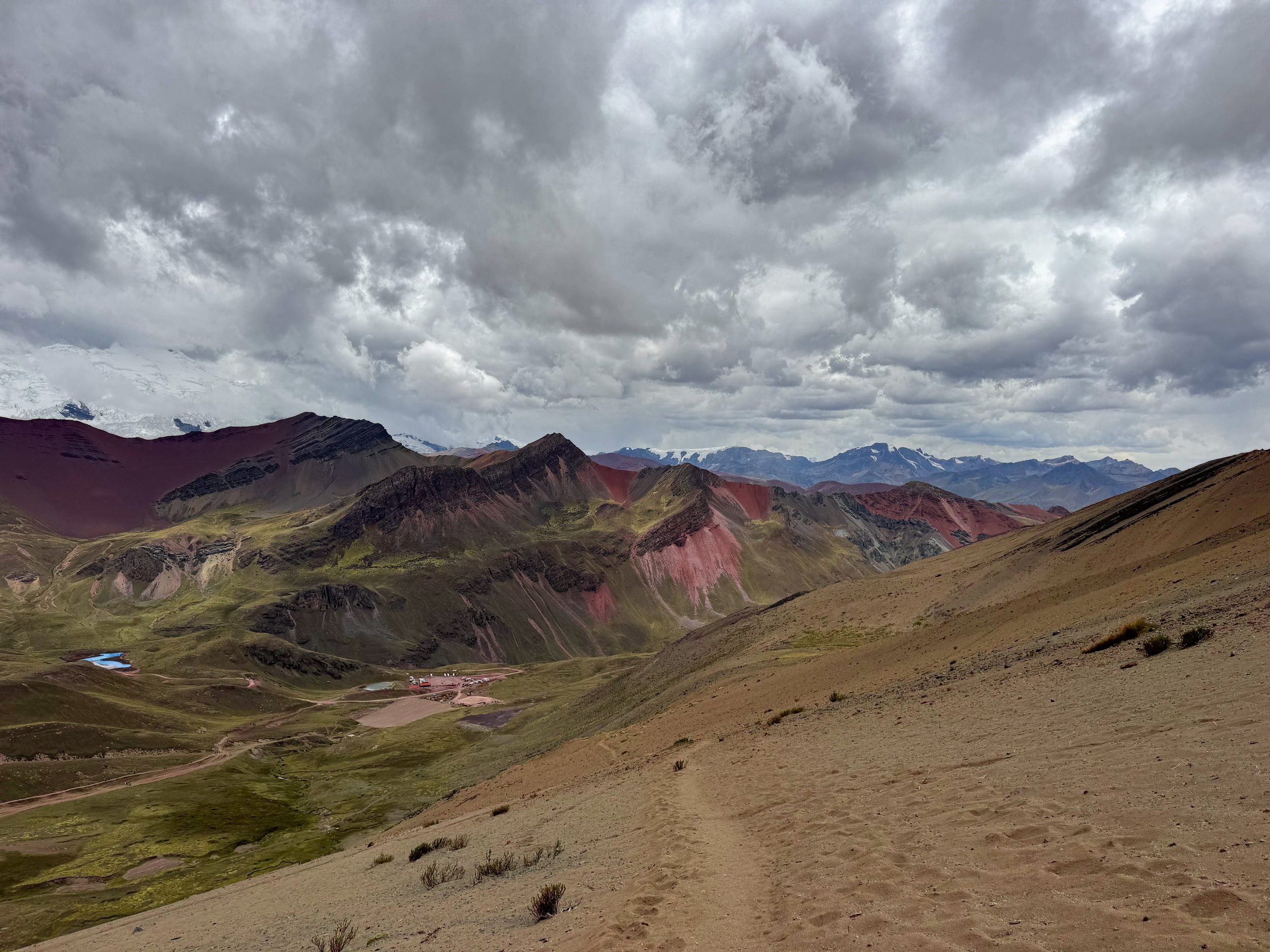
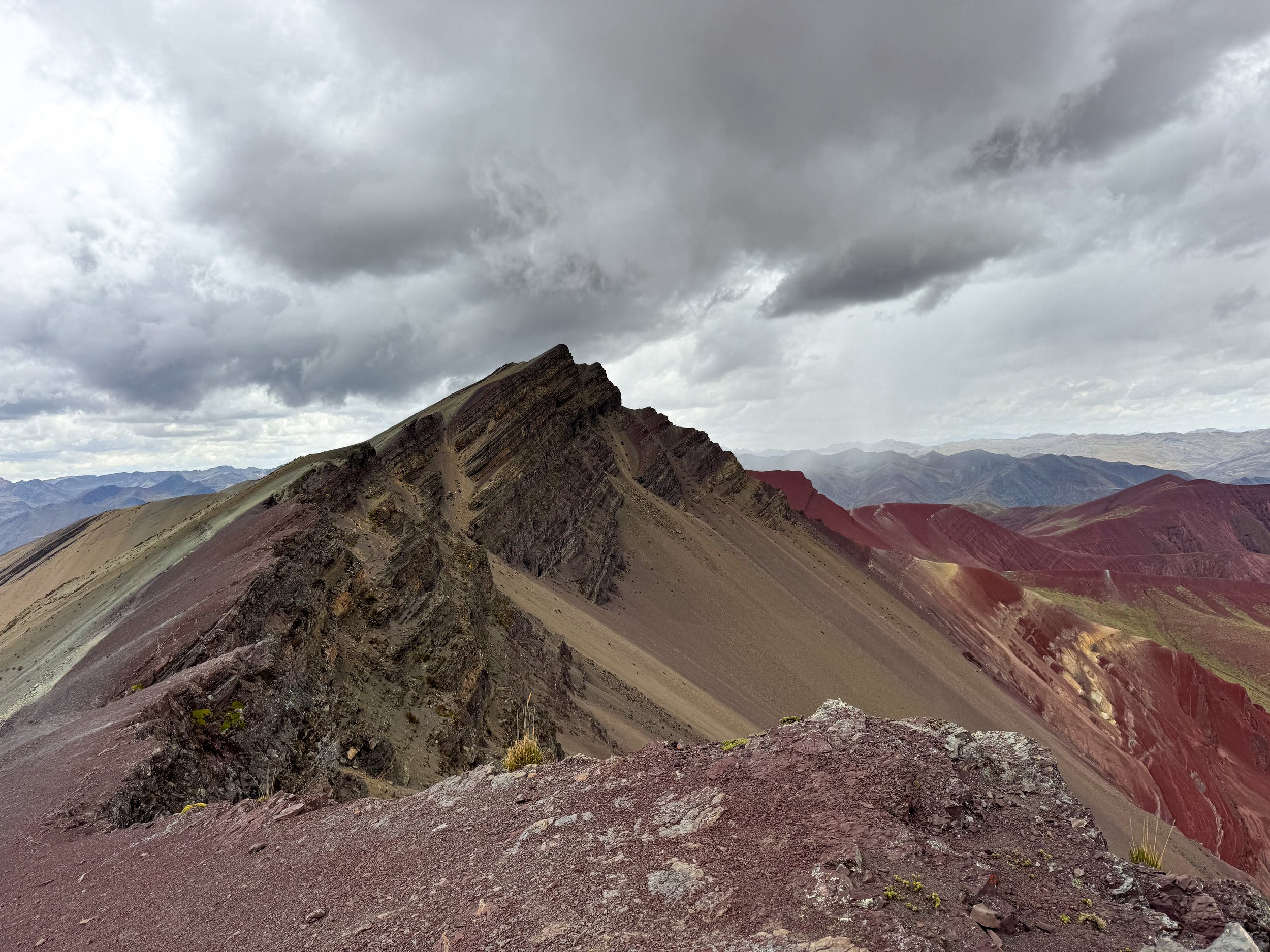
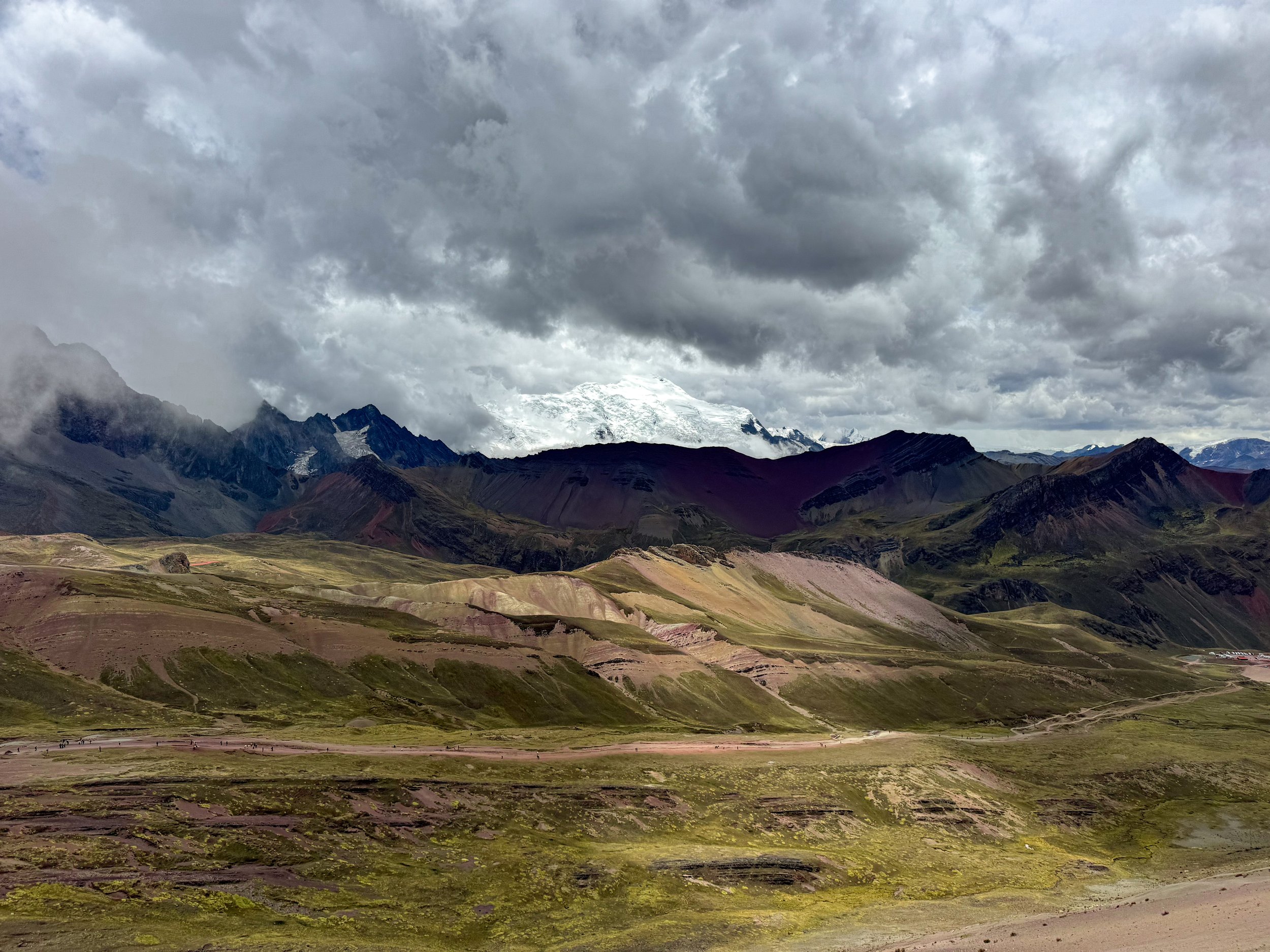
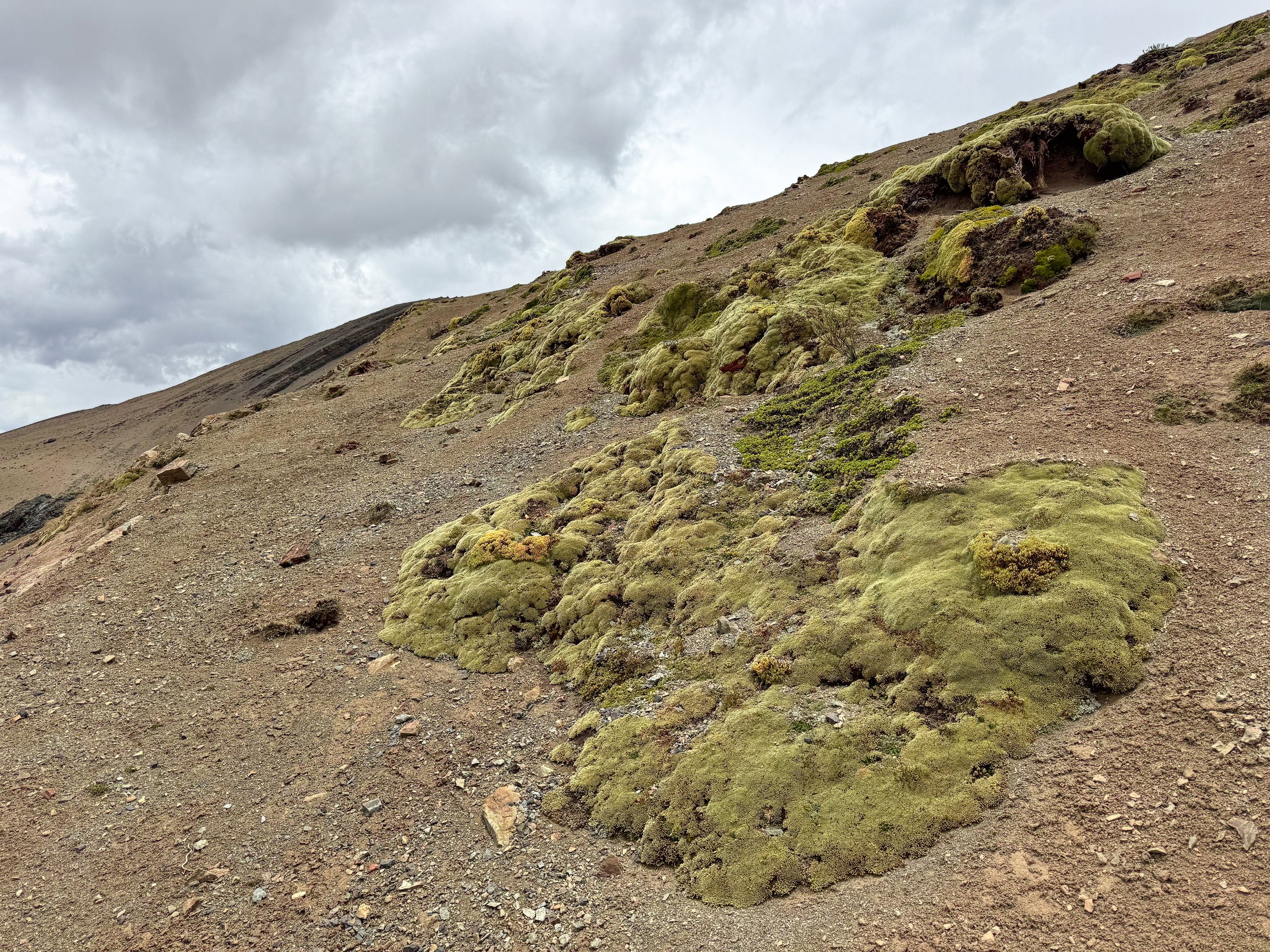
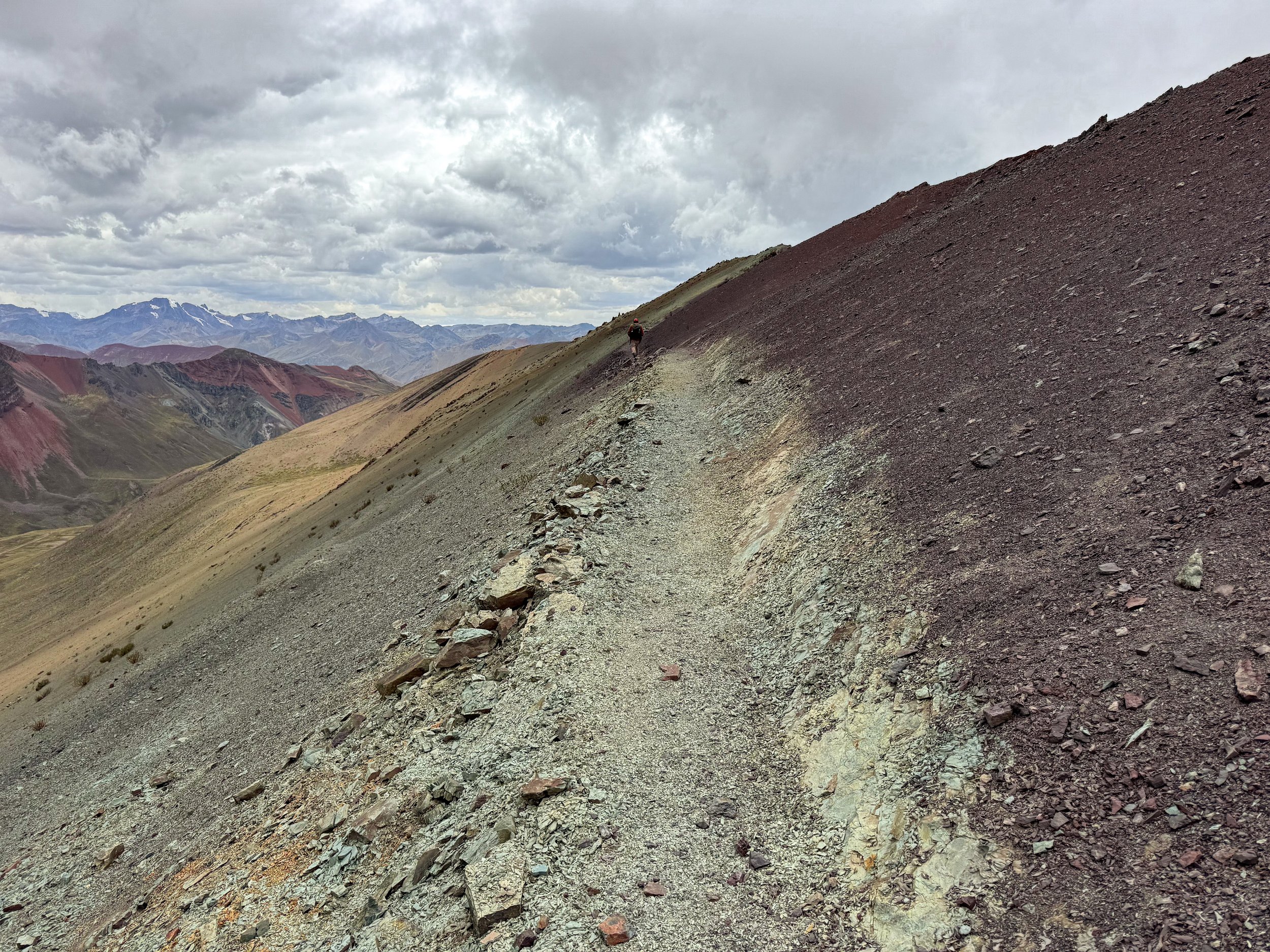
The Red Valley
The Red Valley is a valley with blood red soil and green moss spanning between two mountains on the other side of the rainbow mountain. The panoramic view from the crest overlooking the valley is a surreal experience that left us feeling tiny compared to the surrounding world. Along the trail, we passed colorful stones, vibrant green moss and observed magnificent views of the mountains and glaciers. It is far less touristy with less than a dozen visitors.
Getting Here: We visited both the Rainbow Mountain and Red Valley on a small group guided tour from Cusco. It included transportation, breakfast and lunch. Starting at 4:30am, we drove from Cusco high into the Andes along narrow switchback roads, past terraced fields and countless llamas to reach the trail head. It took a 45 minute to hike uphill to reach the Rainbow Mountain and 25 minutes further to reach the Red Valley. We felt good enough to hike the trail but for those with altitude sickness, there are horses, motorbikes and quads for hire. Book here!
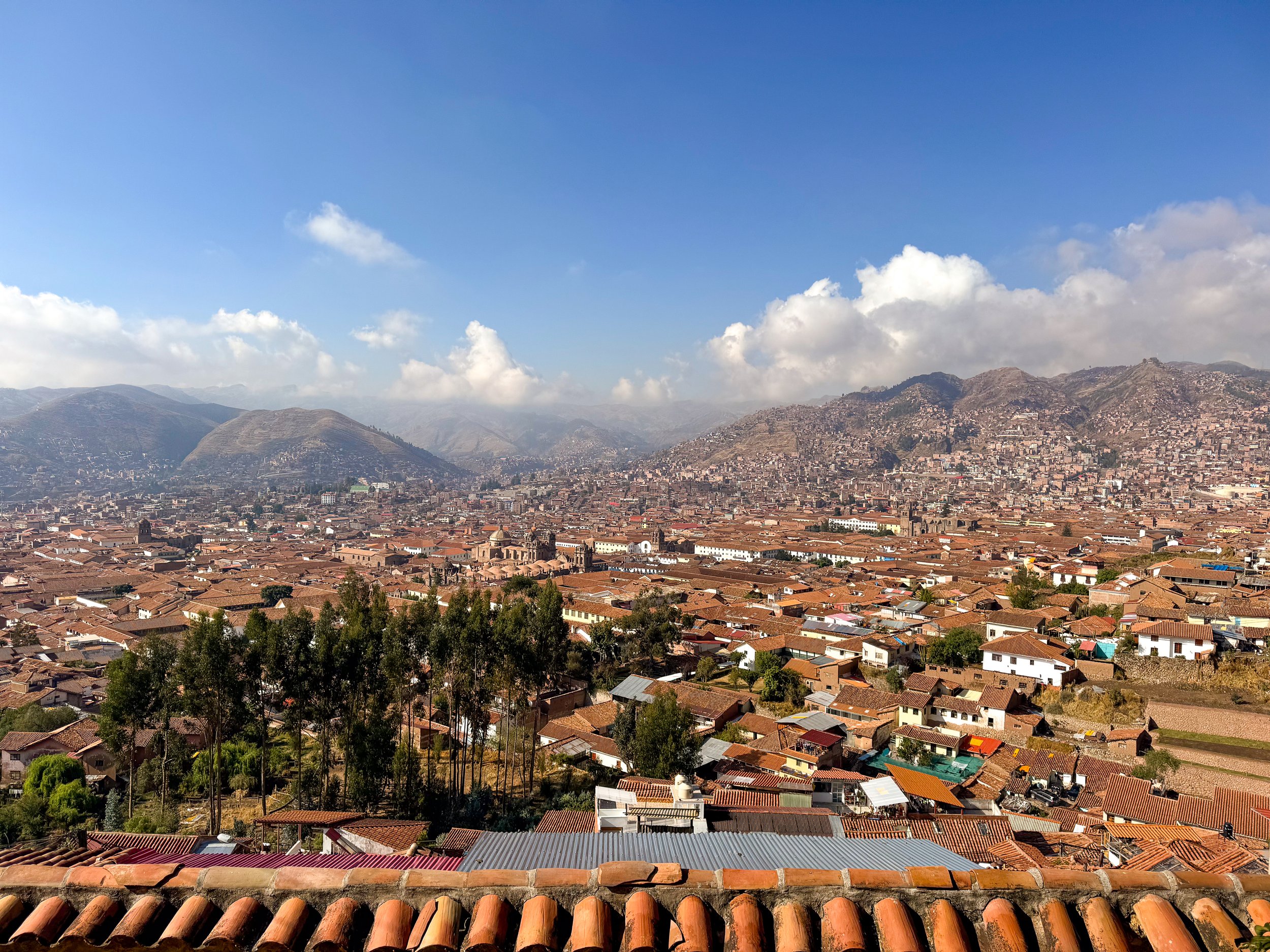
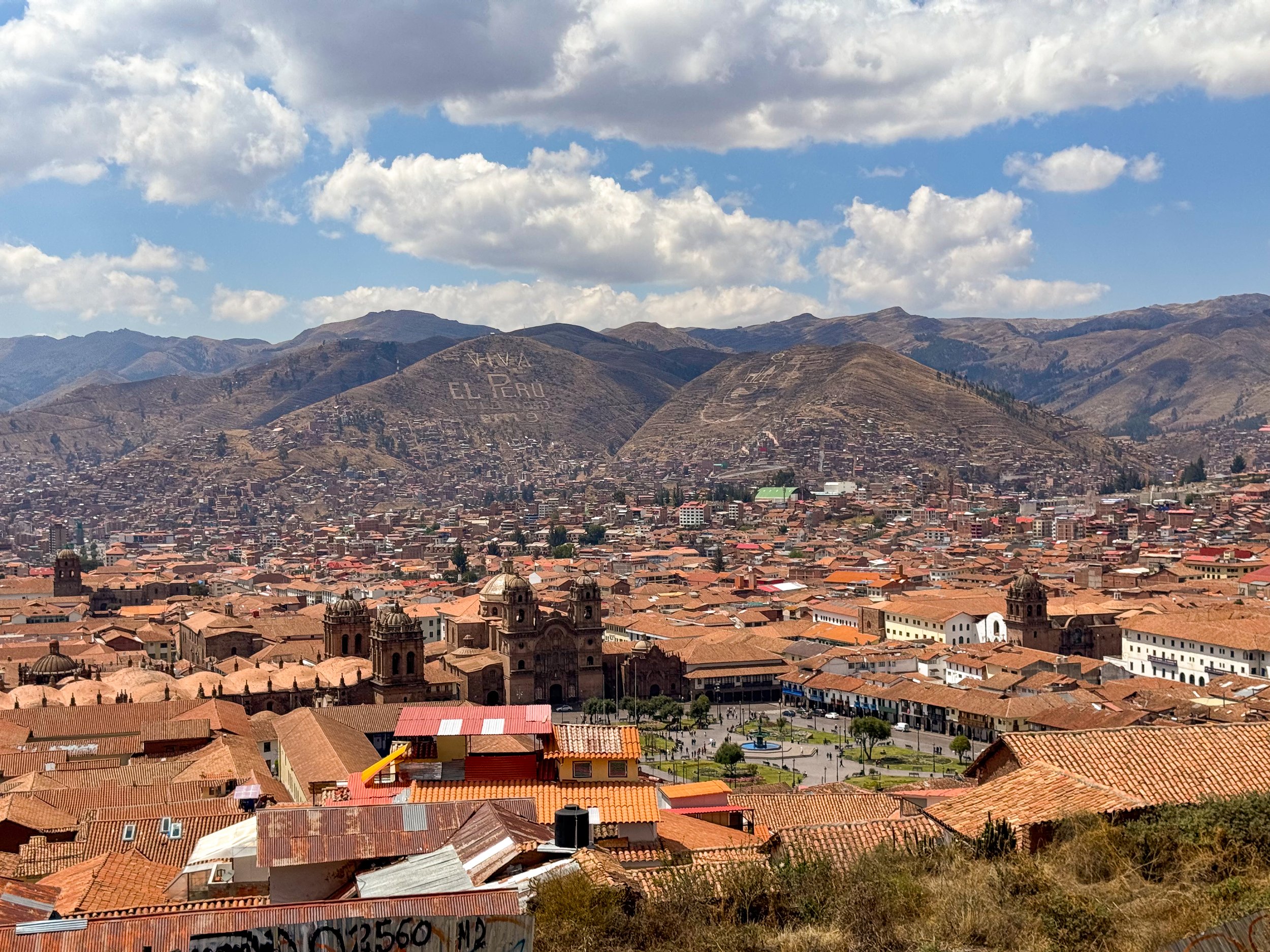
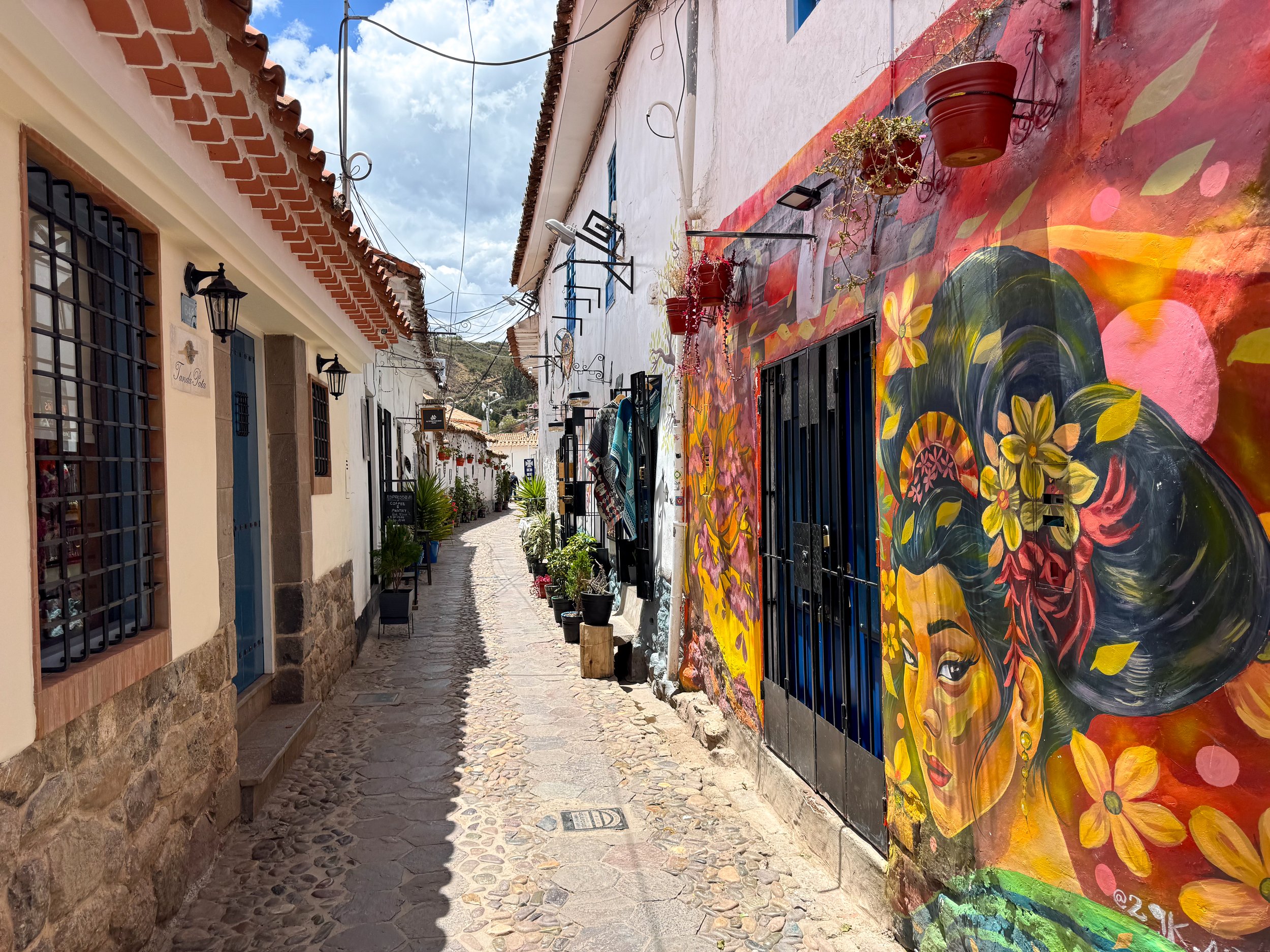
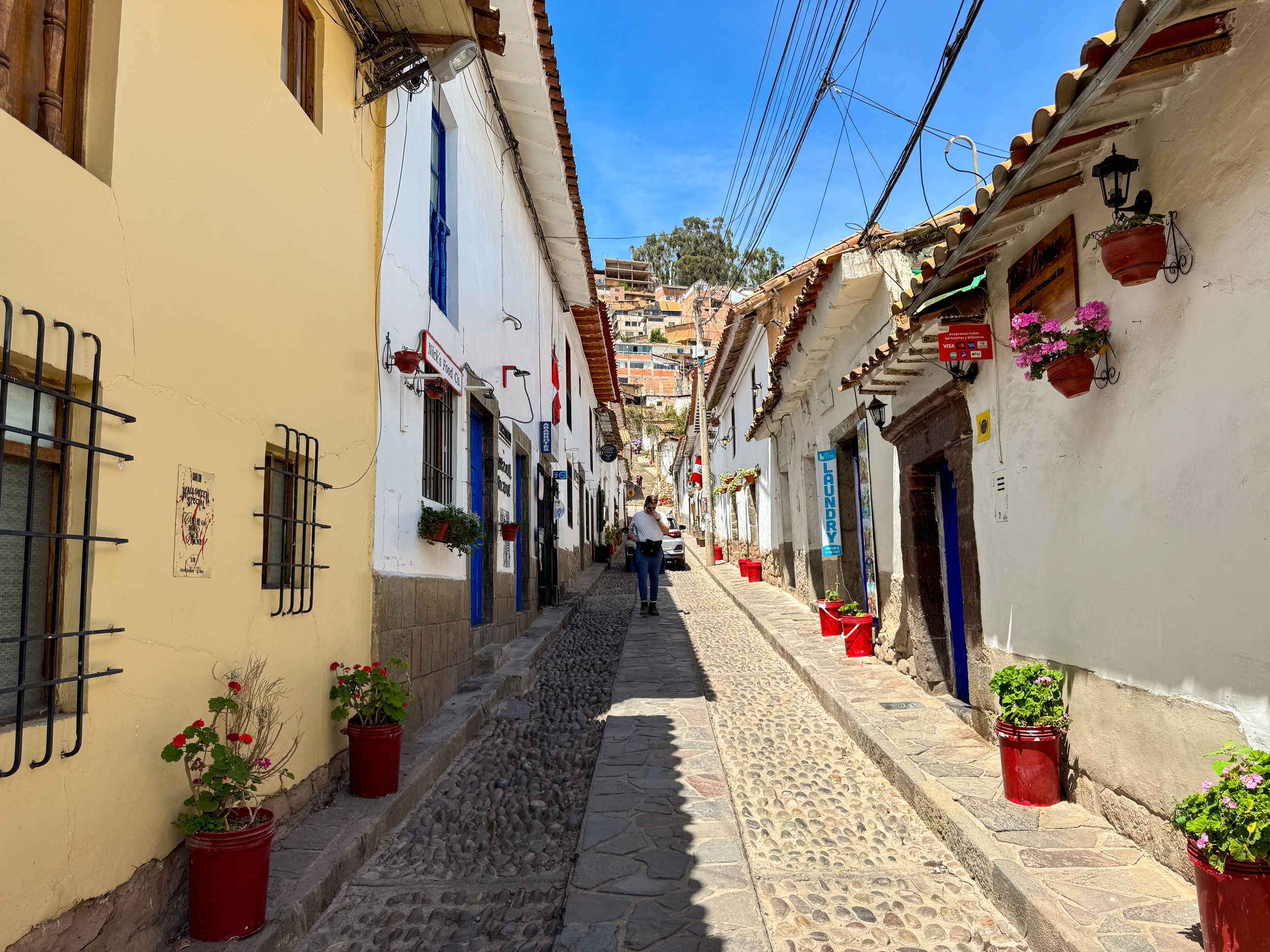
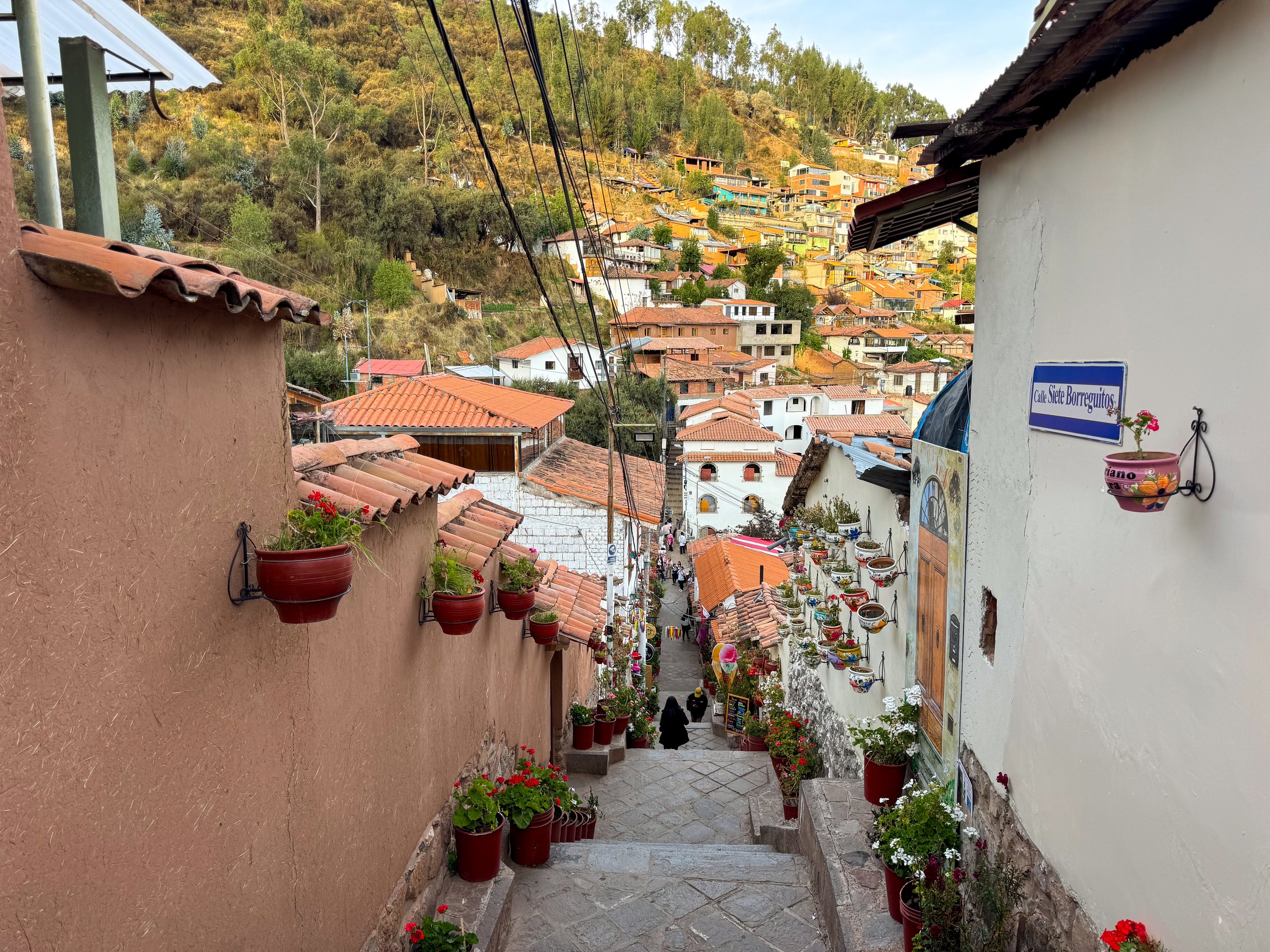
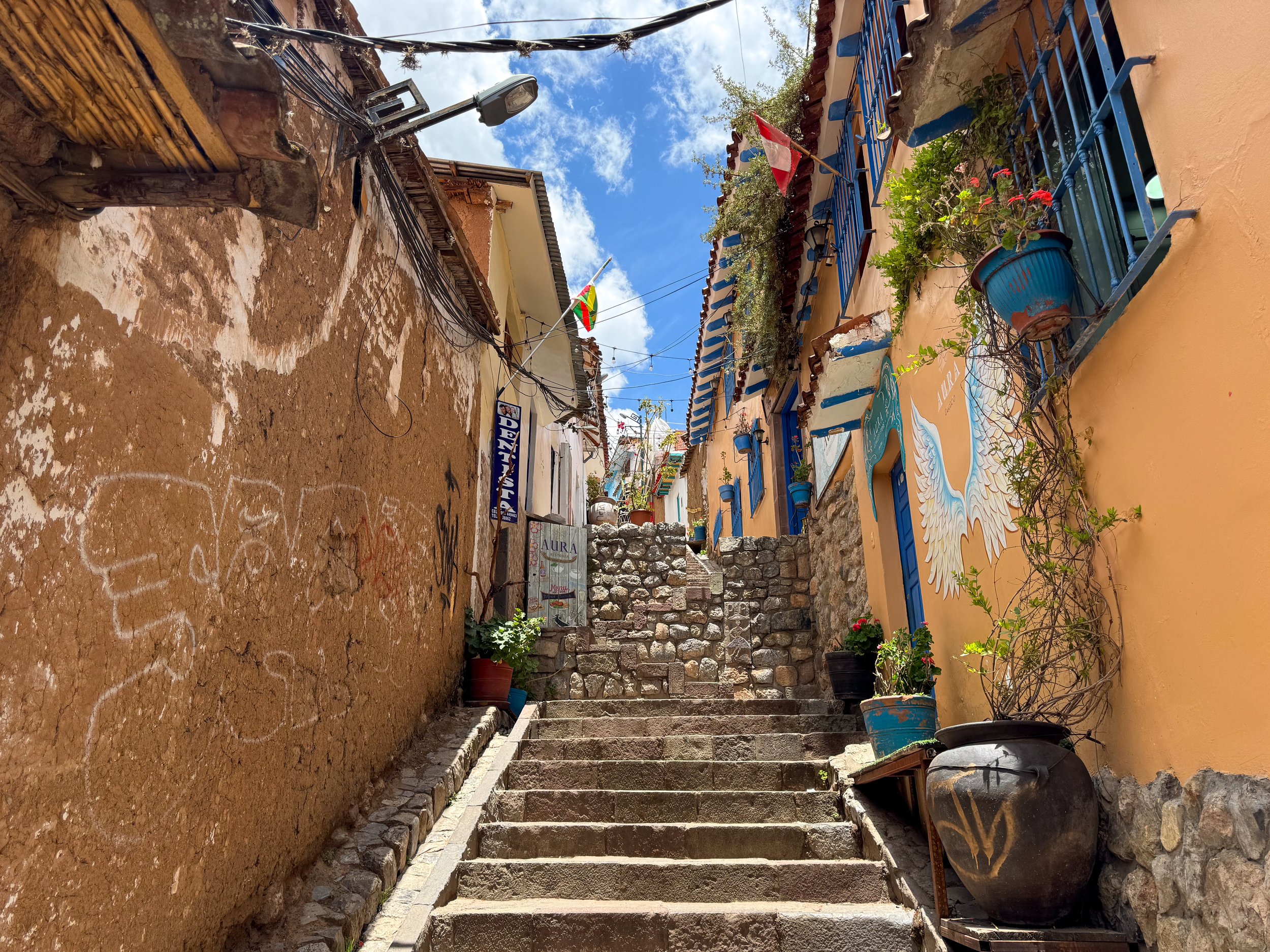
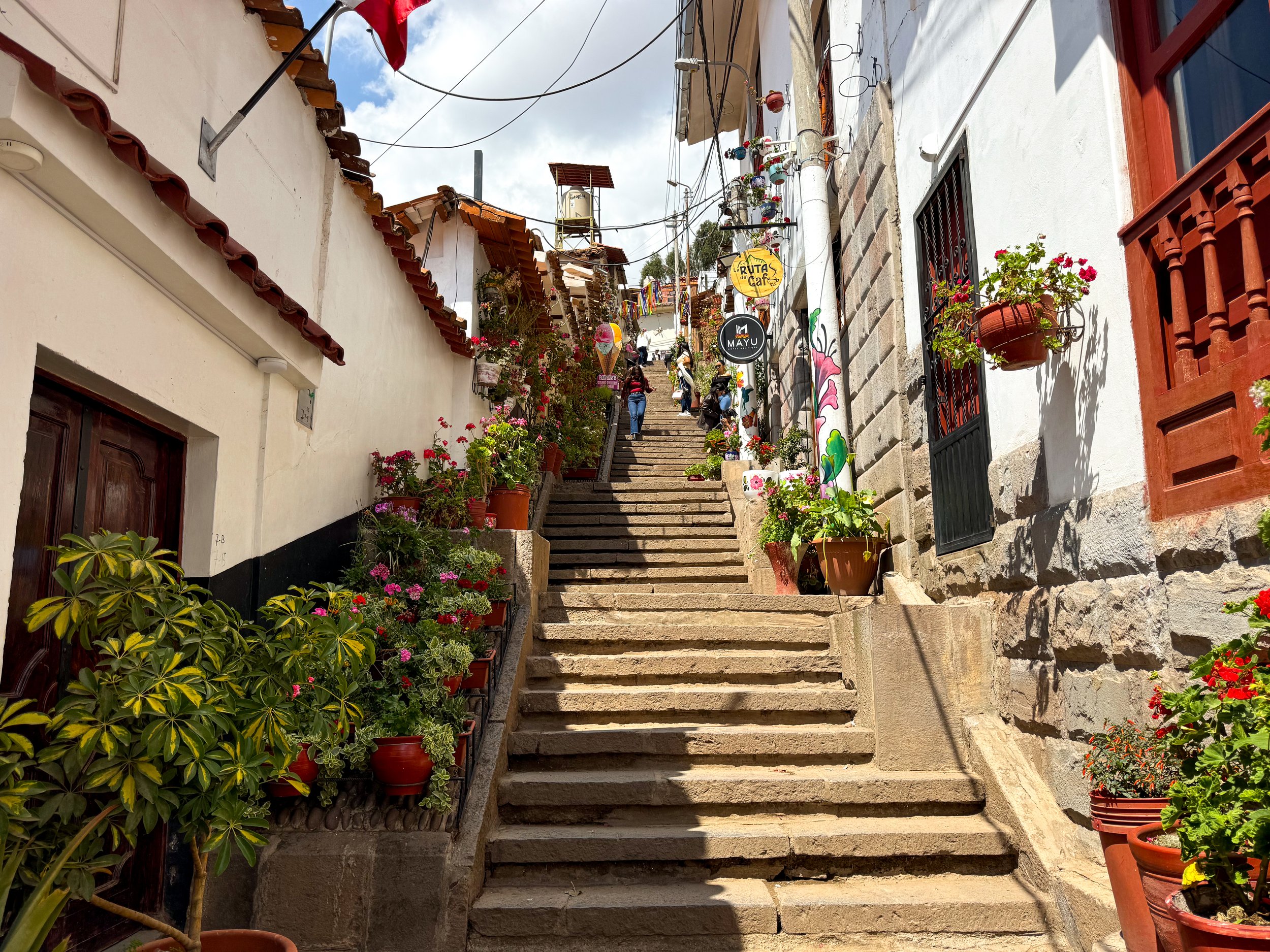
Cusco, Peru
Cusco is a modern city at the heart of the Incan Empire in Andes Mountains with archeological ruins, historic neighborhoods, museums and beautiful landscapes.
Neighborhoods
San Blas Neighborhood. A trendy yet quiet neighborhood with ancient Incan roads, steep staircases and narrow cobblestone streets home to a variety of cafes, restaurants, boutiques, art galleries, tattoo shops and small convenience stores. Many of the buildings are painted white with blue wooden doors, wall hung planters and vibrant murals. The neighborhood is close to several Incan ruins, the central plaza and has panoramic views of the Cusco Valley, its clay tiled roofs by day and twinkling lights at night.
Coripata. A bustling local neighborhood, you won’t spot another tourist here! There are women selling boiled quail eggs, fresh juice, wheel barrels and blankets with fruit, fried plantain chips and ice-cream from carts.
Santa Catalina. A quieter local neighborhood with an arch along its main road, chain hostels, stray dogs and city views. There’s not much going on in terms of restaurants, cafes, bars or nightlife.
Centro Historico. The central neighborhood of Cusco is home to the grand plazas, large stone cathedrals, historic architecture, Peruvian restaurants, clothing shops, souvenir stores and hotels. It’s a touristy area with peddlers calling you into their restaurants, trying to sell something or offering massages.
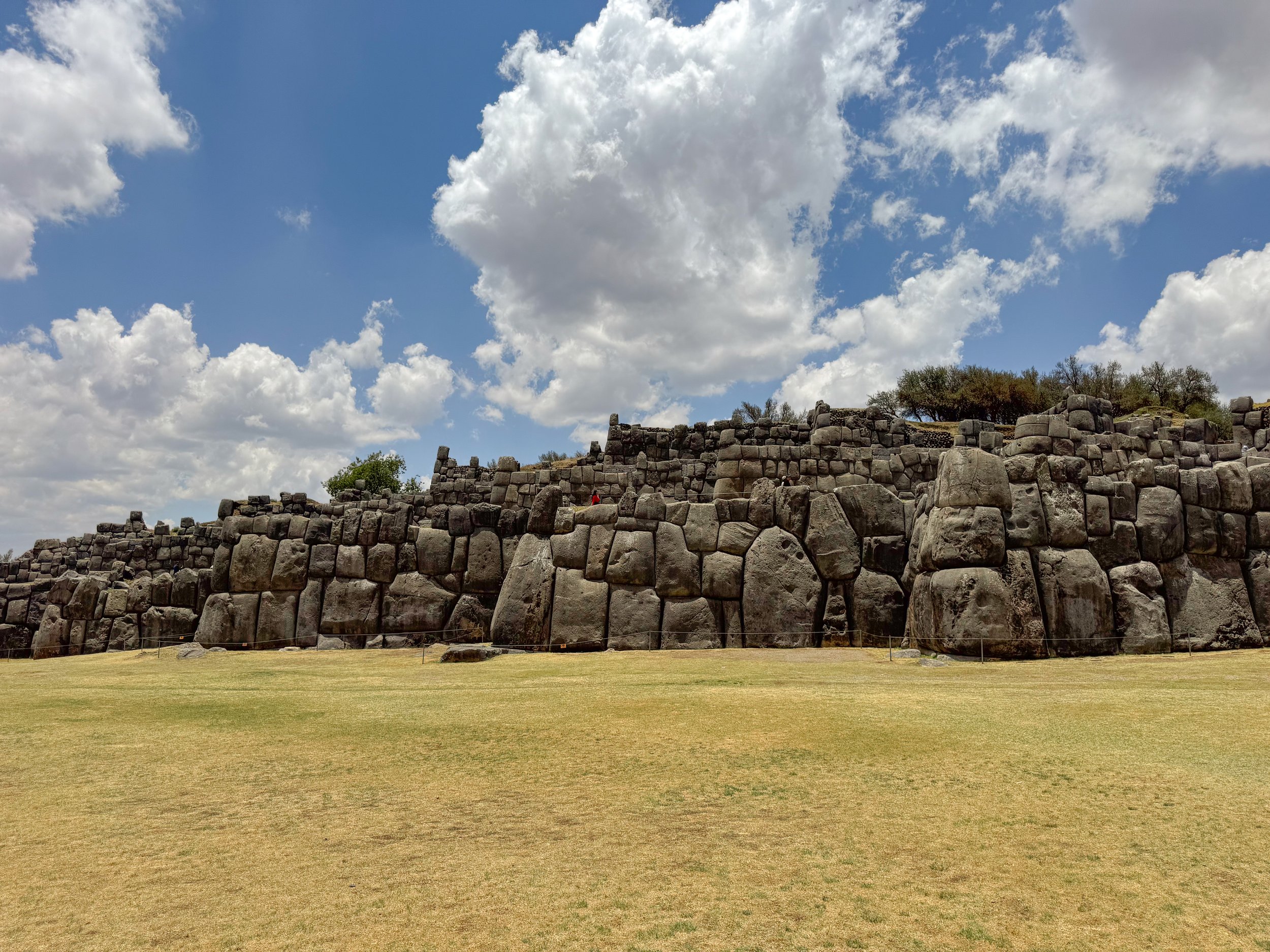
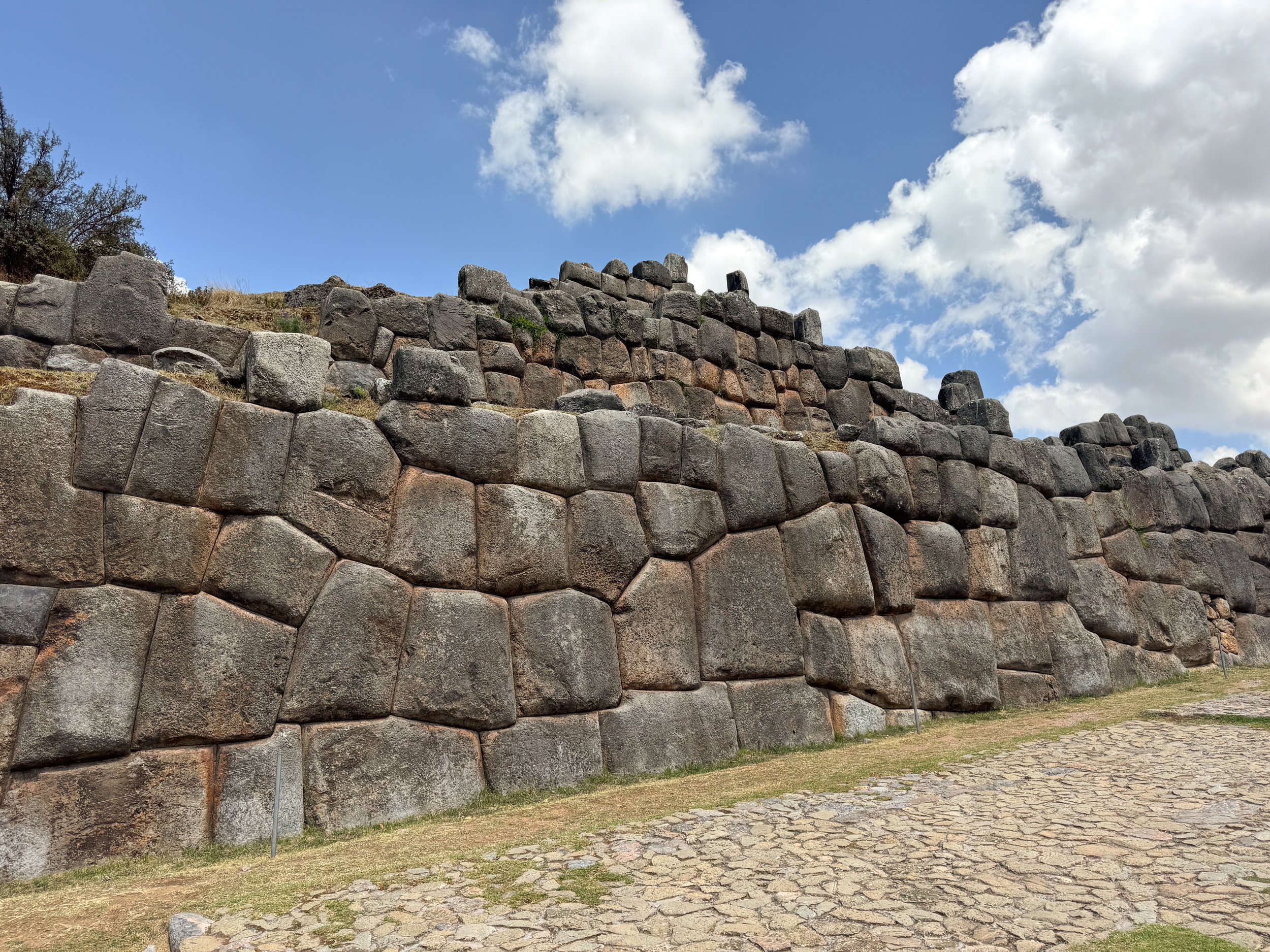
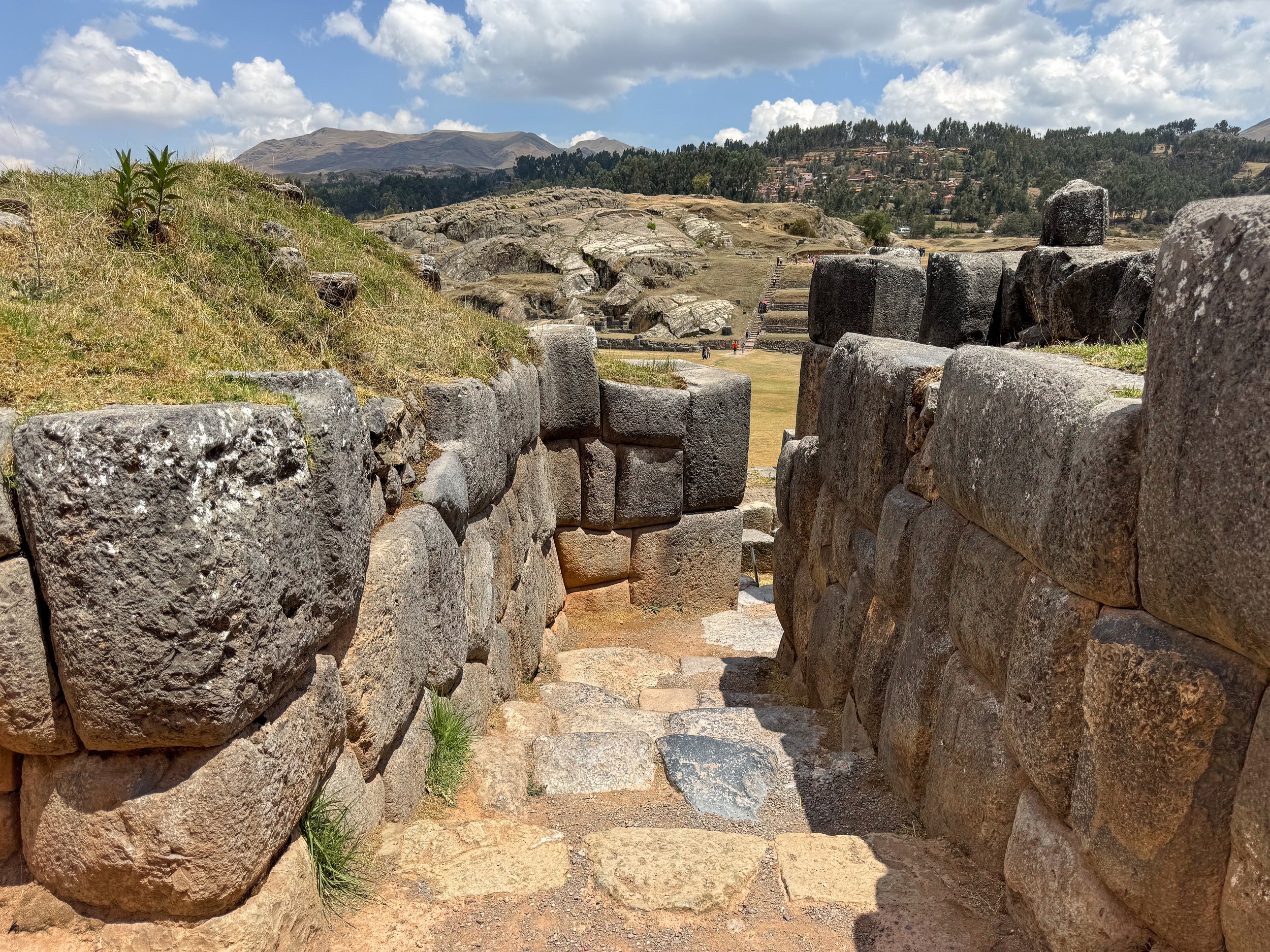
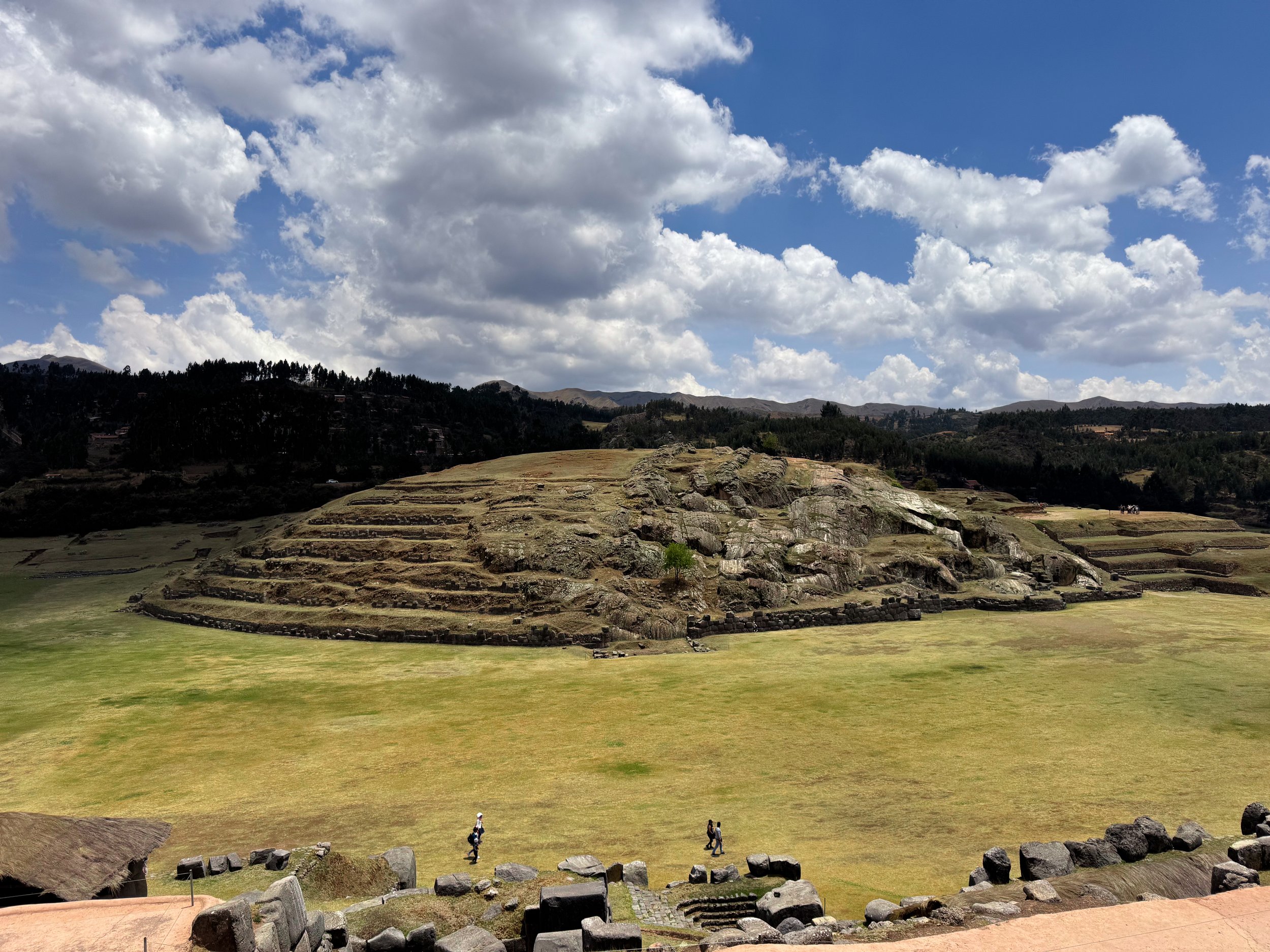
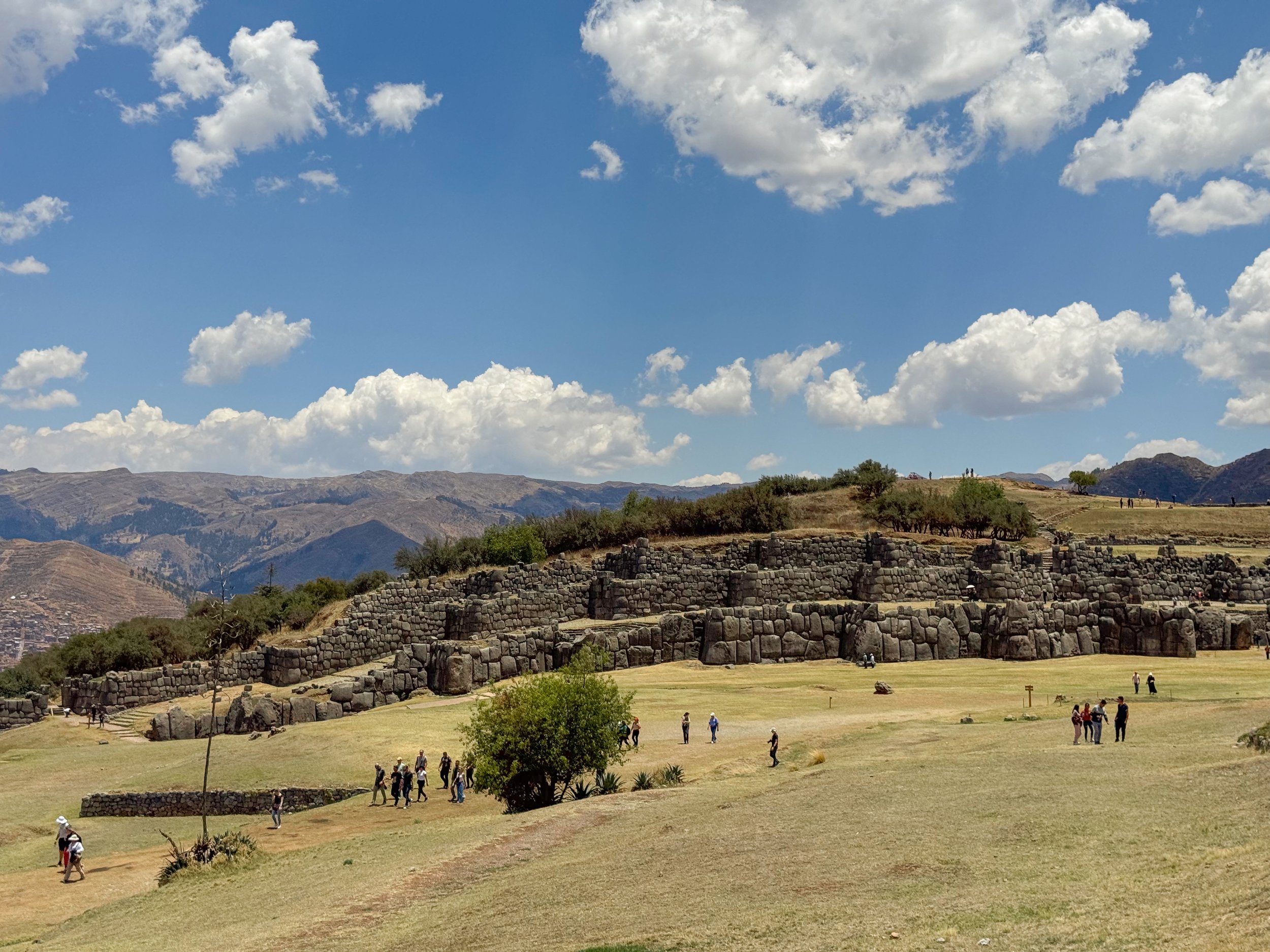
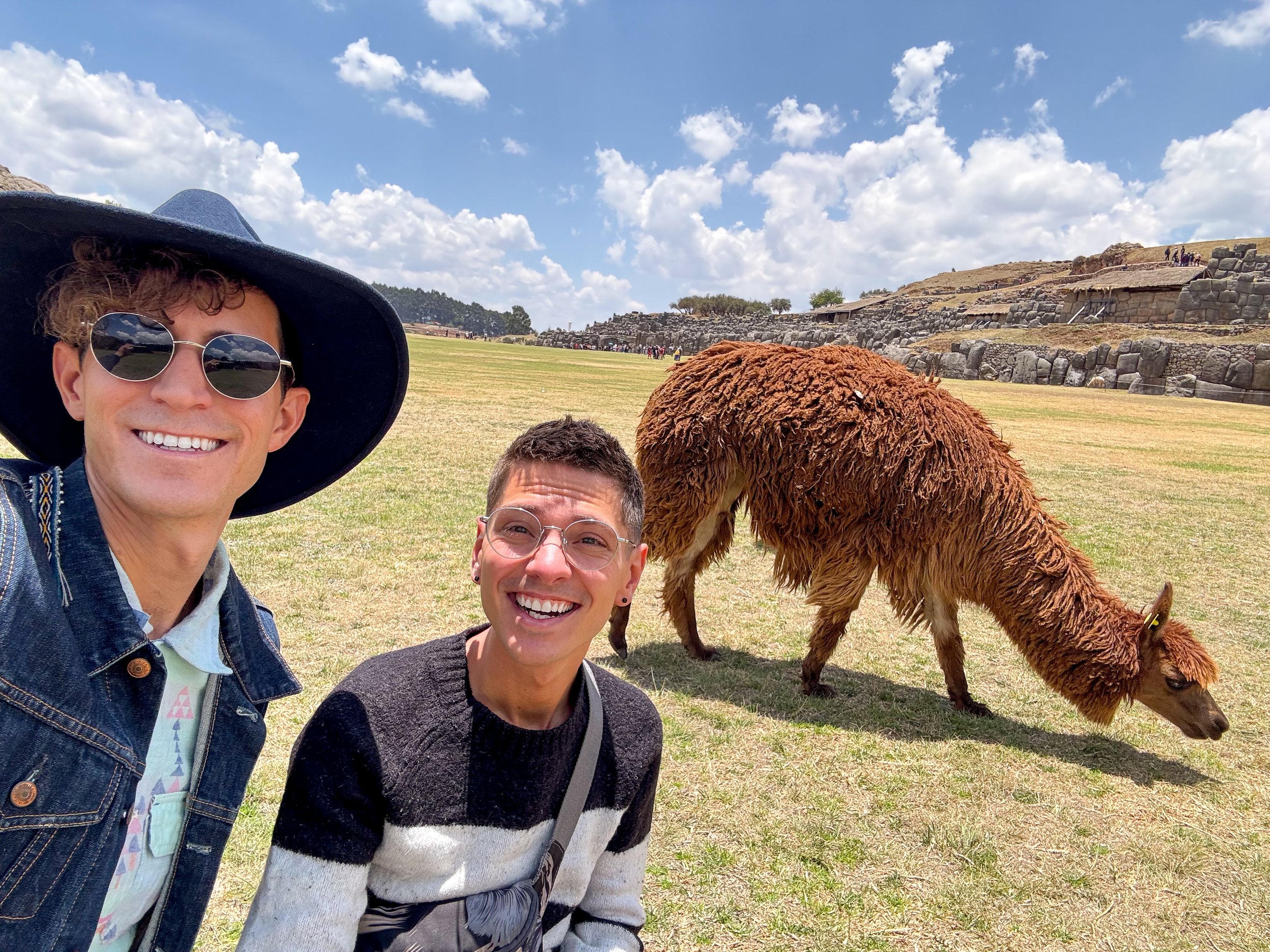
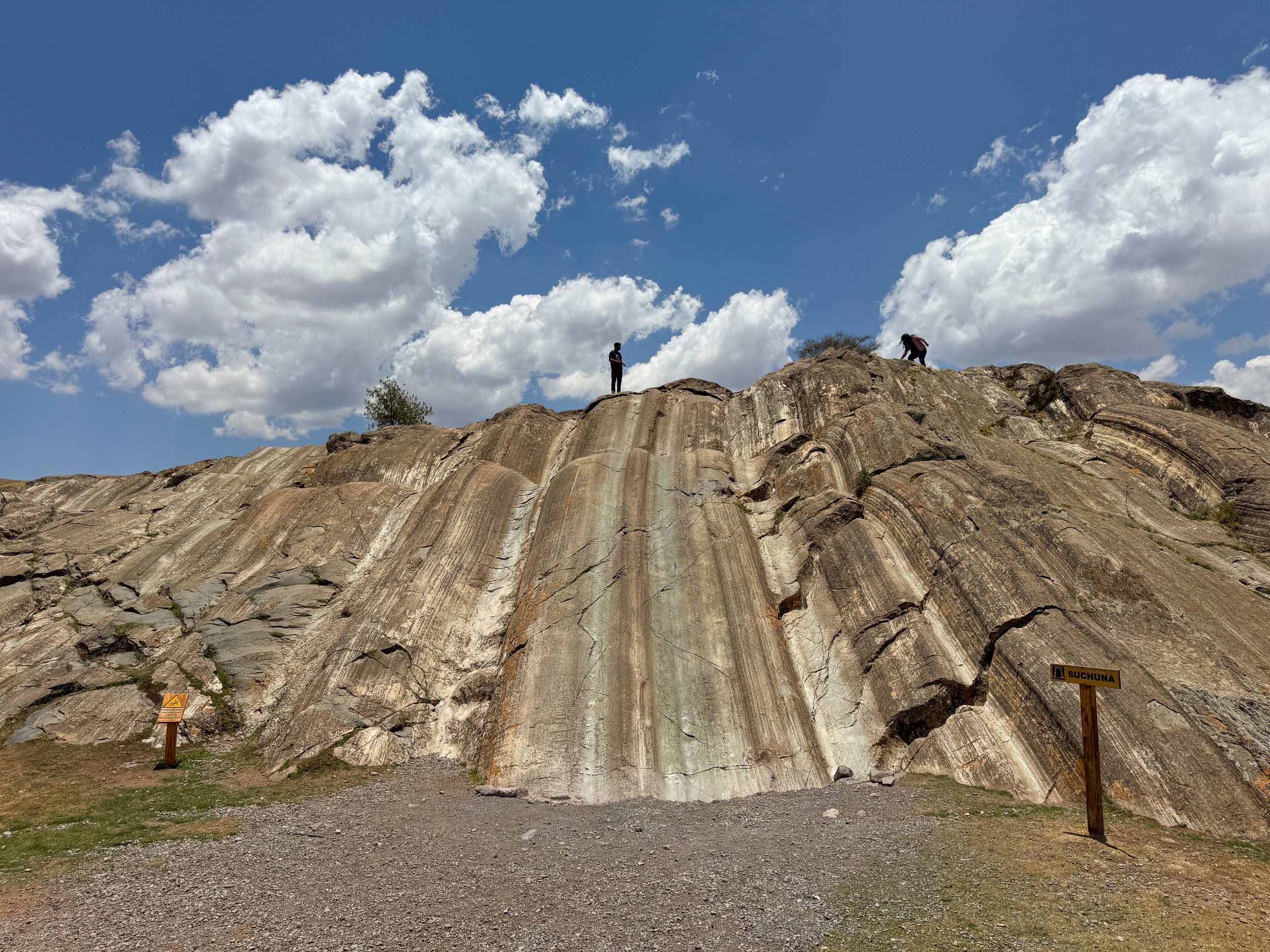
Incan Ruins
Cusco, the center of the Incan Empire is home to numerous ruins, ancient stone streets and former temples. We walked across the city visiting several of the sights during our stay.
Sacsayhuaman. The citadel of the Incan empire with a large stone fortress, royal thrones, carved rock temples, agricultural terraces and aqueducts.
Muyuq Marka. The central fortress made from three terraced stone walls shaped in a zig zag pattern with stone gates, guard posts, astronomical temples and platforms to store water.
Trono del Inca. A rock formation with thrones carved into it overlooking the fortress and Cusco valley.
Explanada. A central field with views of the stone walls and throne, home to a small heard of grazing alpacas.
Rodadero. A rock formation used as a stone quarry with section of carved stone, upside down stairs and a natural slide polished smooth over hundreds of years by people sliding down it. We joined the locals and slid down its surface with ease.
Chincana Chica. An underground cave leading through a narrow stone passageway used by the Incas for worship and storage.
Qochas Chincanas. A circular arena with a grassy field and stone bleachers surrounding it used for celebrations and sacrifices.
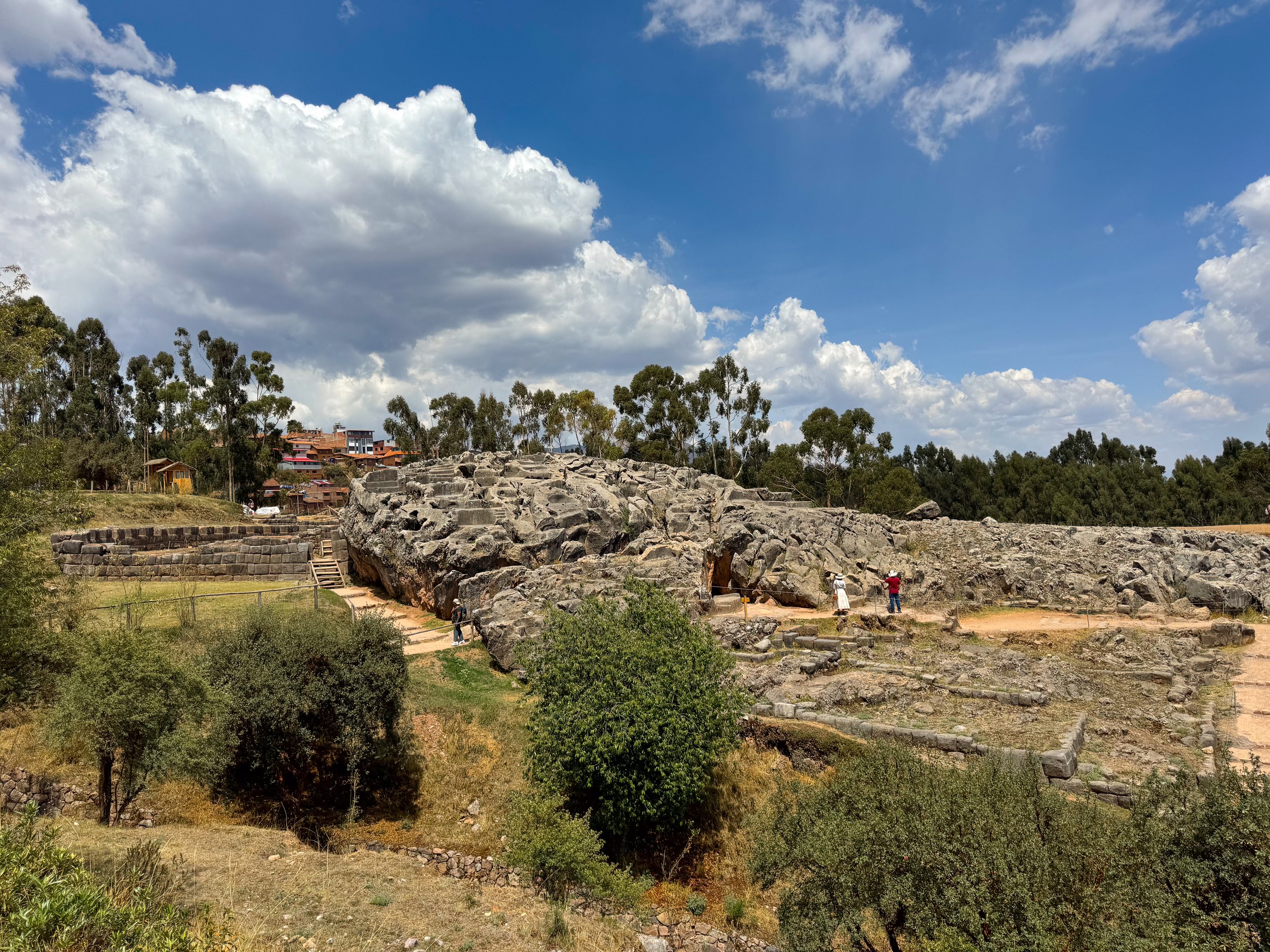
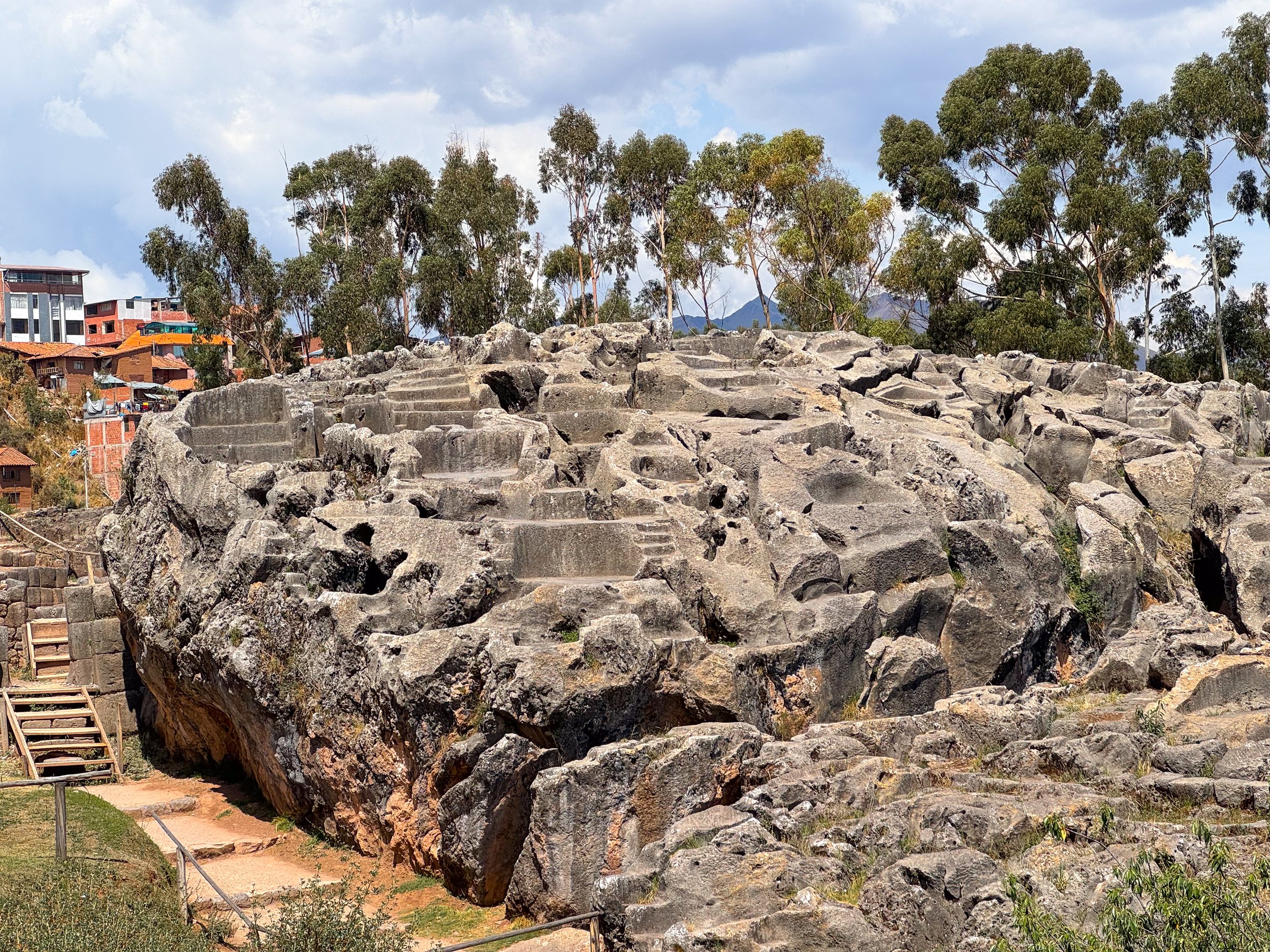
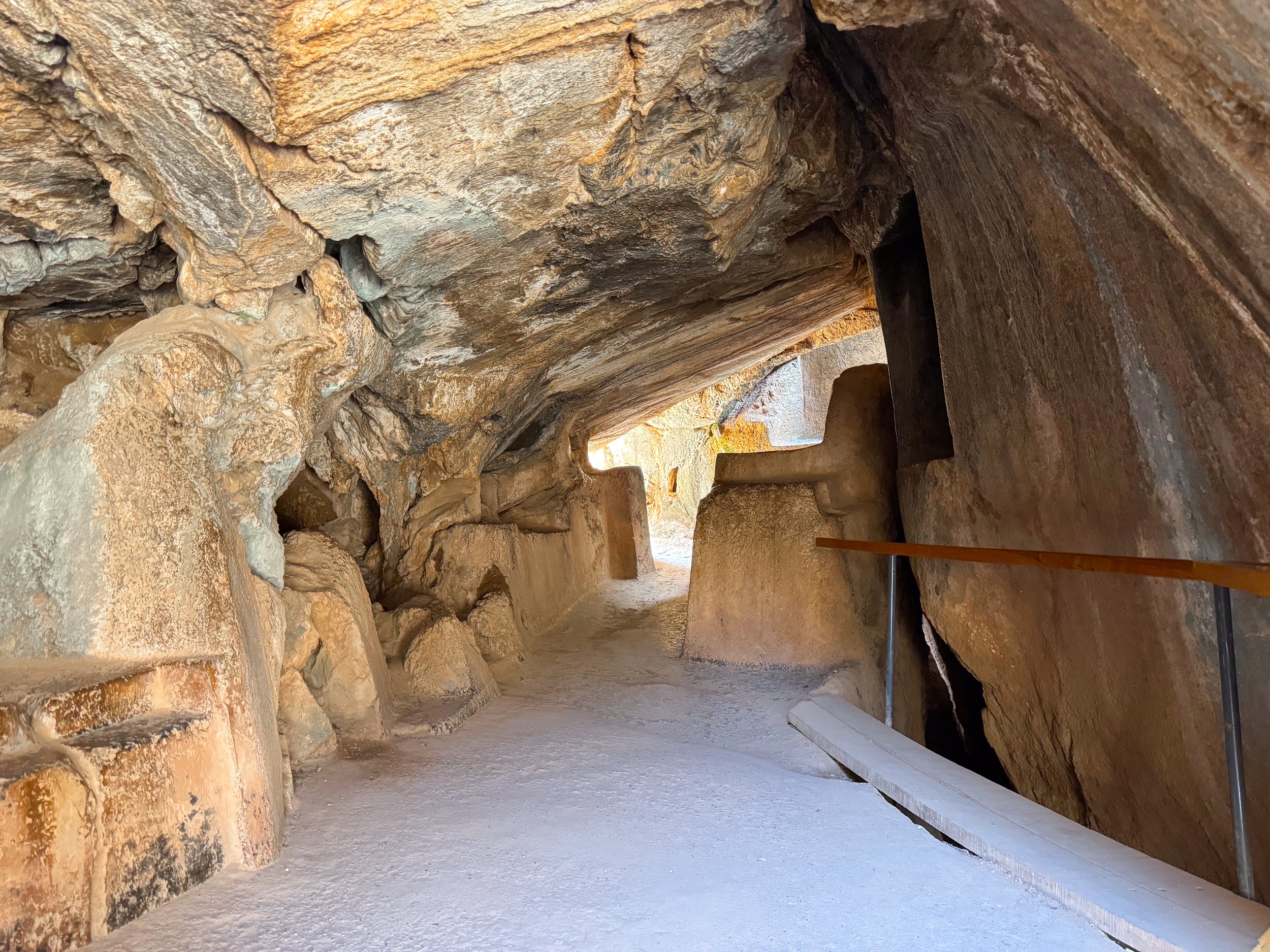
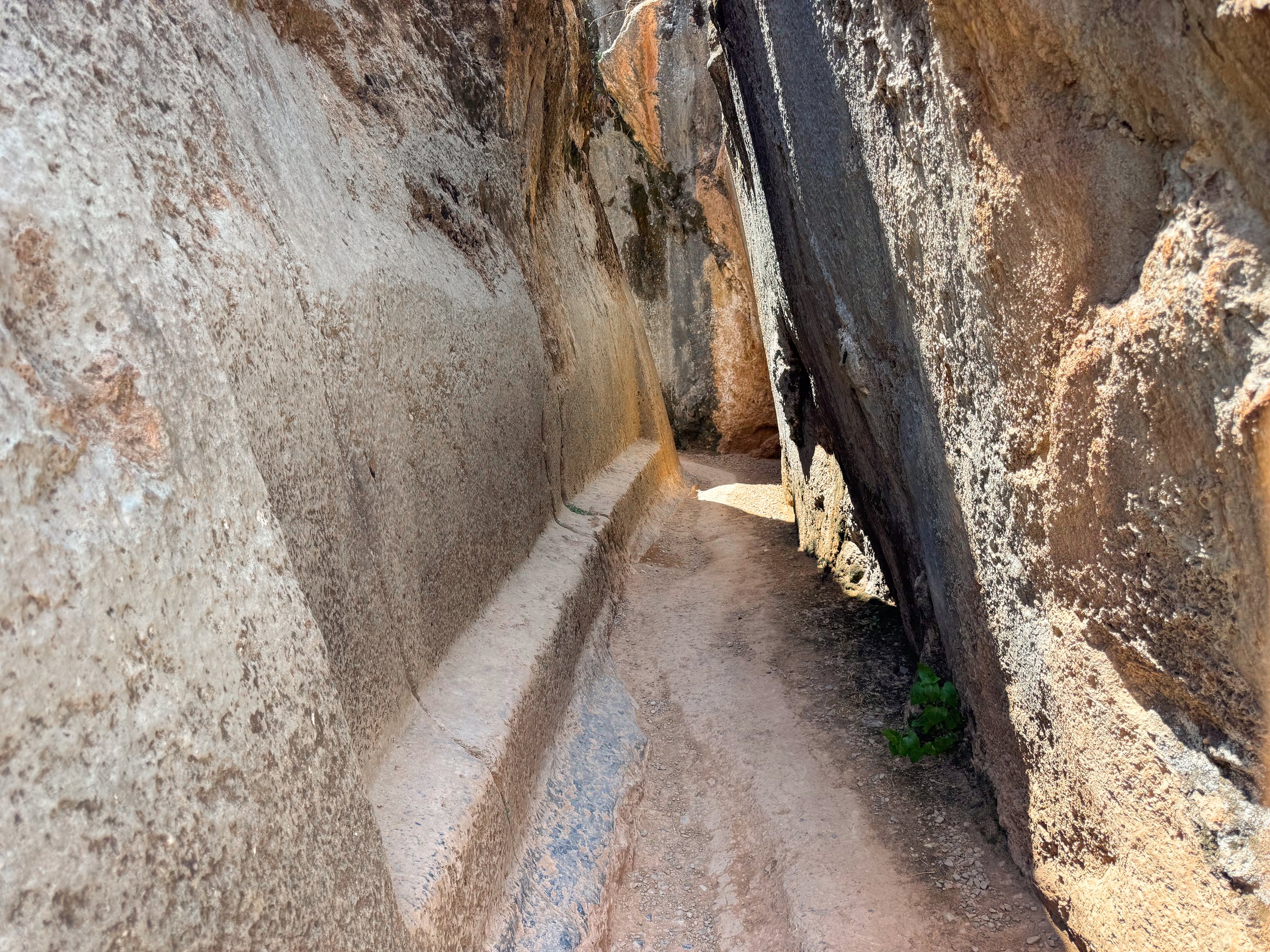
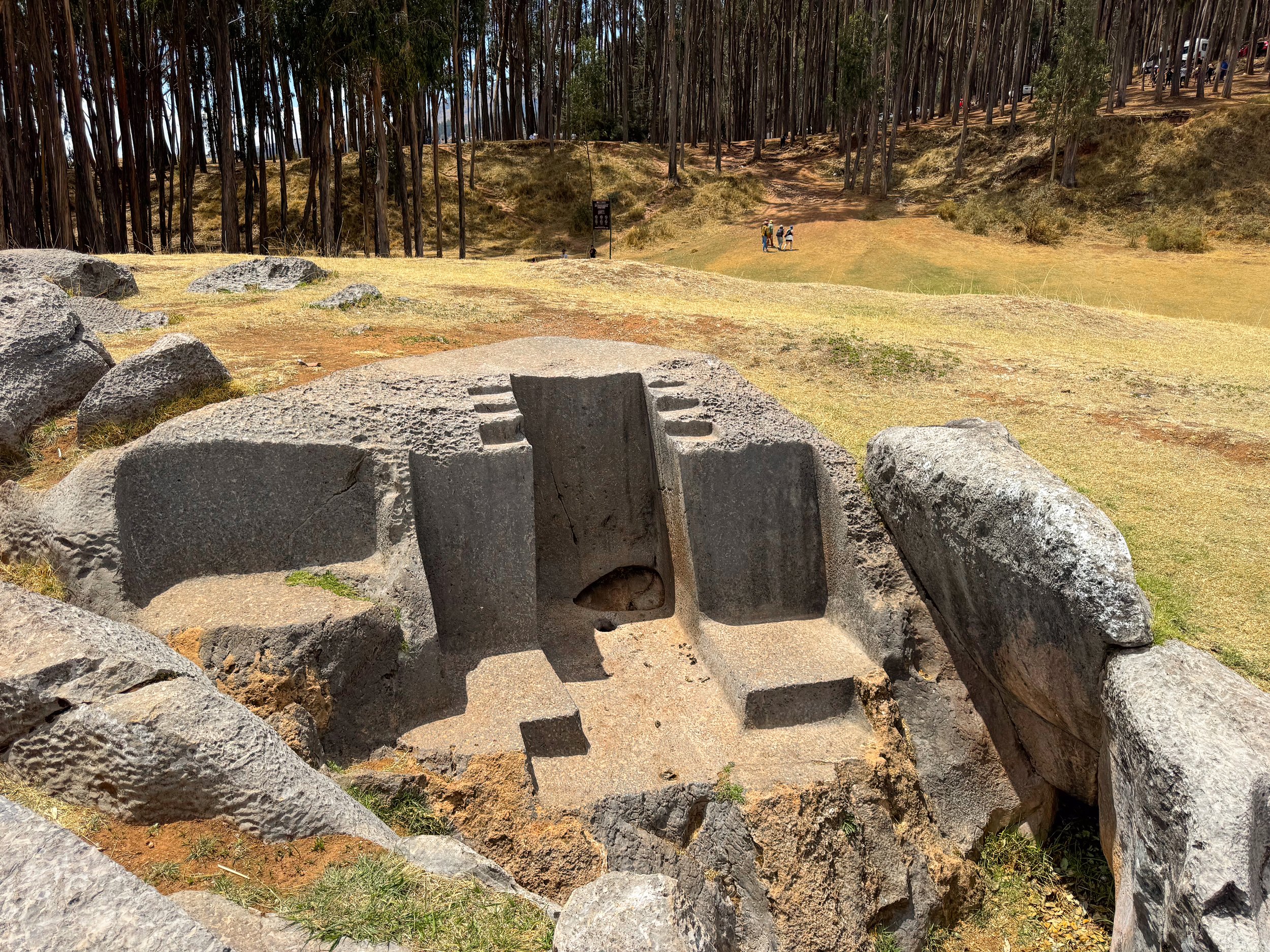
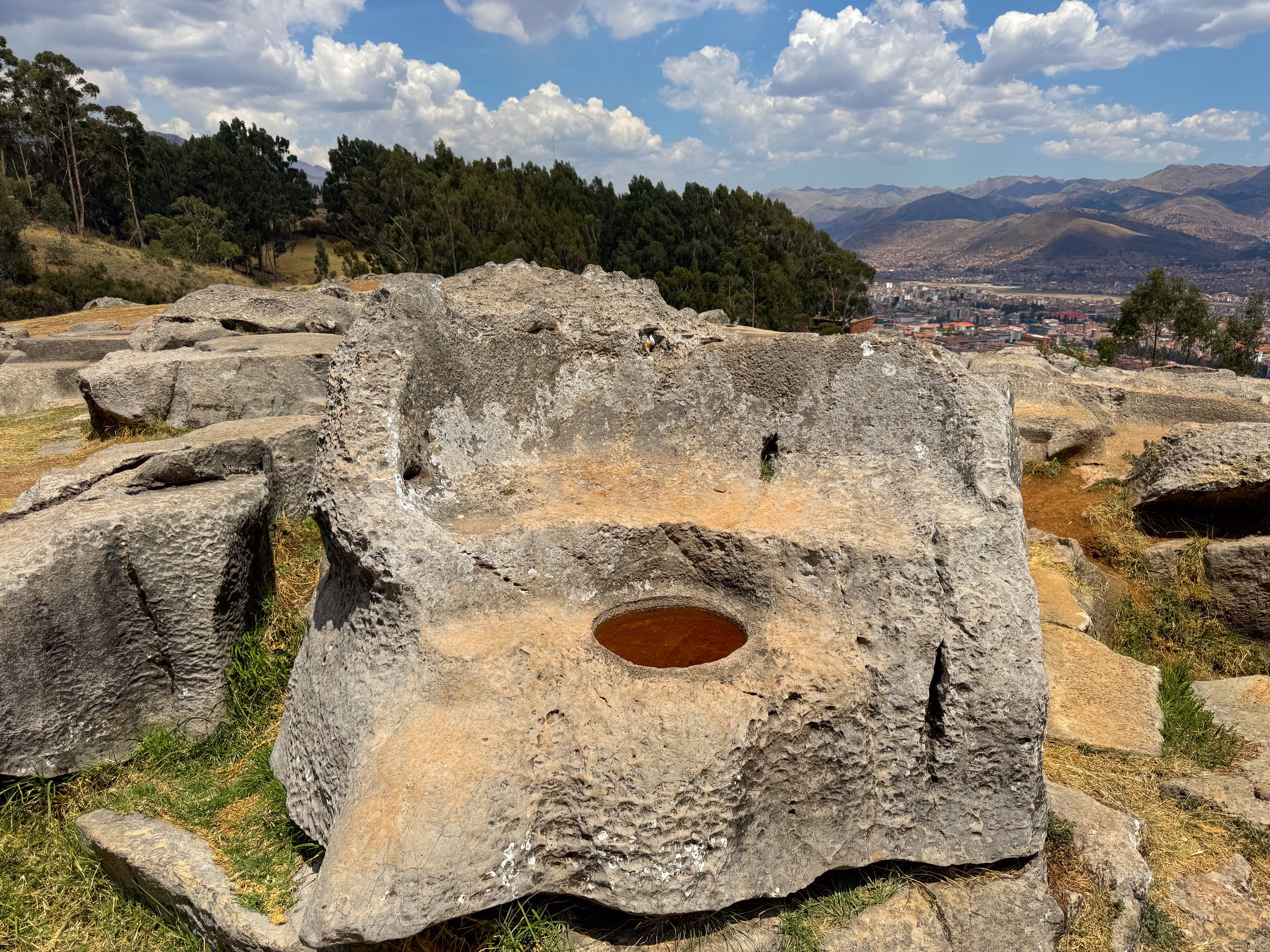
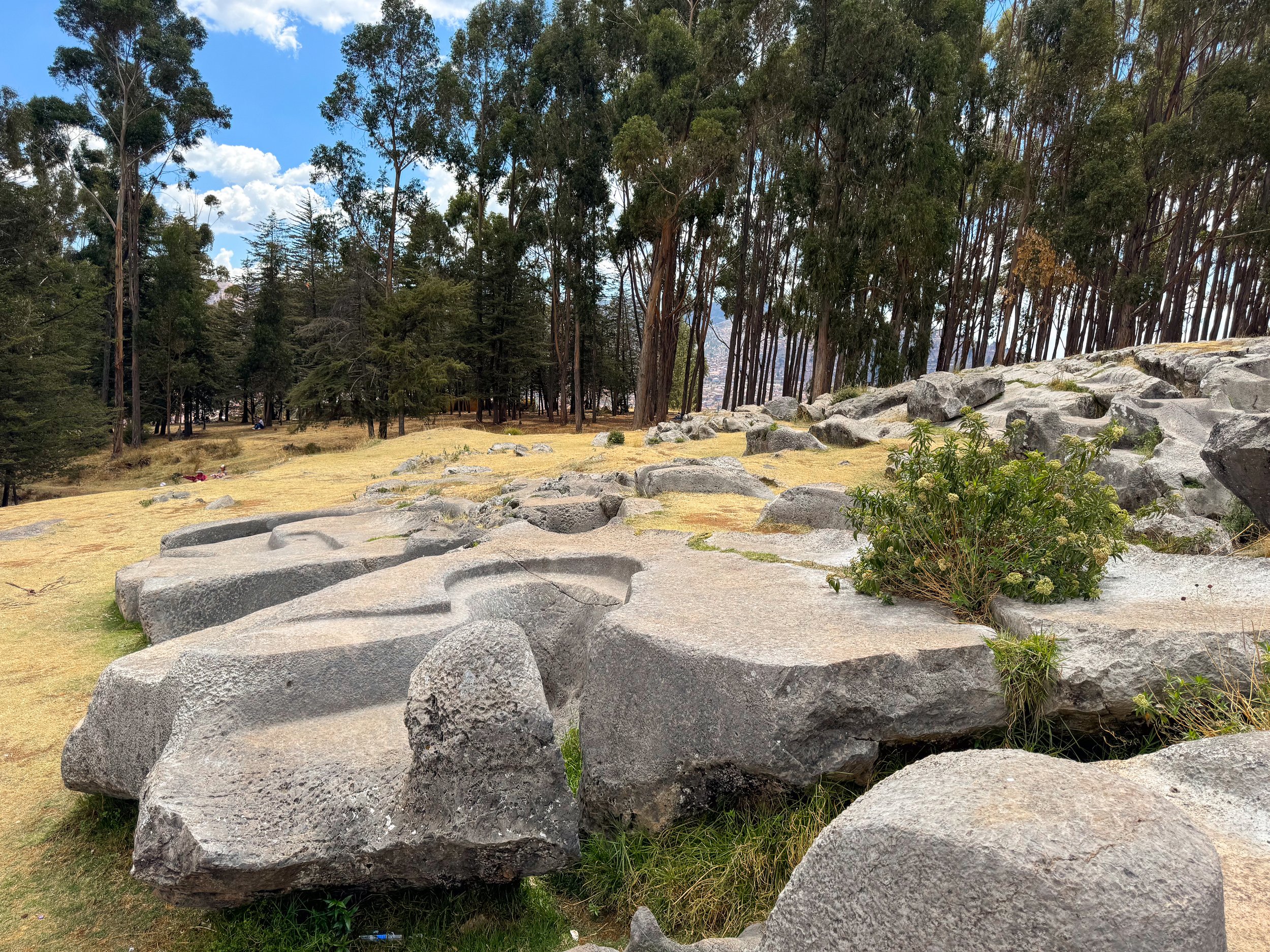
Q’enco. Stone ruins of a ceremonial sight used by the Incas to sacrifice humans and animals. We followed a guided path through an amphitheater used to watch sacrifices, past observation thrones, stone sacrificial beds, pools for blood to accumulate, through caves used to leave offerings and a canal for blood to flow along, including one shaped like a snake. The top is forbidden to walk on.
Q’enco Chico. A smaller ceremonial sight below Q’enco used for the same sacrificial purposes. Unlike Q’enco, this sight can be walked on and explored more freely. Today, it’s a popular picnic sight.







Calle Hatunrumiyoc. A historic street with Incan stone walls on both sides. It’s a good place to see the complexity of the stonework made by the Incans. The most prominent feature is, Piedra de los 12 Angulos, a large stone carved with 12 corners and perfectly fitted with the surrounding stones.
Calle de Siete Culebras. An Incan street with stone walls and carvings of snakes.
Qorikancha Temple (Golden Temple of the Sun). The ruins of an Incan temple dedicated to the worship of the sun. Prior to the Spanish conquest, the temple was plated in gold. It was stripped off and a cathedral was built on top of its walls. The temple remains mostly intact and can be toured from within the cathedral. We climbed the bell tower of the cathedral overlooking Cusco.
Sapantiana Aqueduct. An ancient stone aqueduct bridge and canal used to transport water by the Incas and still used today.
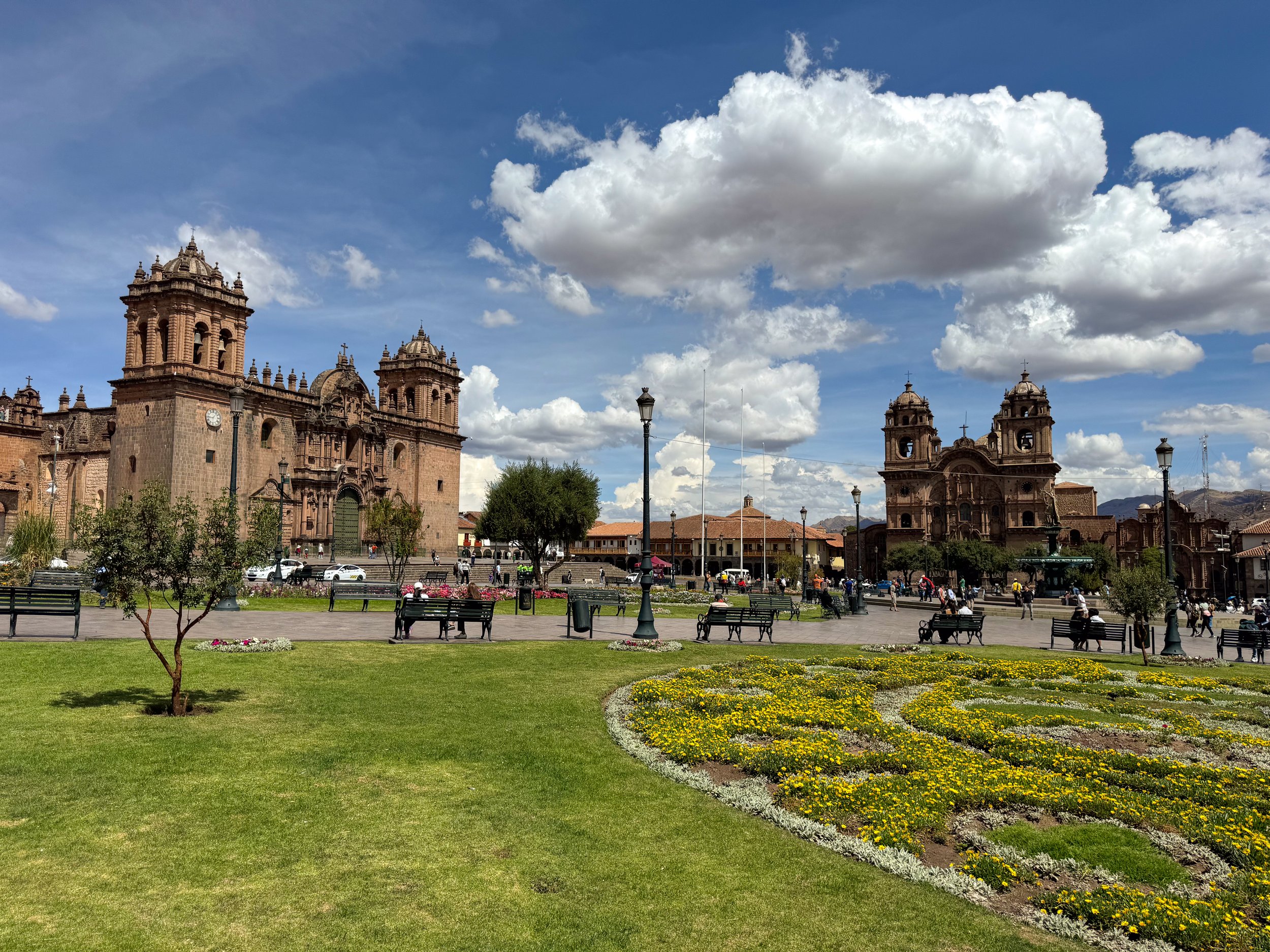
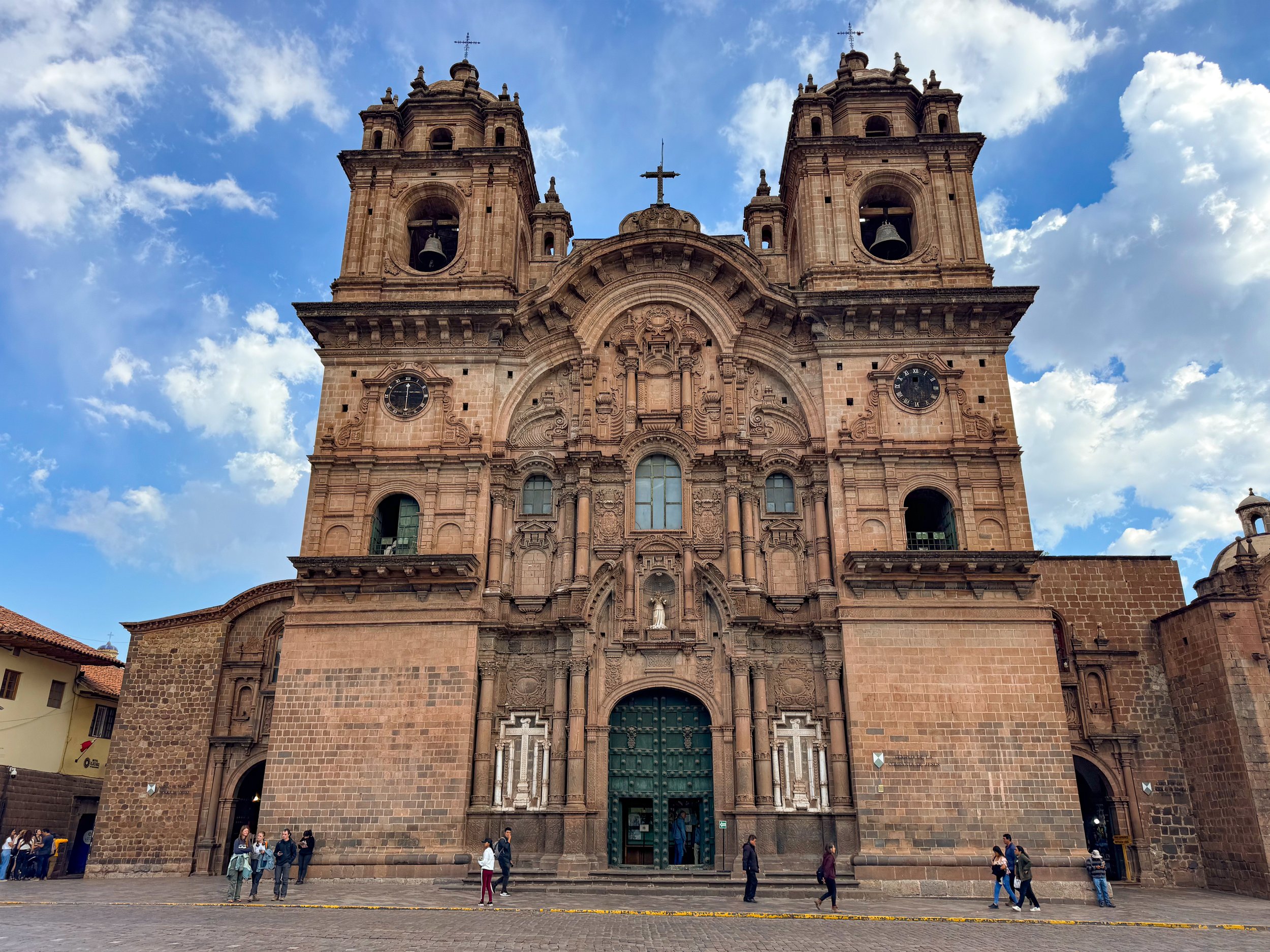
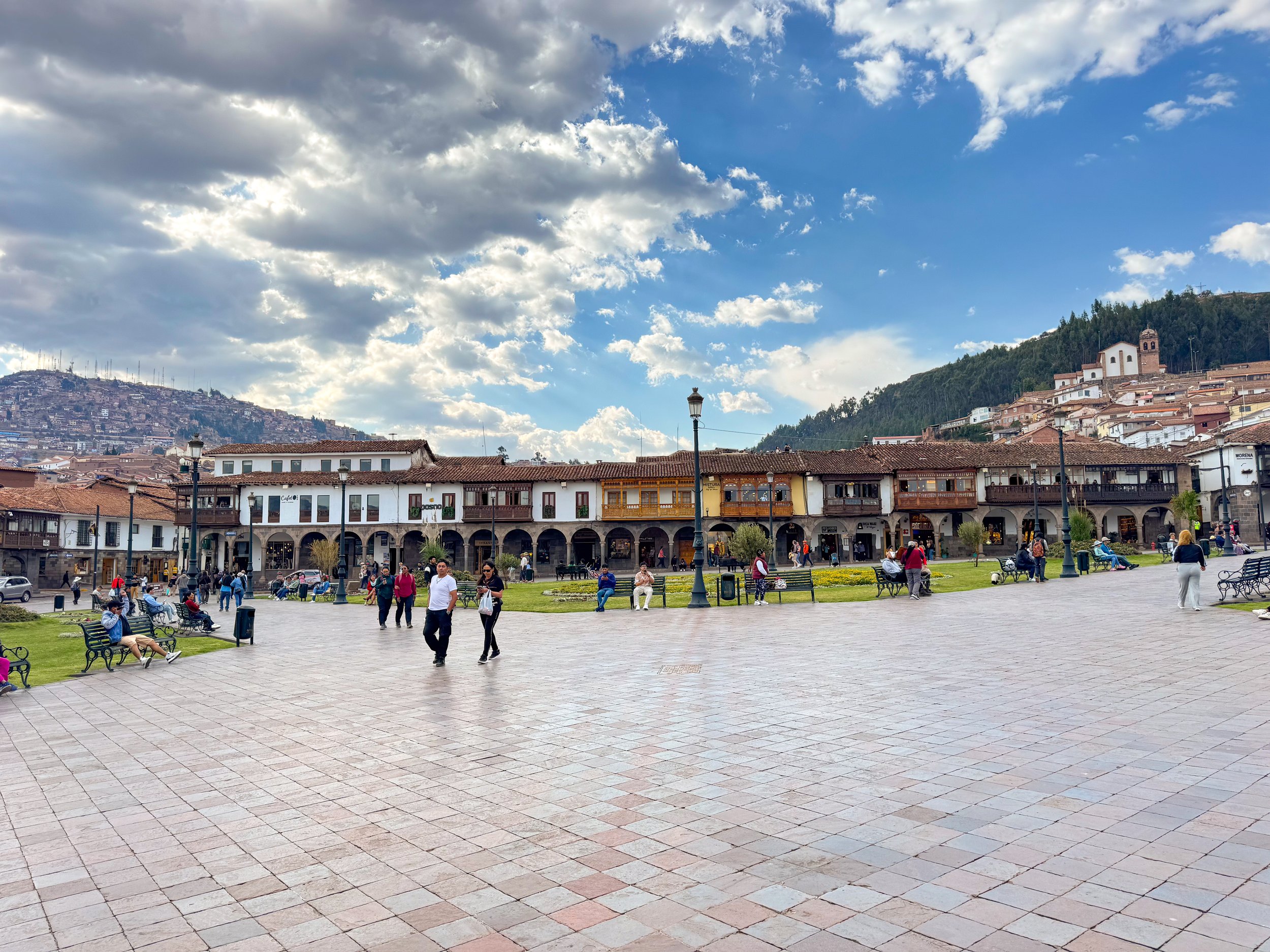
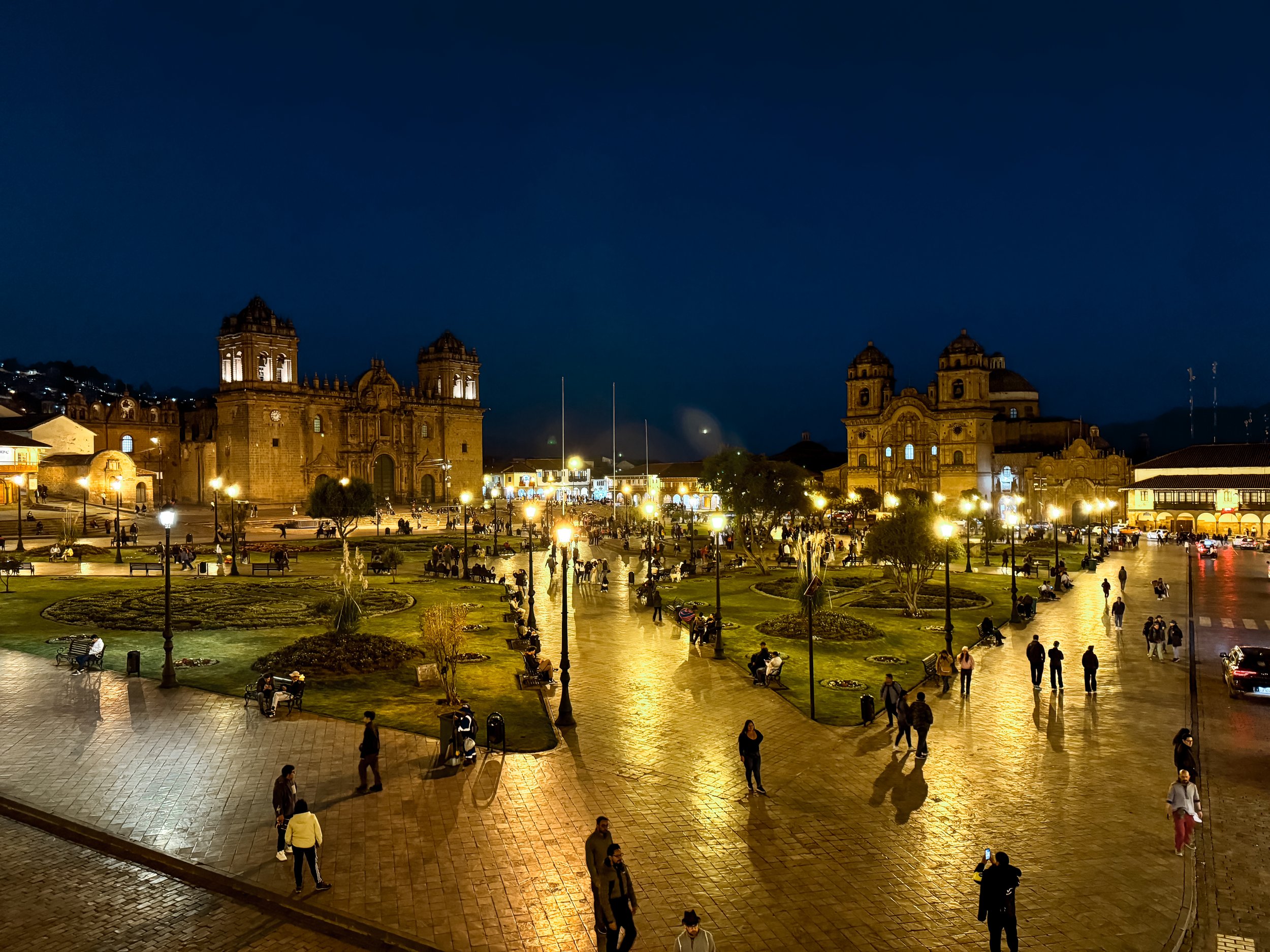

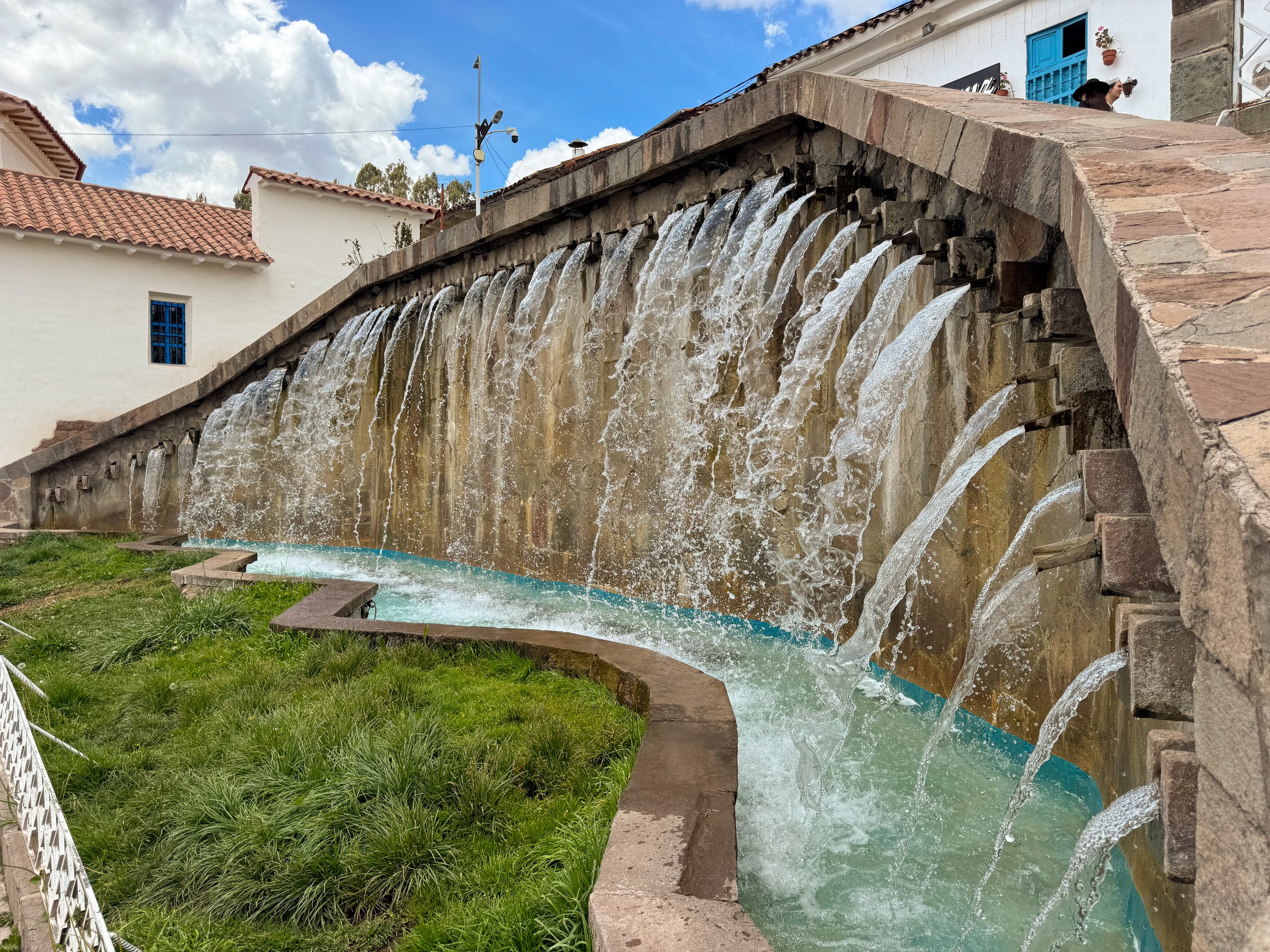
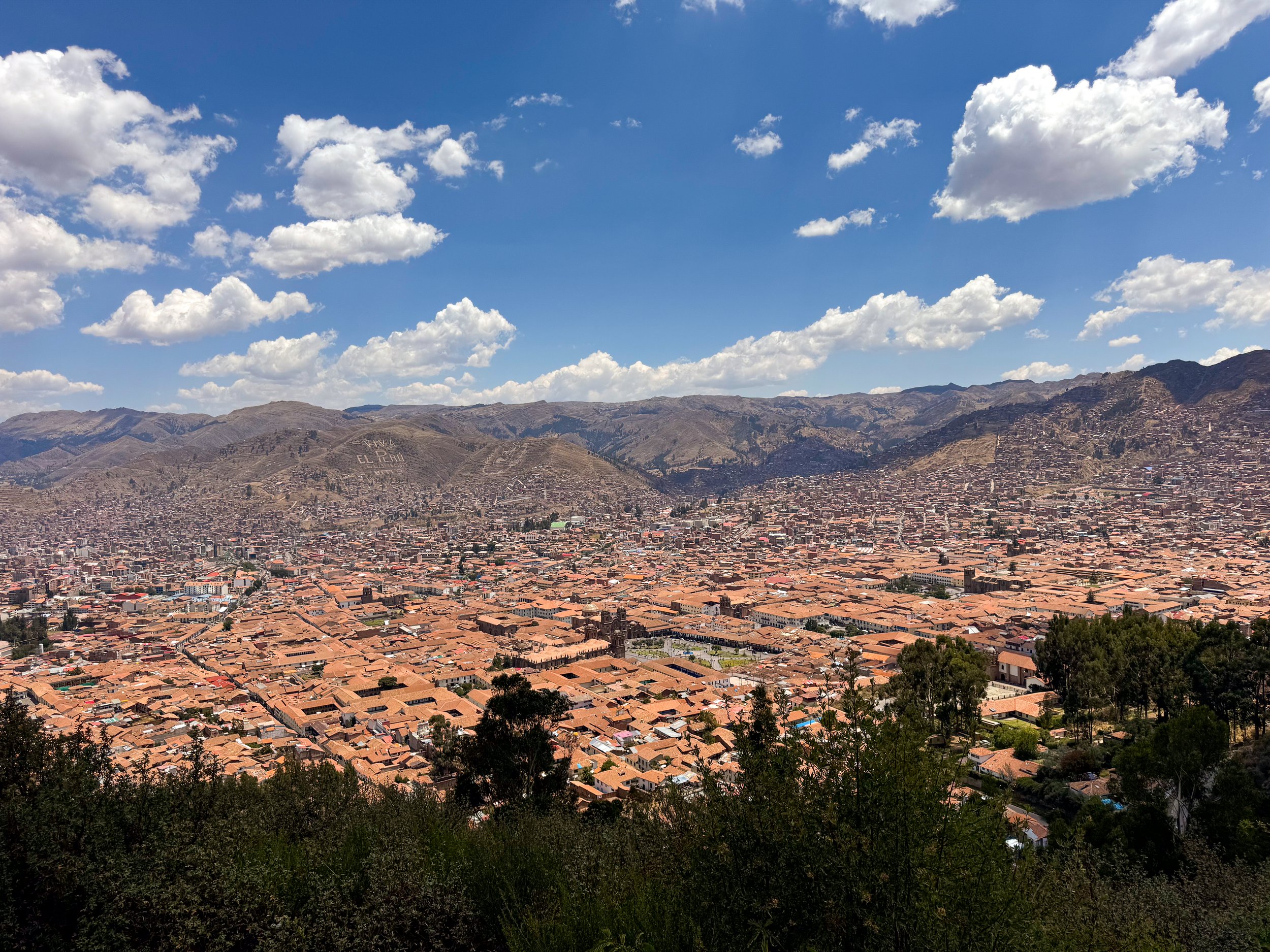
Sights & Museums
Plaza Mayor. The central plaza in Cusco with two large cathedrals, balcony lined buildings, flowering gardens and a central monument dedicated to the Incas. It is a hub for restaurants, tour companies, massage parlors, textile stores and souvenir shops.
Cusco Cathedral. The cathedral at the south side of Plaza Mayor with an ornate stone facade and two large bell towers. We toured the gold gilded interior, visited the crypt and climbed to the second level of both bell towers overlooking the plaza.
Museo de Arte Pre-Colombia. A museum dedicated to the pre-Colombian civilizations and cultures of ancient Peru. The ground floor galleries separate artifacts by the material they are made from including shell, silver, gold, wood, stone and ceramic. The second floor galleries separate artifacts by the regions and cultures of ancient Peru through Incan times to the Spanish conquest.
Qorikancha Museum. An underground museum beneath the lawn outside of the Qorikancha Temple with artifacts including ceramics, textiles, mummified remains and skulls with surgical markings and deformations. The museum exits through the lawn with the ruins of Incan stones and an aqueduct.
Plaza San Blas. A plaza with a large fountain, church, small museums, an artisan market and shops
Mirador San Blas. A romantic plaza with views of the neighborhood and Cusco. Couples attach love locks to the rails and make out on the park benches.
The San Cristobal Viewpoint. A scenic lookout above Cusco with panoramic views of the clay tiled roofs of the city, the stone cathedrals and the distant hillside.
The Cristo Blanco View Point. A lookout high above the city with a small white painted copy of Rio’s Christ the Redeemer.
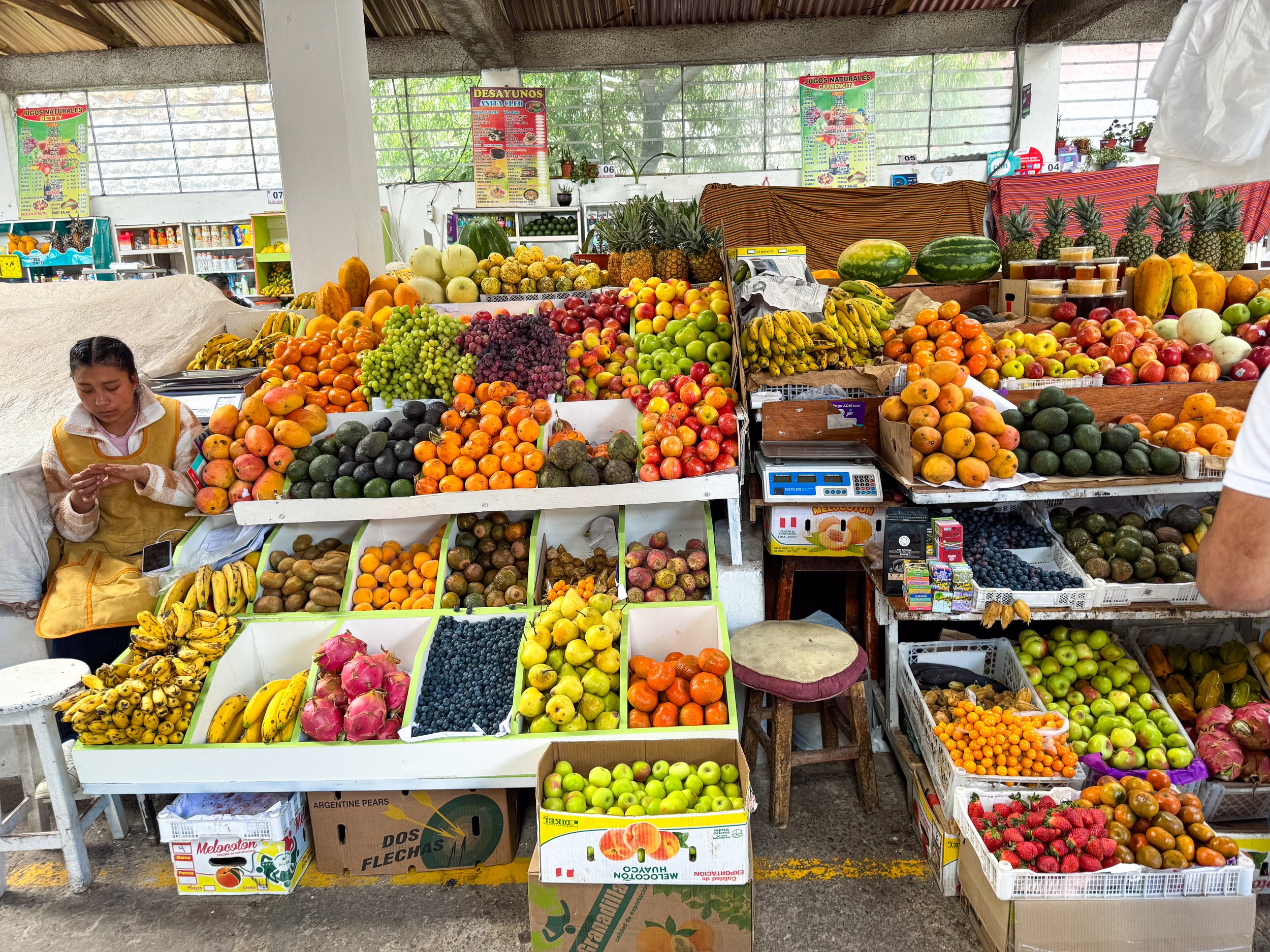
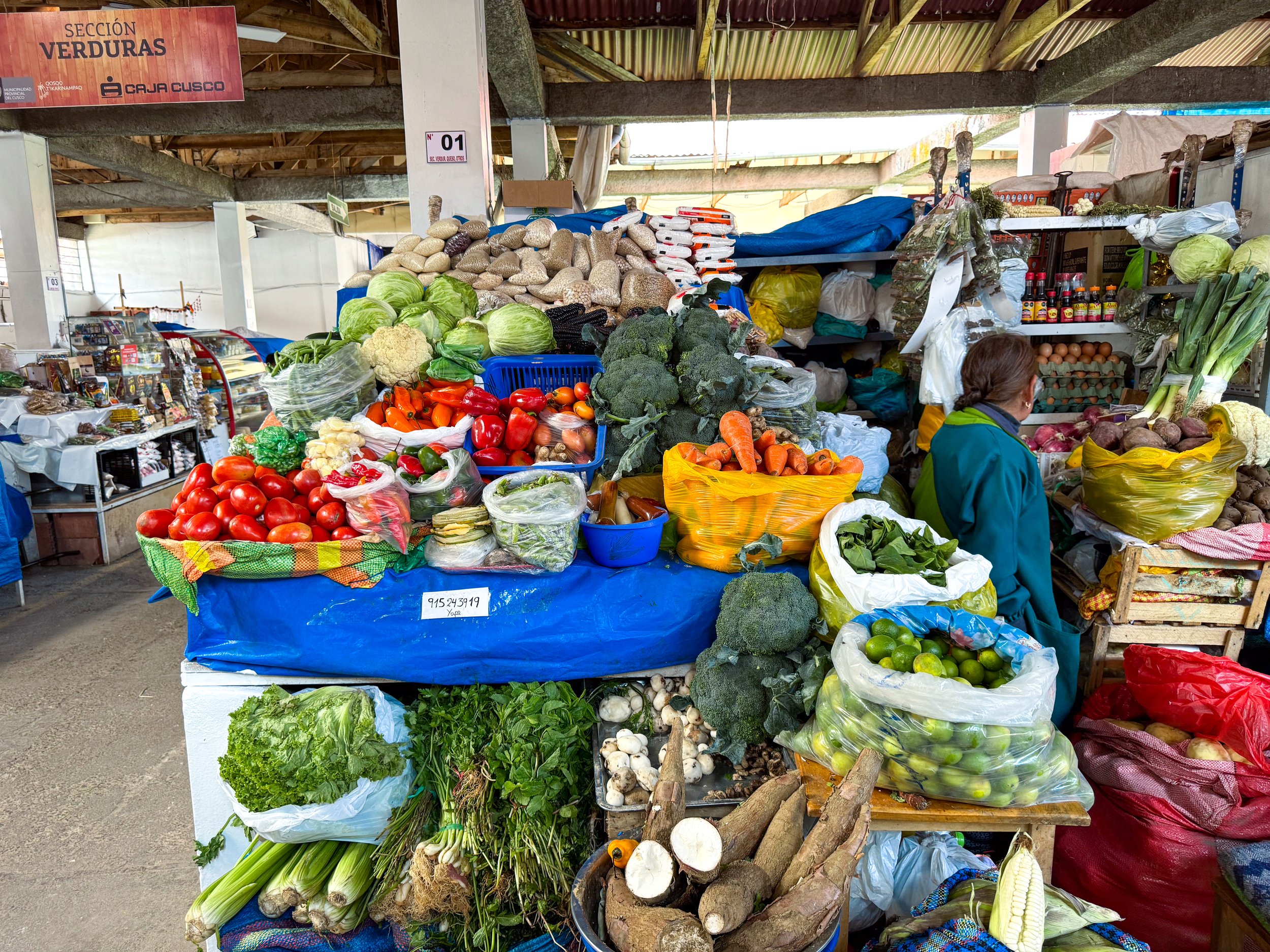
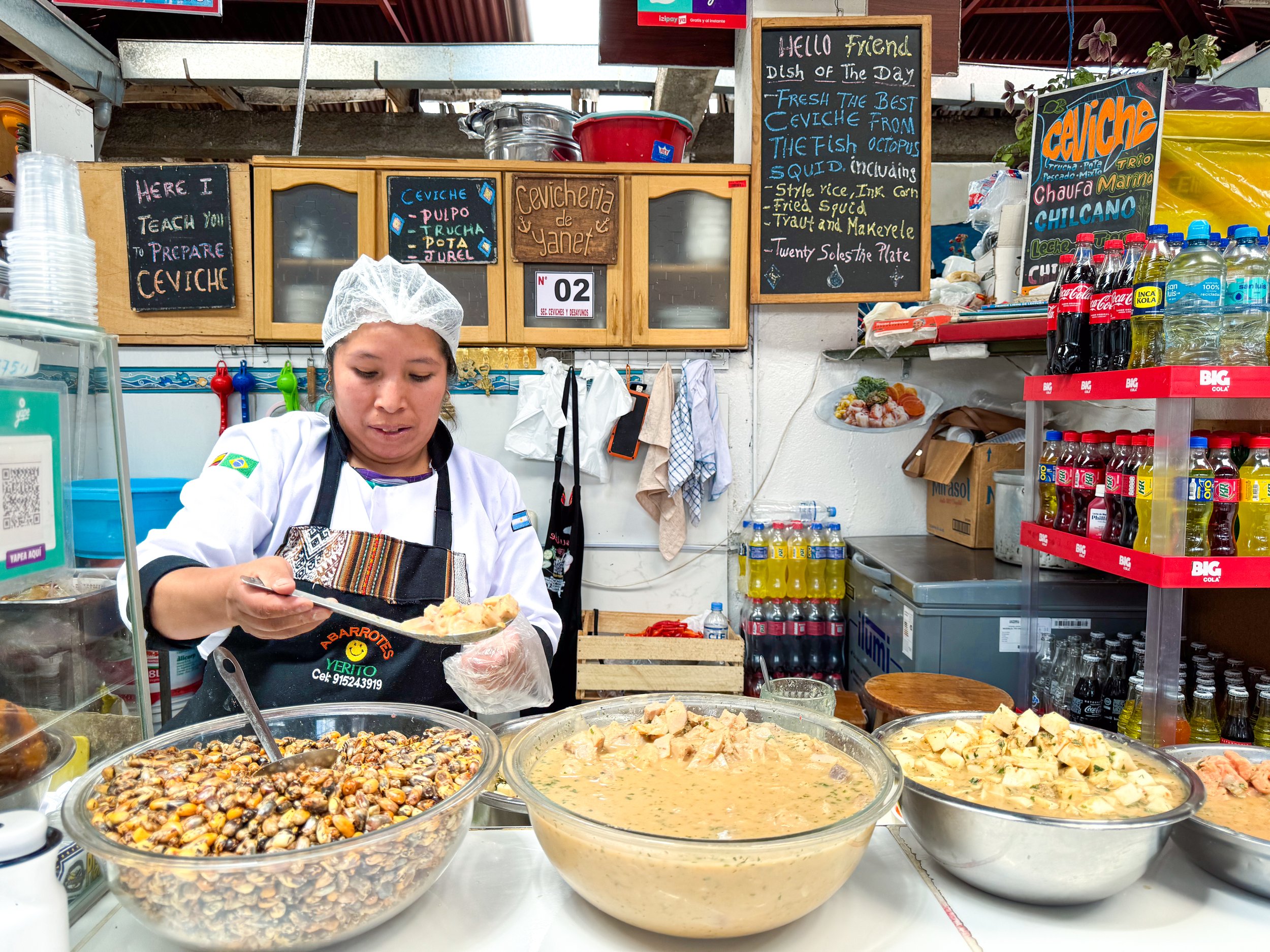
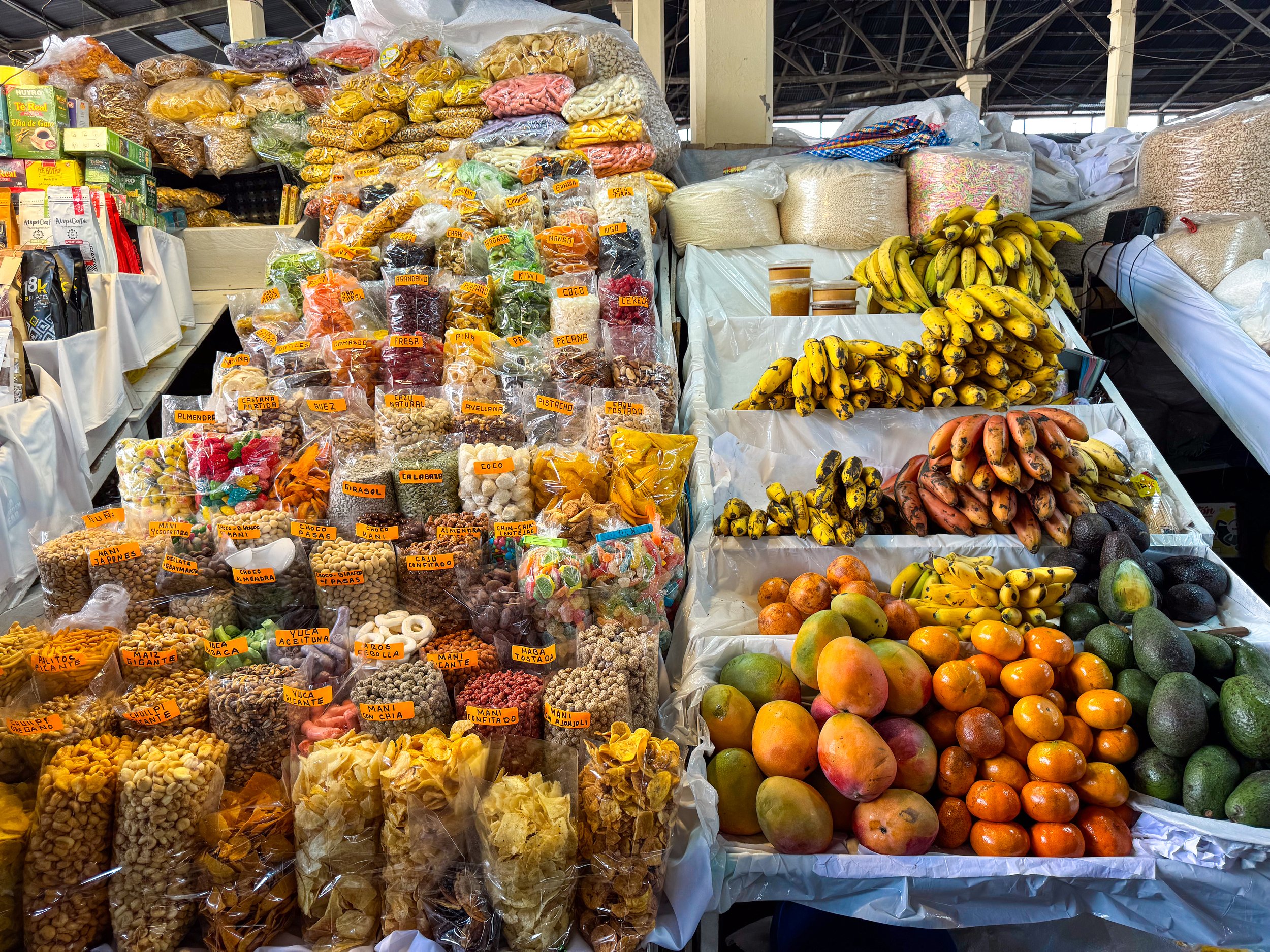
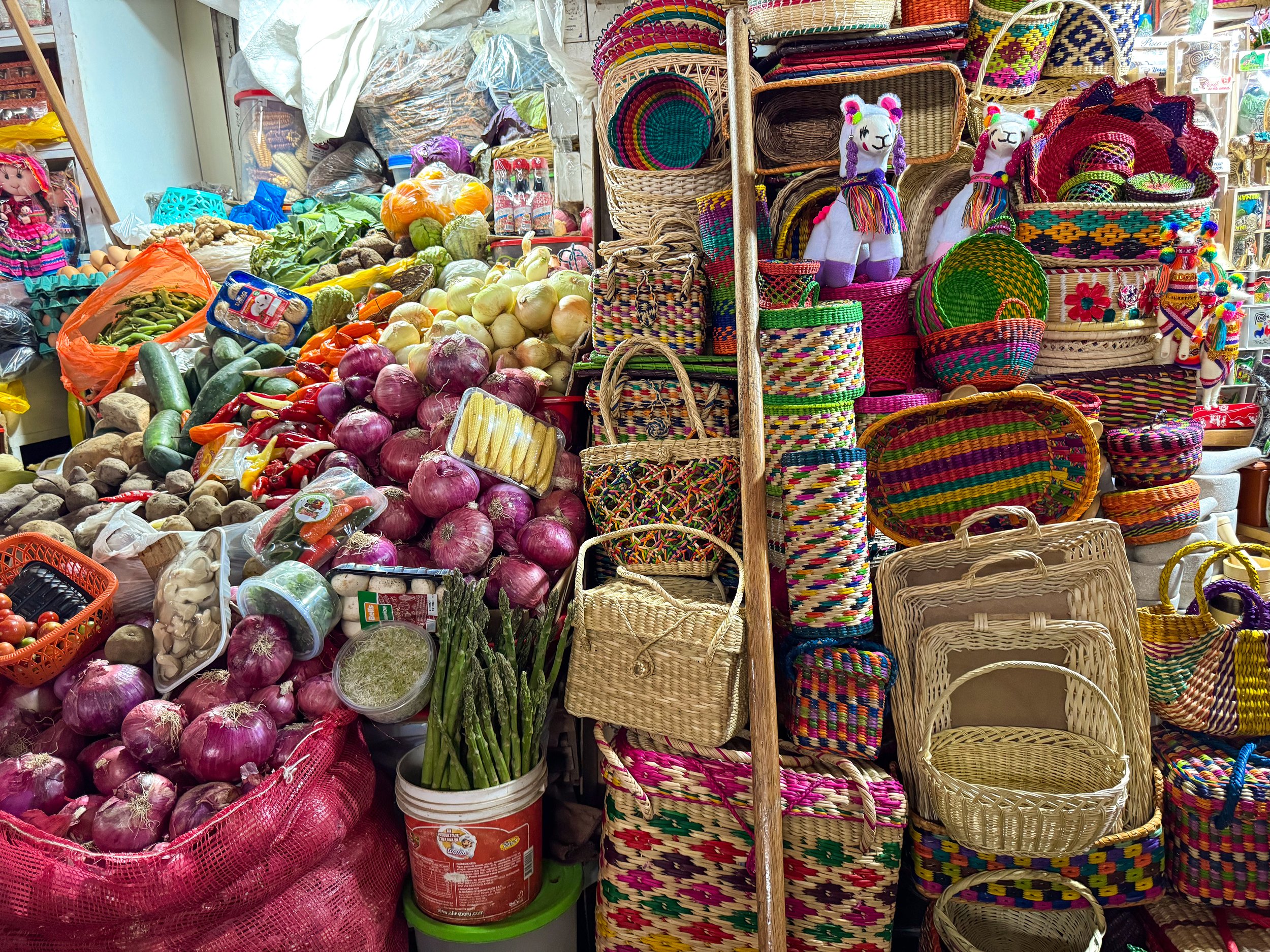
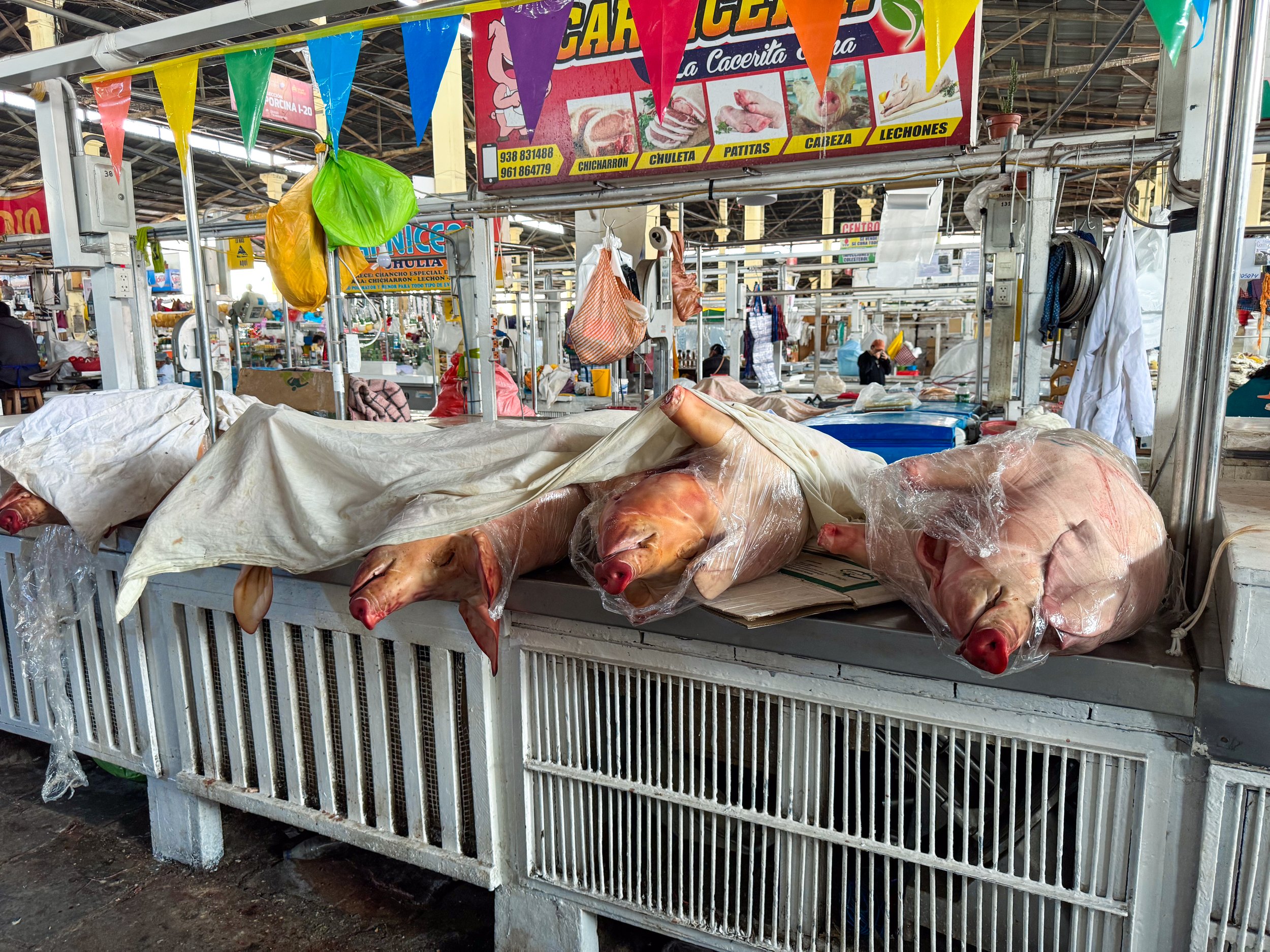
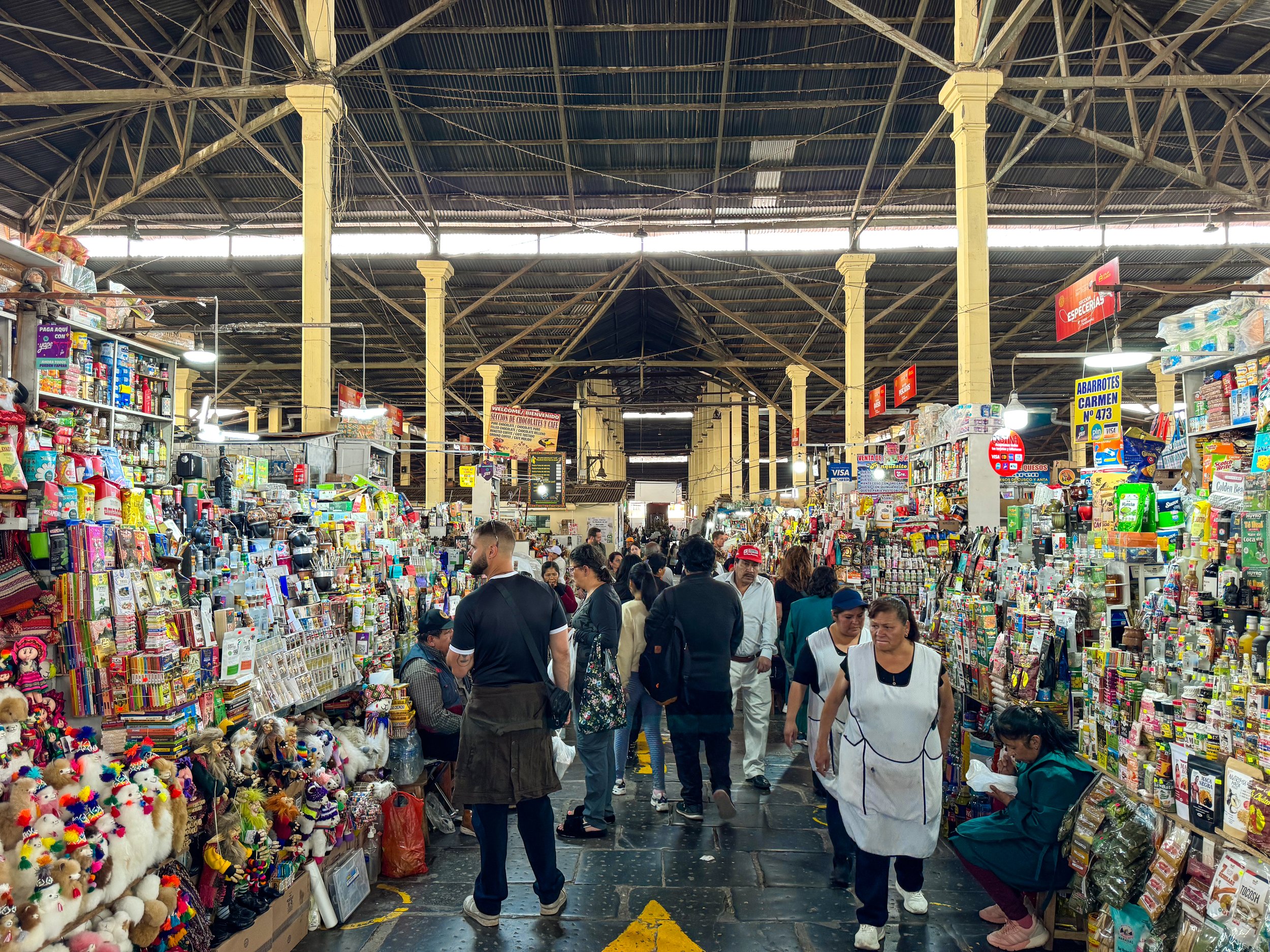
Markets
San Blas Market. A small neighborhood market catering to a mix of locals, expats and backpackers with vendors offering a robust mix of fresh produce, vegetables, meats, fish, dairy and dry goods. We bought a variety of Peruvian potatoes, squash, fruits, Andean cheese, eggs, milk, butter, flour and yeast to cook meals throughout the week.
The market is the perfect spot for a local lunch with restaurants serving Peruvian and vegan cuisine. We ate at Cevicheria de Yanet, sharing a bowl of mixed ceviche made with squid, trout and mackerel. It came with sides of chicharon de calamari, seafood soup, canchas and homemade chicha.
San Pedro Market. A large and colorful market with vendors selling handicrafts, fruits, vegetables, grains, herbal remedies, snacks, candies, flowers and meats. The meat market is a bit intense with butchers selling whole pigs, skinned horse heads, bloody bull horns and organs.
The most popular reason to come here is for the fresh juices, Peruvian style street food and aisles of small restaurant stands. The cooks at each stand called for us to sit down, competing with their neighbors, as we walked past the benches of customers and busy kitchens with large steaming pots. After scanning the menus, we sat down and ordered a plate of fried trout with lentils, rice, salad and a bowl of vegetable soup for 8 Sols each.
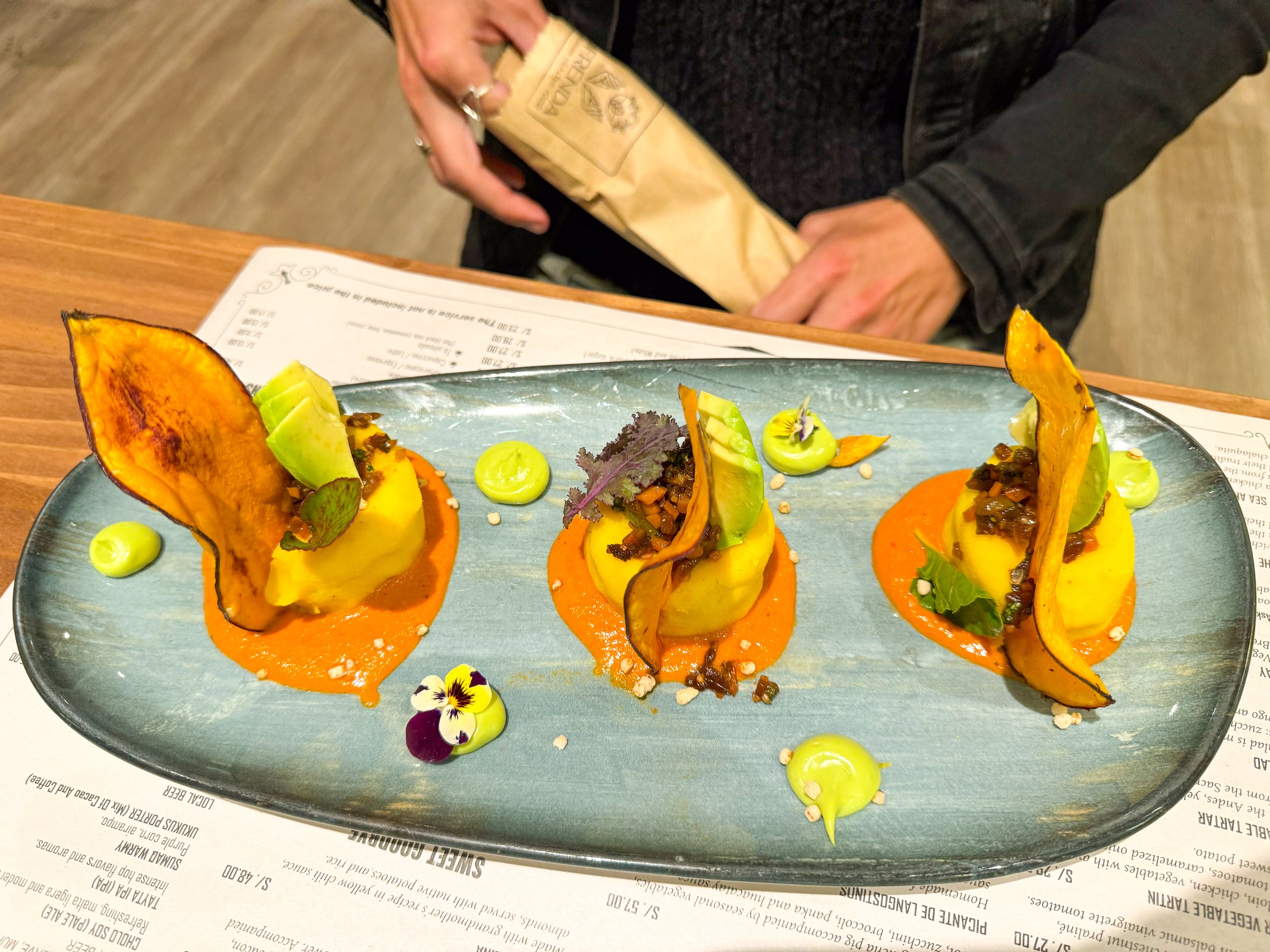
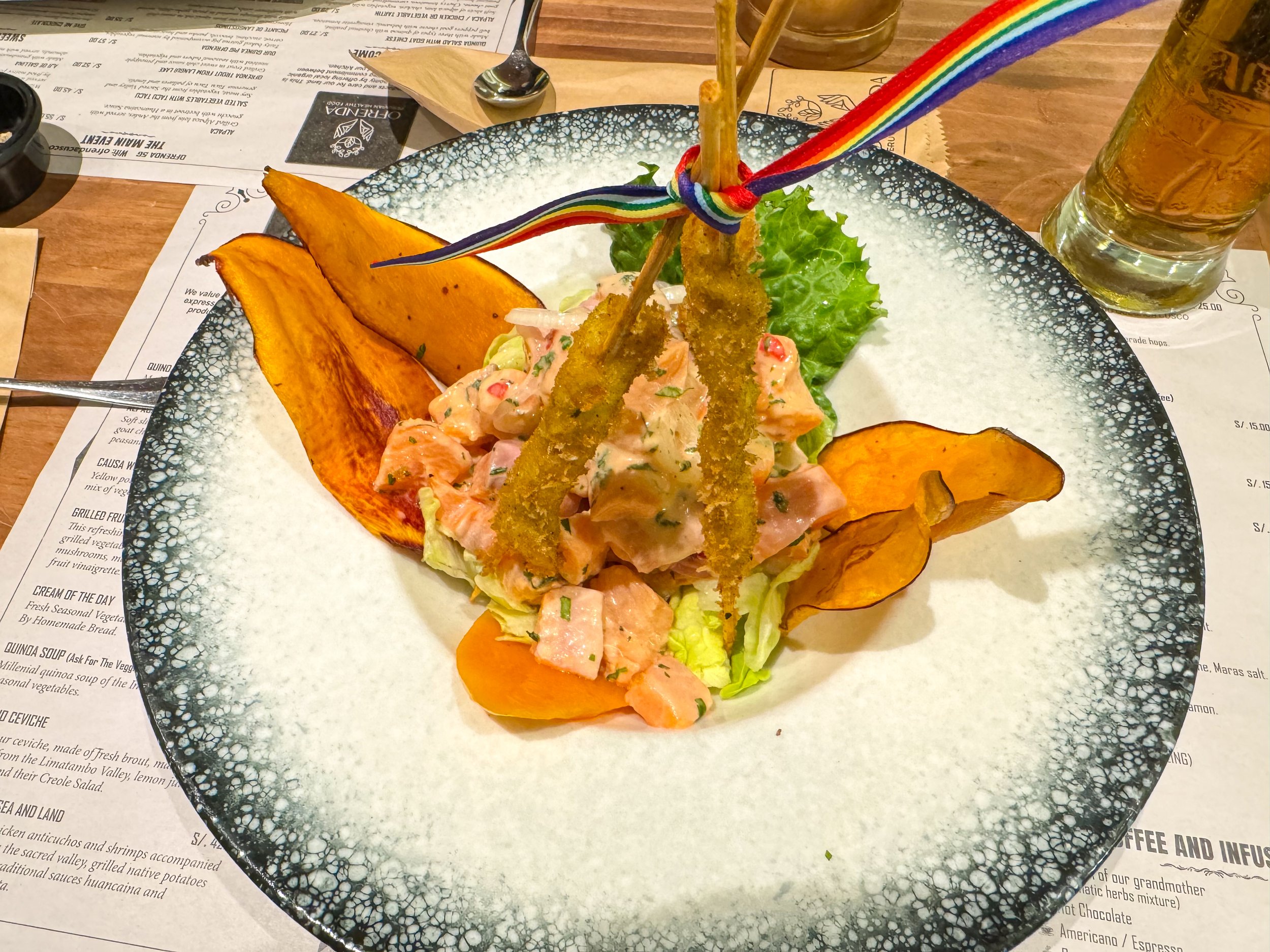
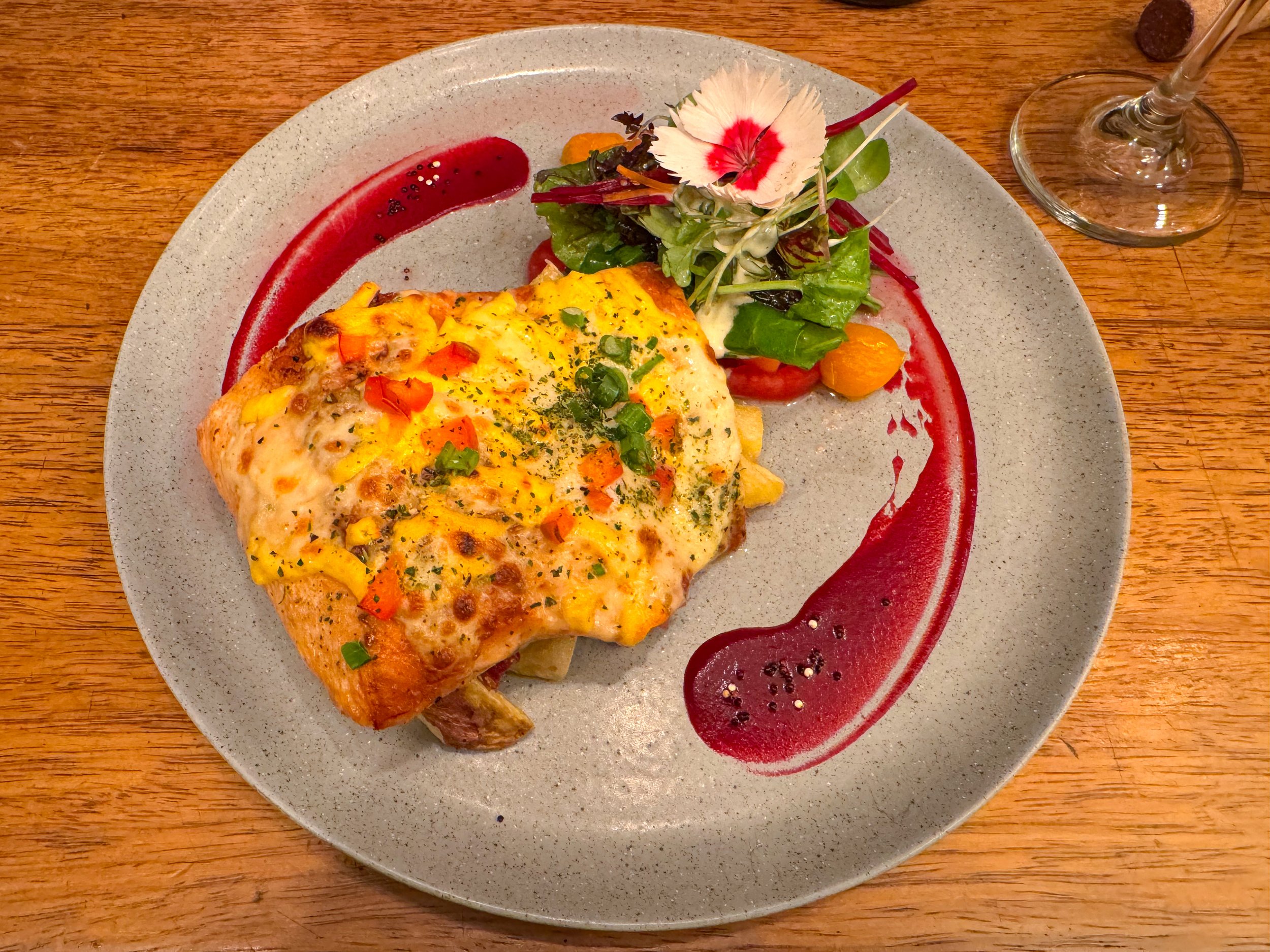
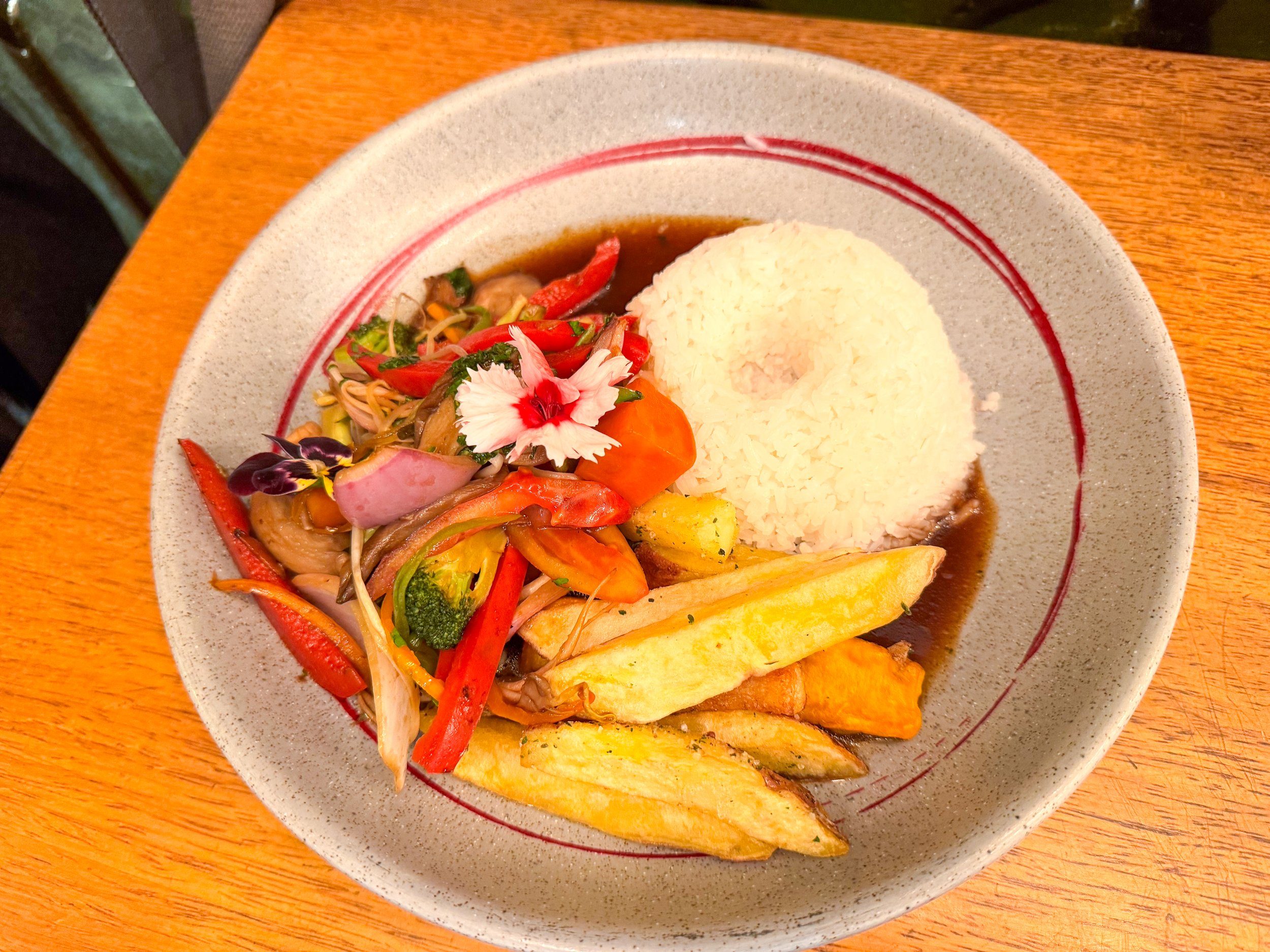
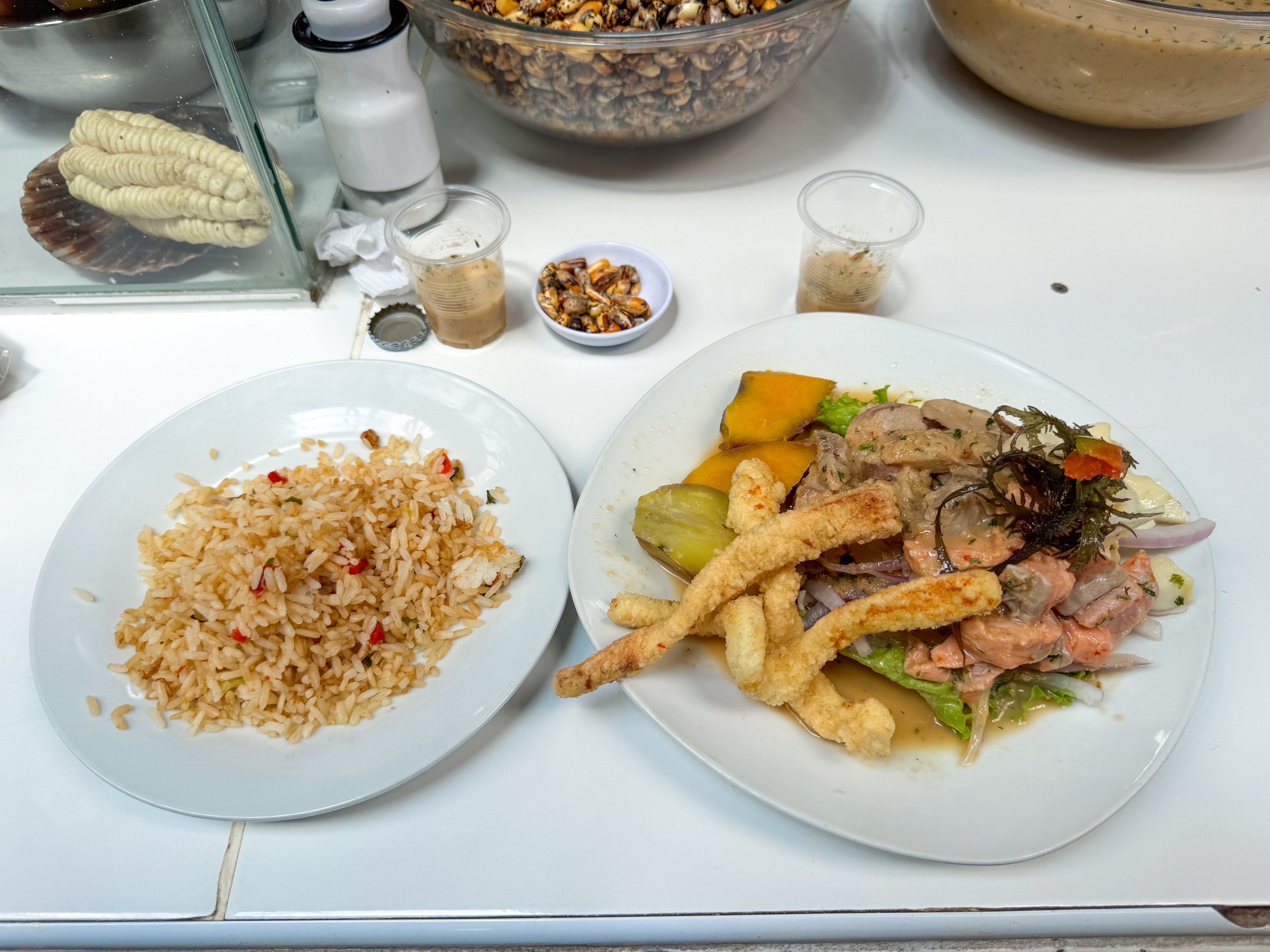

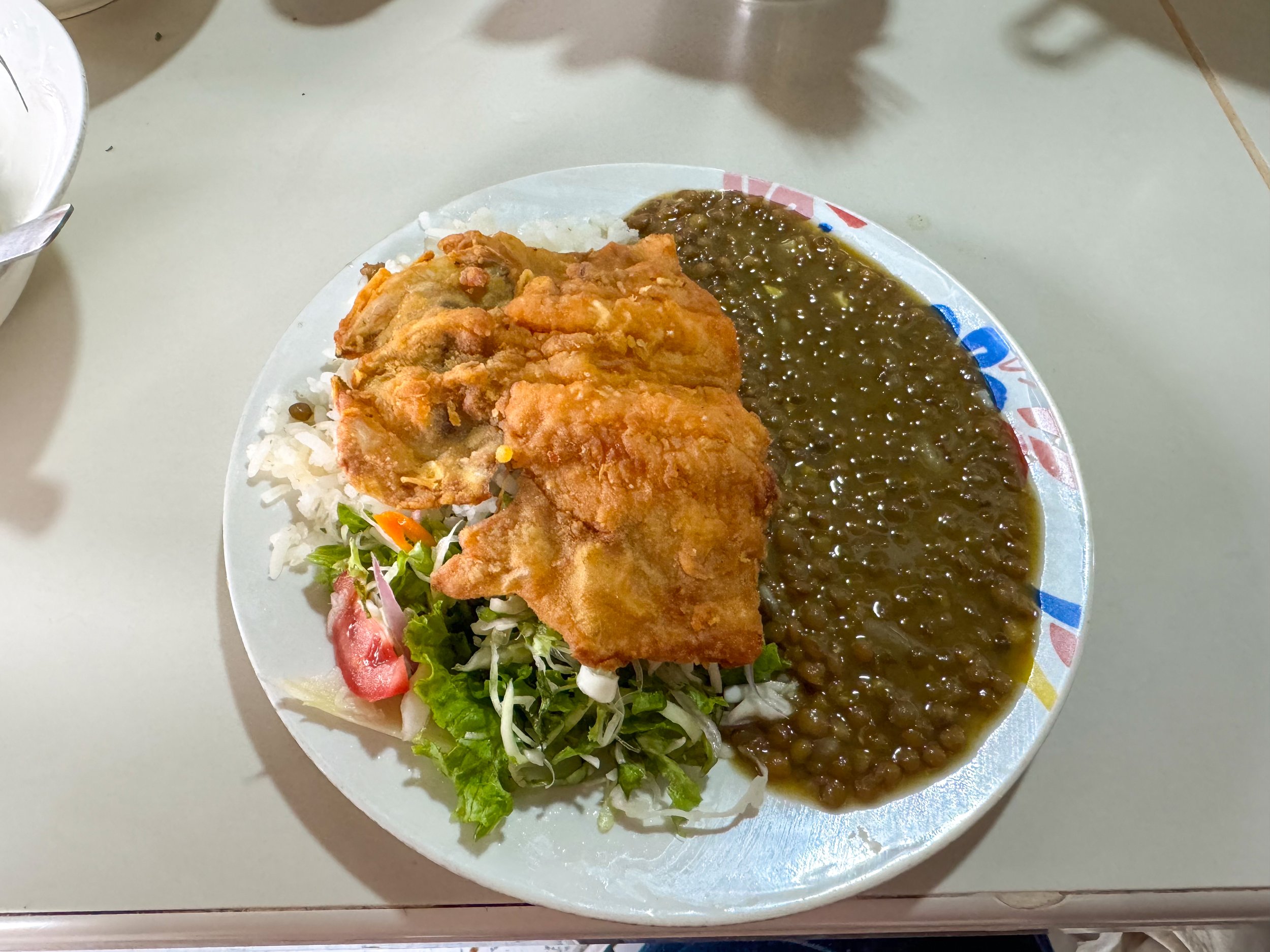
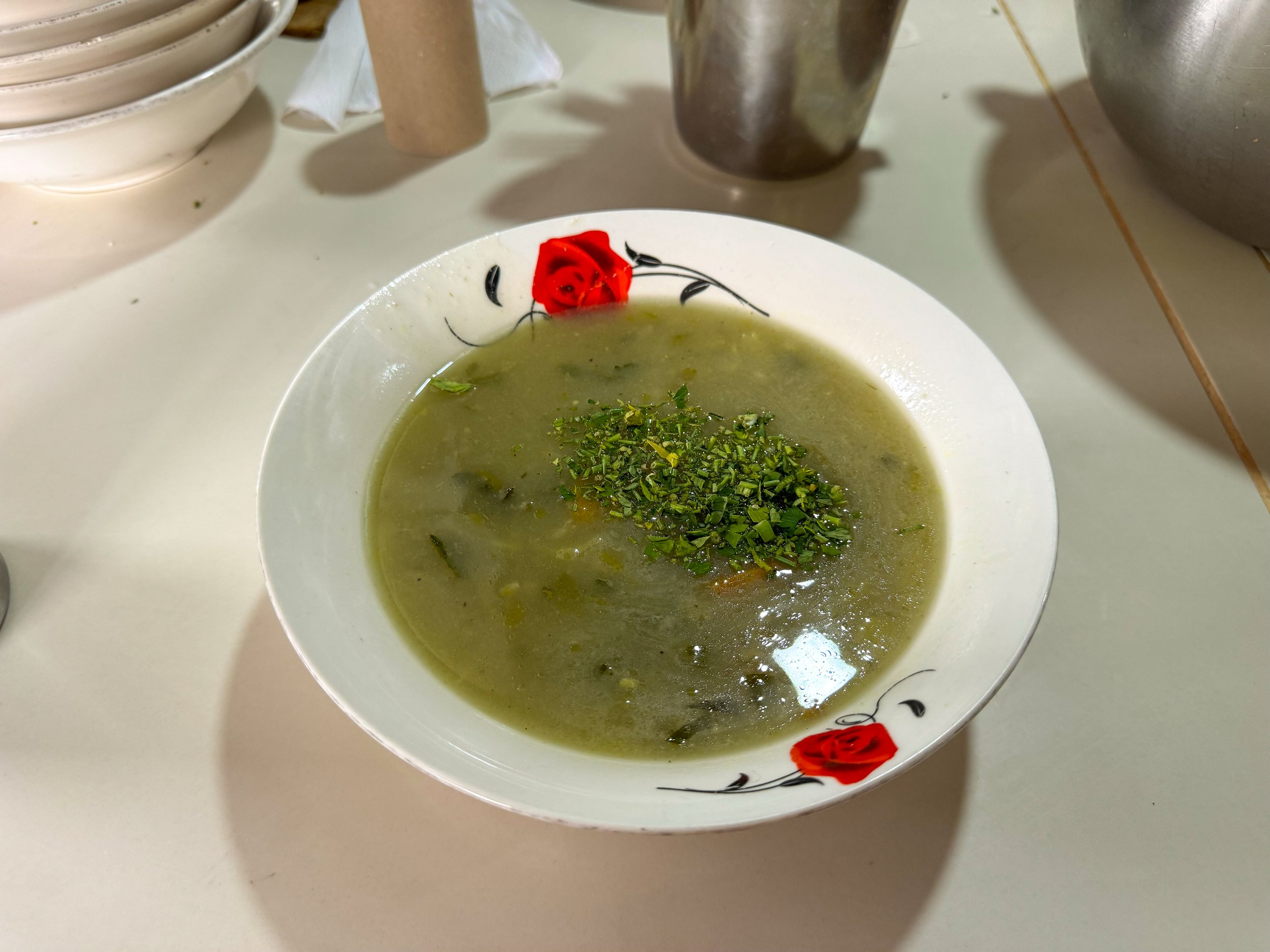


Where to Eat & Drink
Fusion Andina. A restaurant overlooking Plaza Mayor and the city’s hillside with a menu of Peruvian and Andean cuisine. We came here for dinner, overlooking the twinkling lights of the city at night while sipping on Peruvian wine. The menu includes dishes made with Andean trout, alpaca and guinea pig.
Ofrenda Peruvian Healthy Food. A Peruvian restaurant with colorful and beautifully plated meals and desserts. Come for the causas, ceviche, cheesecake and chocolate cake.
Cafe Dwasi. Come here for their specialty coffee, cappuccinos with llama artwork foam and breakfast dishes like pancakes or omelets.
Kaldi Coffee. A café and bar in San Blas with a rooftop views of Cusco, artisan coffees, empanadas, ice cream and cocktails.
Cafetoe. A coffee shop on the corner of Plaza Mayor with balconies overlooking it. We came here one chilly night for a Peruvian hot chocolate, made from milk and cocoa powder
ERA. A rooftop bar in San Blas above the Mirador de San Blas overlooking Cusco. Come here for the 2 x 30 Sol happy hour with Pisco cocktails.
Something Special. A restaurant and bar with views overlooking the clay tiled roofs, plaza mayor and Viva El Peru sign. We ordered a chicha Pisco sour and Cervesa Raymi, an artisan Cusco brewed beer.
Pizzos. Come here for the clay oven pizzas and cocktails. They have a 2 x 25 Sol happy hour for regular and flavored Pisco Sours.
KM.0. A restaurant and cocktail bar with a long list of drinks and a 2 x 28 Sol happy hour.
Barden. A bar and restaurant with a terrace overlooking Cusco and a garden with warm string lights suspended from the trees above.
What to Eat & Drink
Coca Tea. The popular Peruvian herbal tea made from the leaves of the coca plant used to combat altitude sickness. After drinking the tea, it’s common to chew on the leaves for their medicinal properties.
Trout. Andean trout is populous in the high mountain lakes and rivers. It’s served grilled, fried and as ceviche.
Potatoes. Peru is known for having thousands of variety of potatoes. They’re served mashed in causas, fried and in soups & stews.
Choclo con Queso. Boiled Peruvian corn wrapped in a grilled piece of Peruvian cheese.
Alpaca & Guinea Pig. We don’t eat meat however we saw both animal on the menu in restaurants across the city. Alpaca can be served as a steak while guinea pigs are often served whole.
Tumbo. A popular Peruvian fruit that’s a cross between a passion fruit and pomegranate.
Cherimoya. A green scalloped tropical fruit with a custardy interior and large black seeds with a taste similar to strawberry ice cream.
Cusqueña. One of Peru’s national beers easily identifiable by its bottle cap with Machu Picchu on it and a bottle embossed in Incan stone work. It comes in three varieties, Dorado (Golden), Wheat and Negro (Stout).
Inka Chips. A local brand of potato chips made from Peruvian potatoes.
Where to Stay
Inti Wasy. We stayed at an Airbnb in San Blas neighborhood with panoramic views of the Cusco Valley. The private apartment had a comfy bed, well outfitted kitchen and laundry machine. The space feels authentic with Incan and Peruvian decor. We were thankful to have an incredibly kind host and family of doggies to greet us throughout our stay. Book here!
Cusco Plaza Hostel. A boutique hotel on the corner of the Plaza Mayor in the city center. We visited a friend of ours staying here. The rooms are basic but the rooftop is a tranquil place to enjoy a bottle of Peruvian wine and the views of the city’s rooftops and cathedrals. Book here!
Good to Know
The Boleto de Touristo. A ticket that includes entry to a majority of the Incan ruins in Cusco and the surrounding valleys as well as several museums in the city. Tickets can only be purchased by cash in person at the tourist office one block from the Plaza de Armas
The Altitude. Cusco is 3,339 meters (11,152 ft) above sea level. It takes some adjusting to get used to. After a few days, we no longer felt winded or tired.
Language. People in Cusco speak Spanish. Outside of the restaurants and shops in the Centro Historico, few locals speak English.
Cash vs. Card. Cash is preferred at businesses and museums across Cusco. When using Peruvian Sols, make sure to carry small bills and coins.
For Next Time…
Return to Machu Picchu. We visited the ancient Incan city in 2016, passing it by on our recent trip to Cusco. When we return for a third tome, we would love to revisit the awe inspiring world wonder that is Machu Picchu.
Ollantaytambo. Our tour of the Sacred Valley did not include enough time at Ollantaytambo. Next time, we plan to stay at one of the hostels and take at least an entire day to explore the ruins, mountain trials and terraces.
Skylodge. Having seen the iconic cliffside hotel made from geometric glass pods suspended from the mountainside, we fully intend of staying here during our next trip to the Sacred Valley.
Visit The South Valley. We had a tour booked to visit the Incan and Wari ruins in the South Valley but couldn’t make it due to an emergency. This will be one of the first sights we see next time in Cusco.
The Mountain Lakes. Due to melting ice, several mountain lakes and lagoons have formed over the past decades. The most famous are Humantay Lake with turquoise waters and Laguna Roja with chocolaty red waters.



